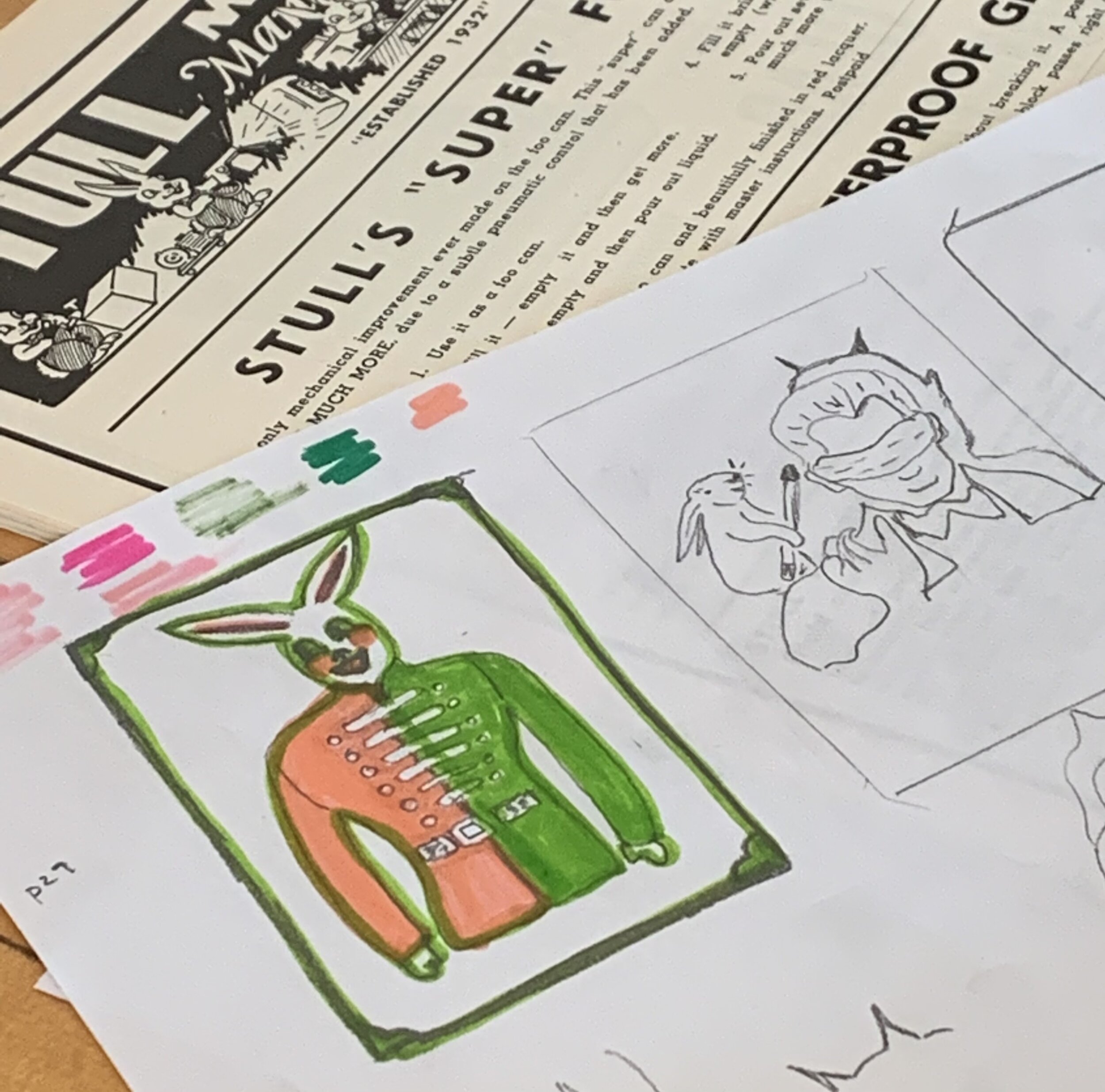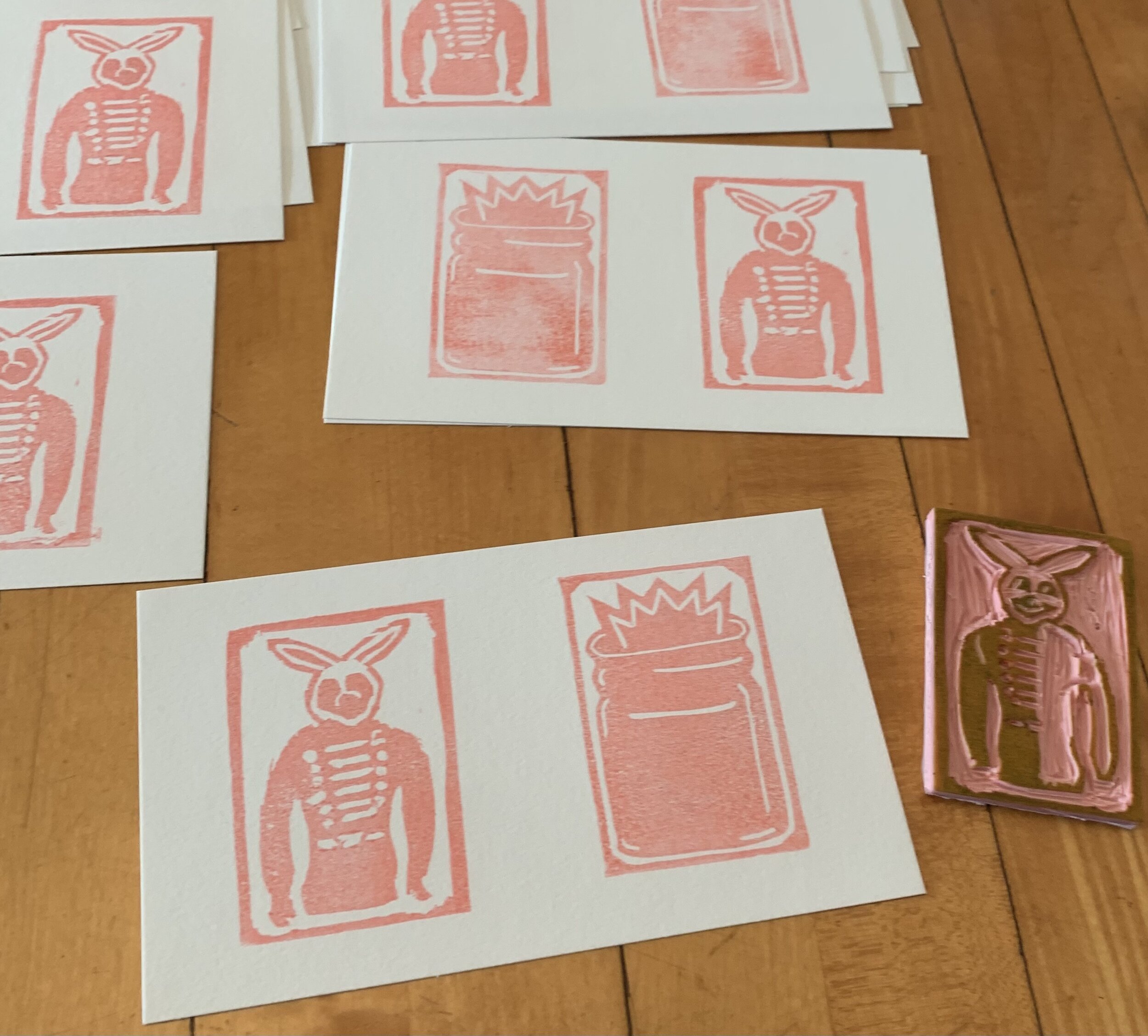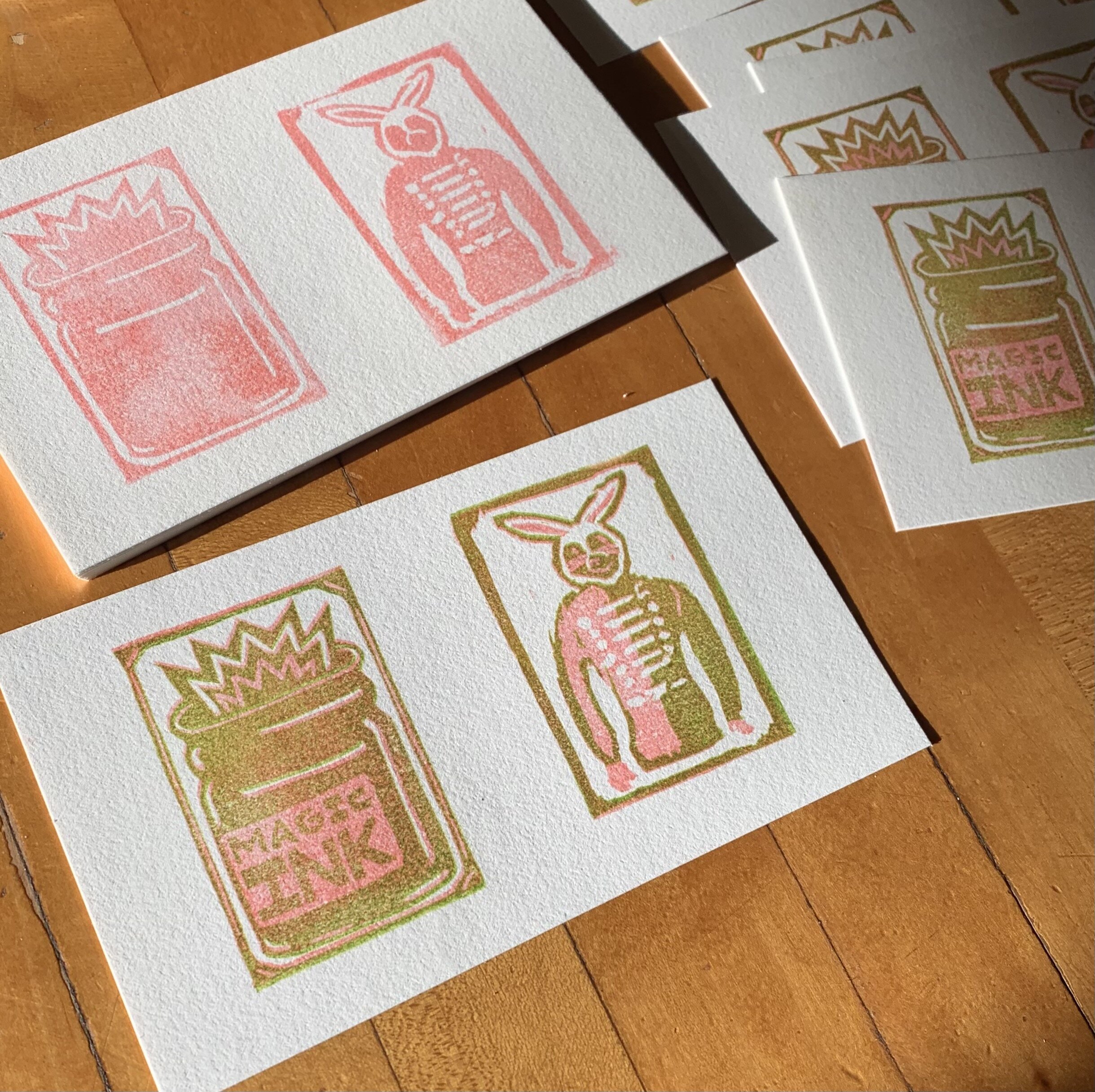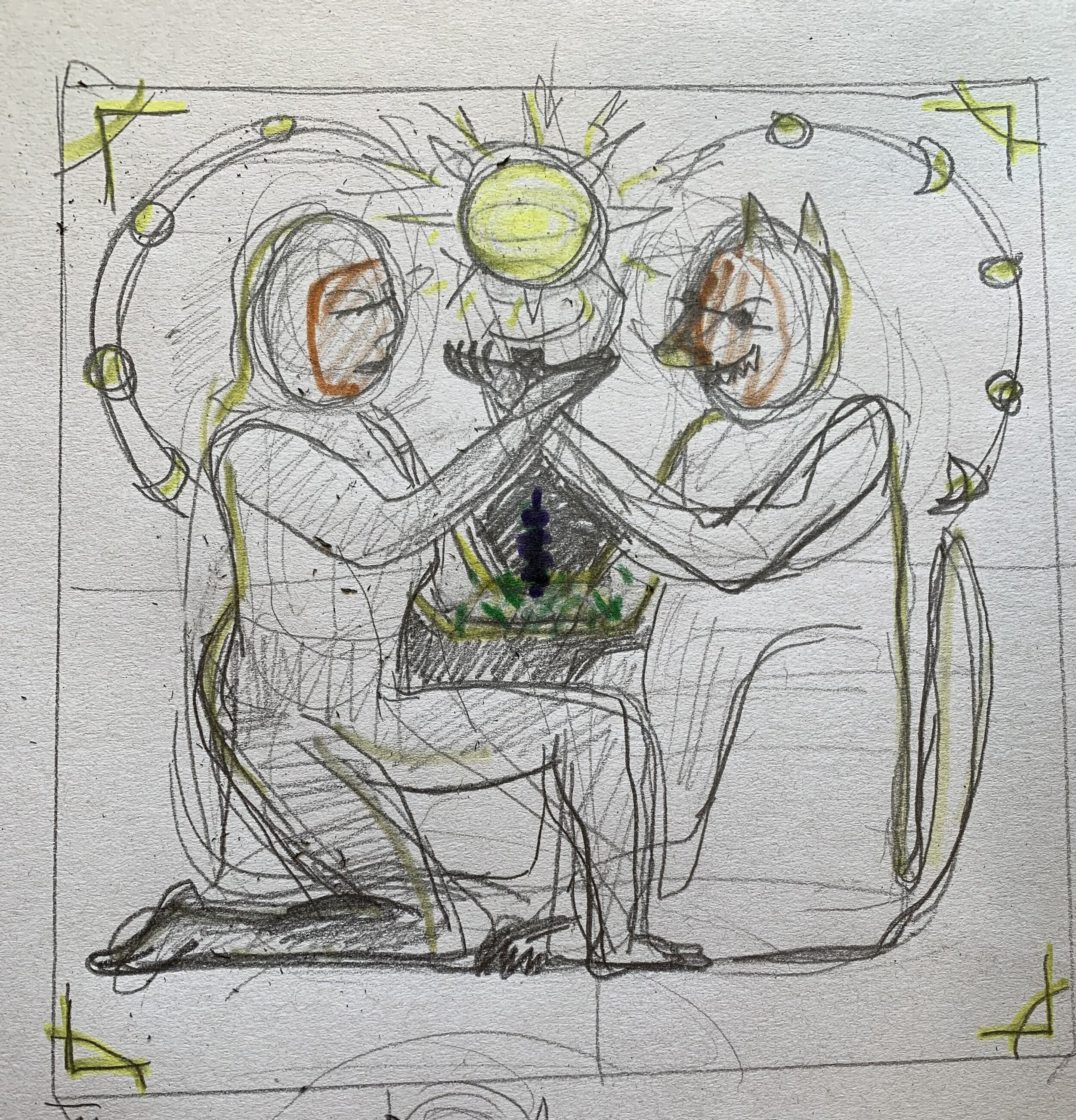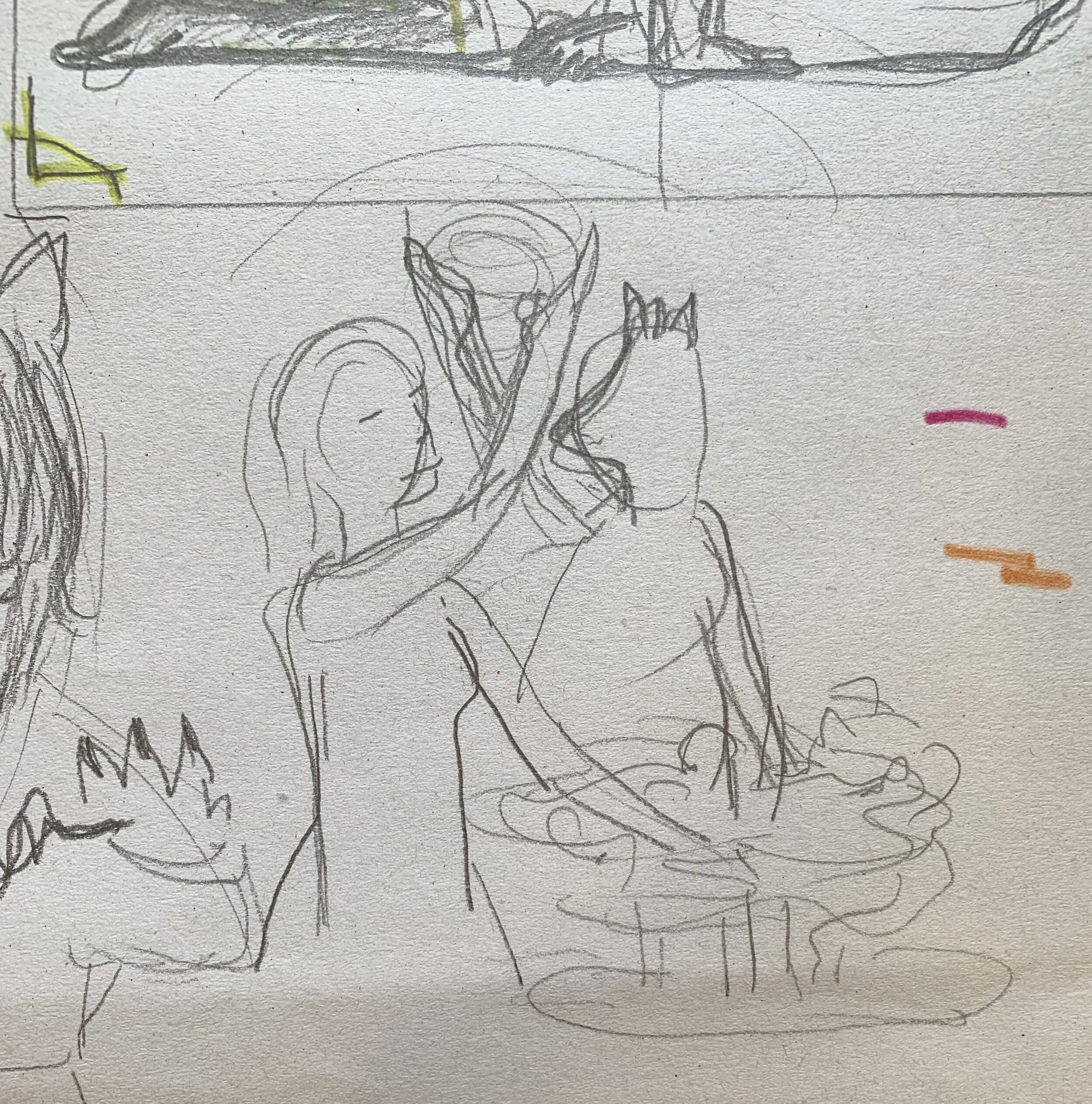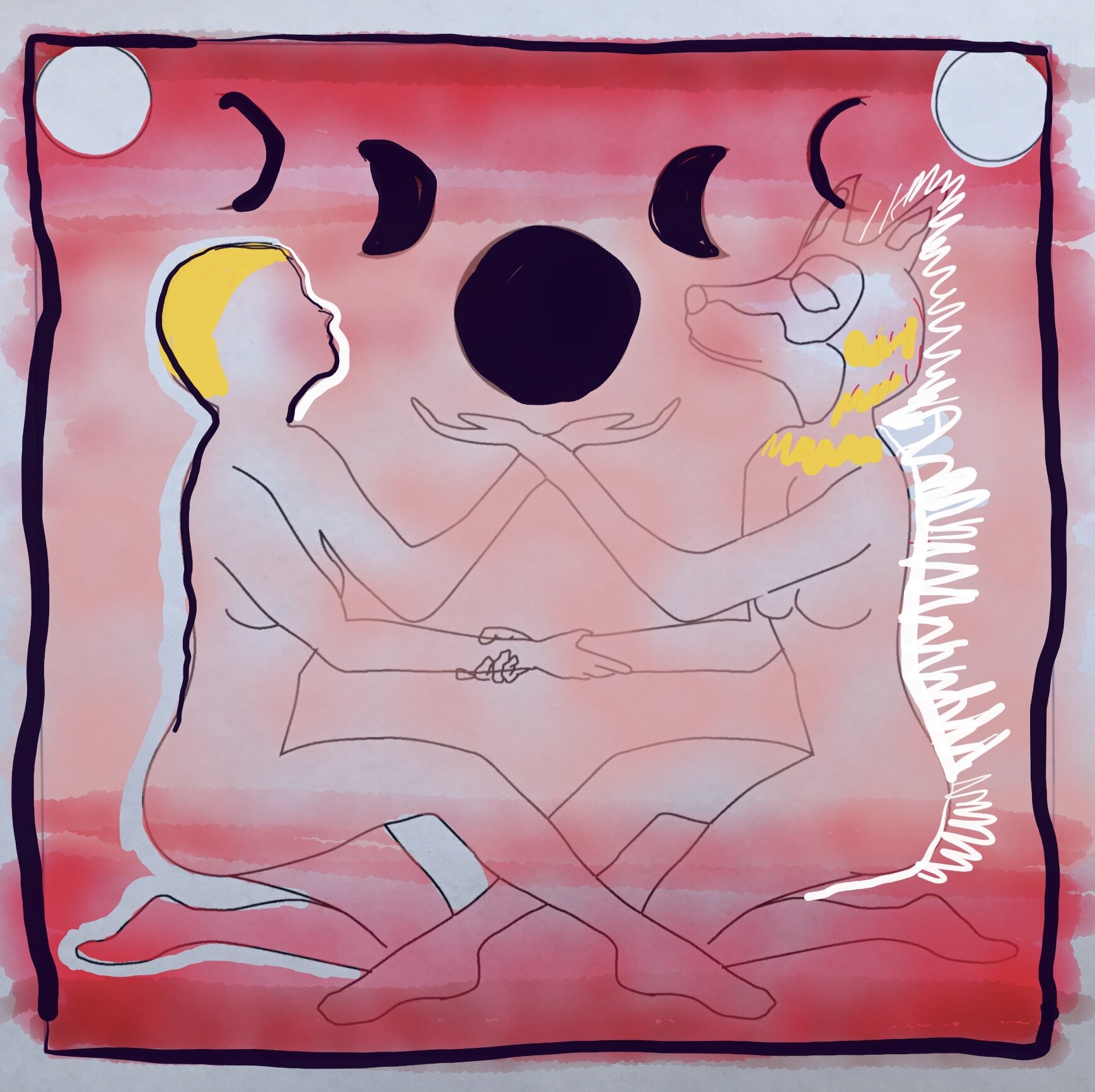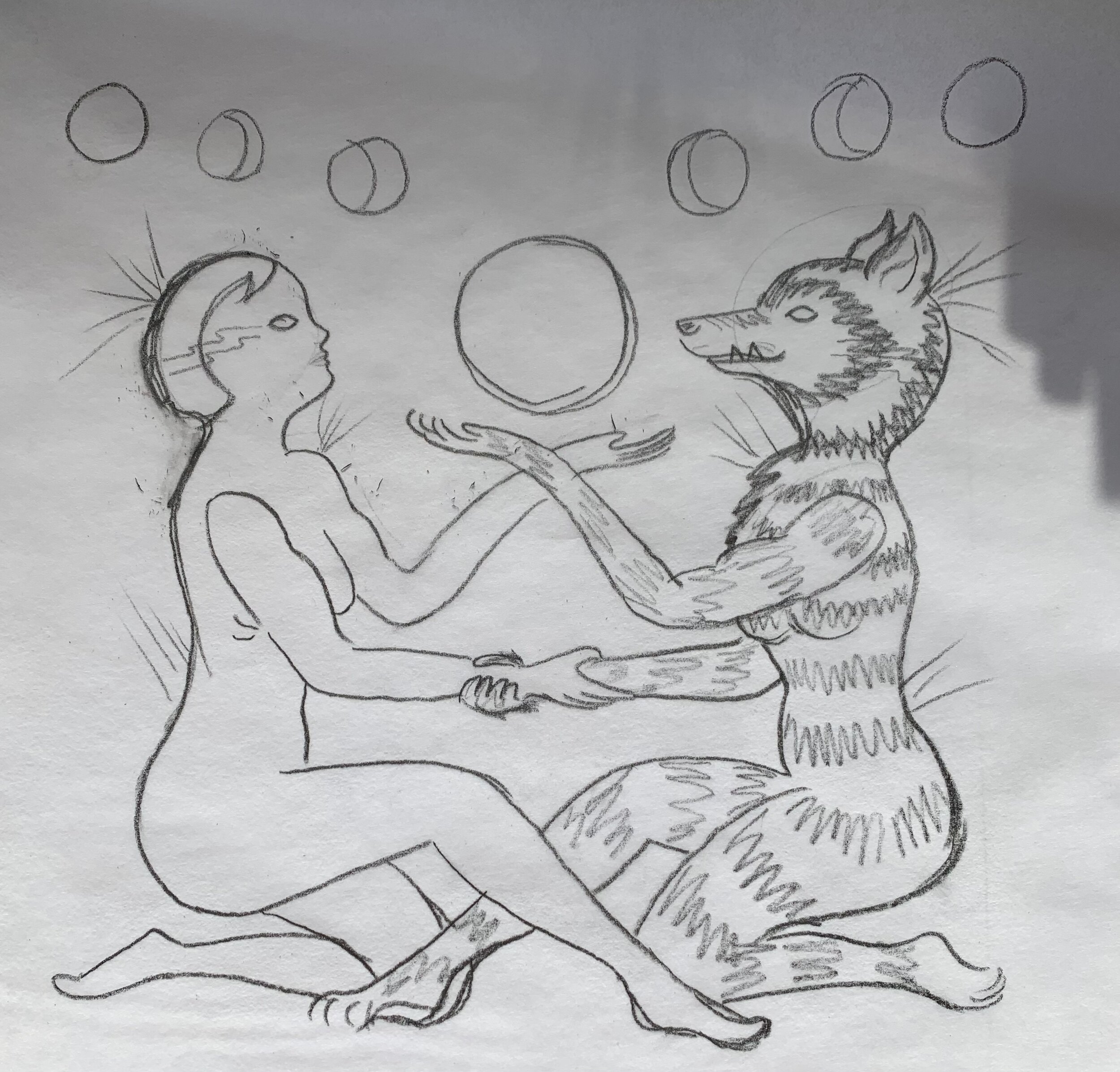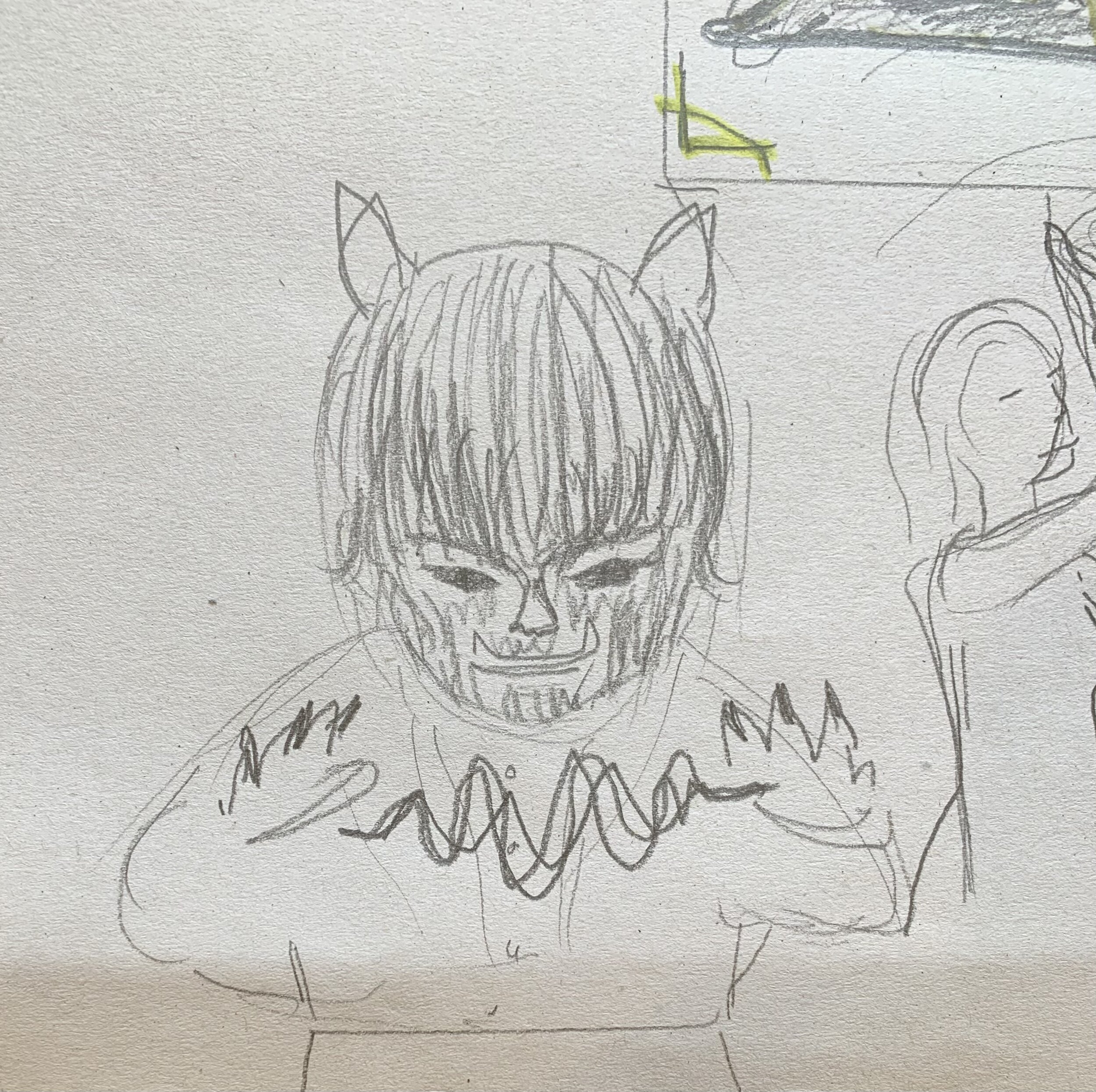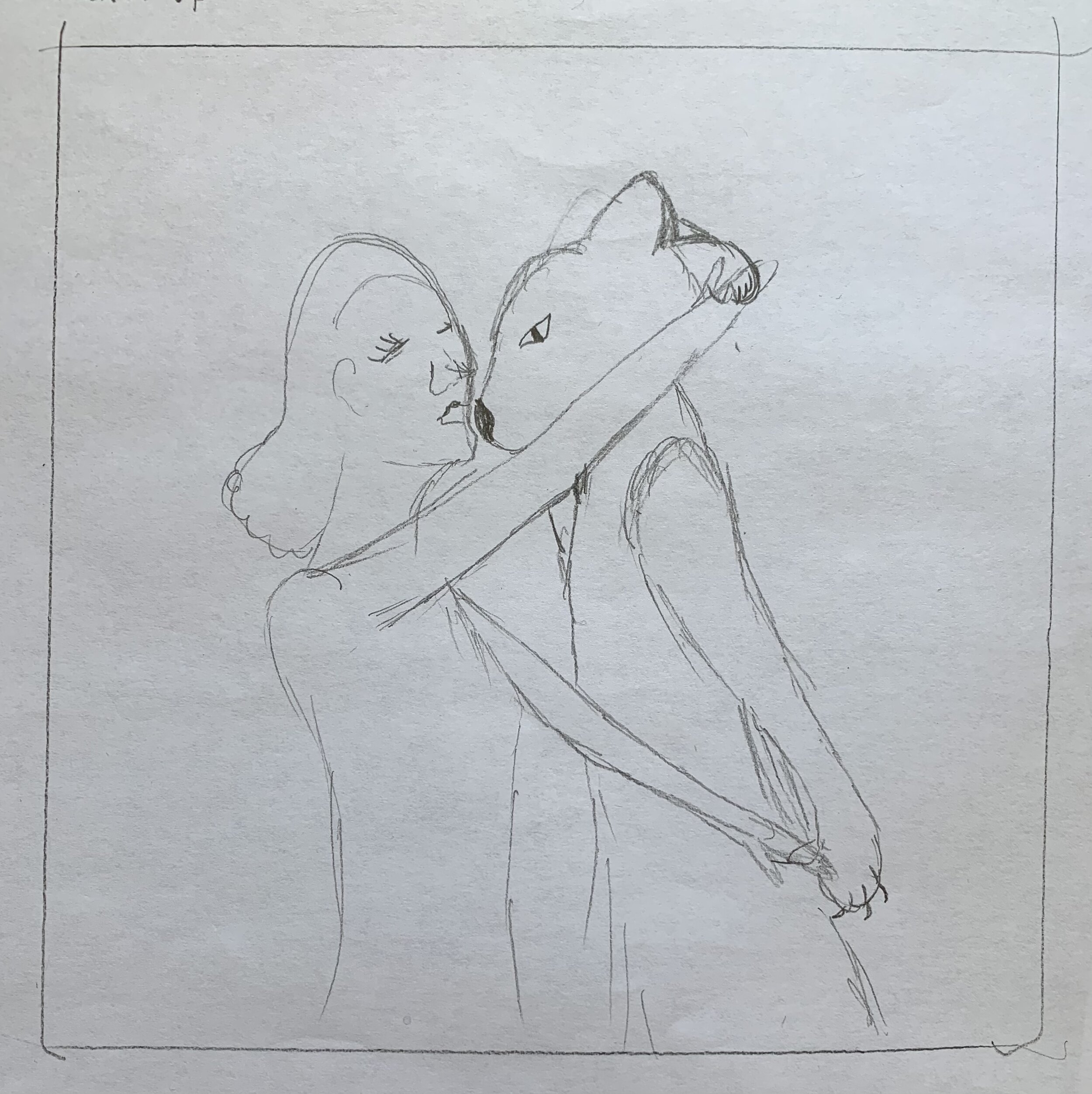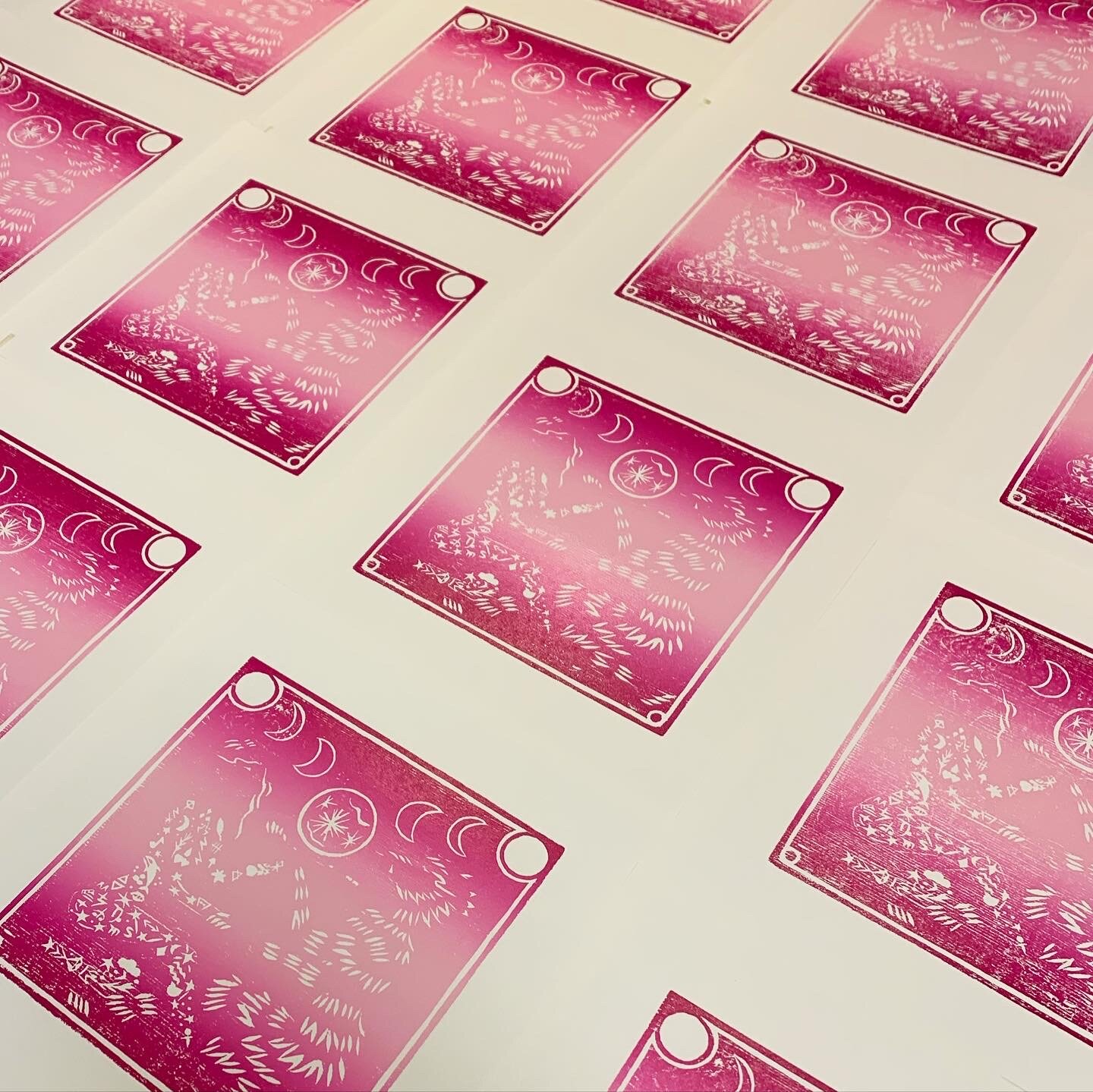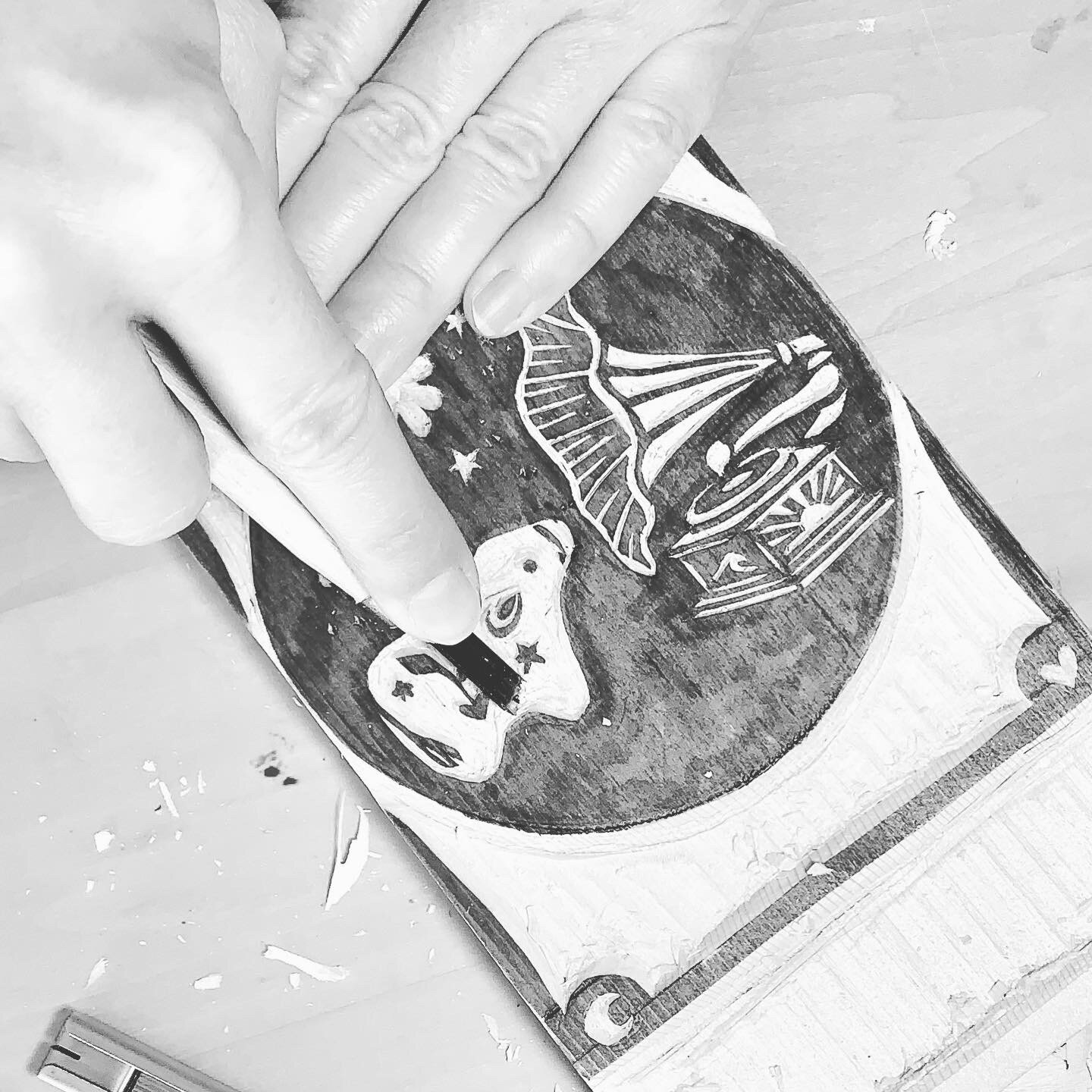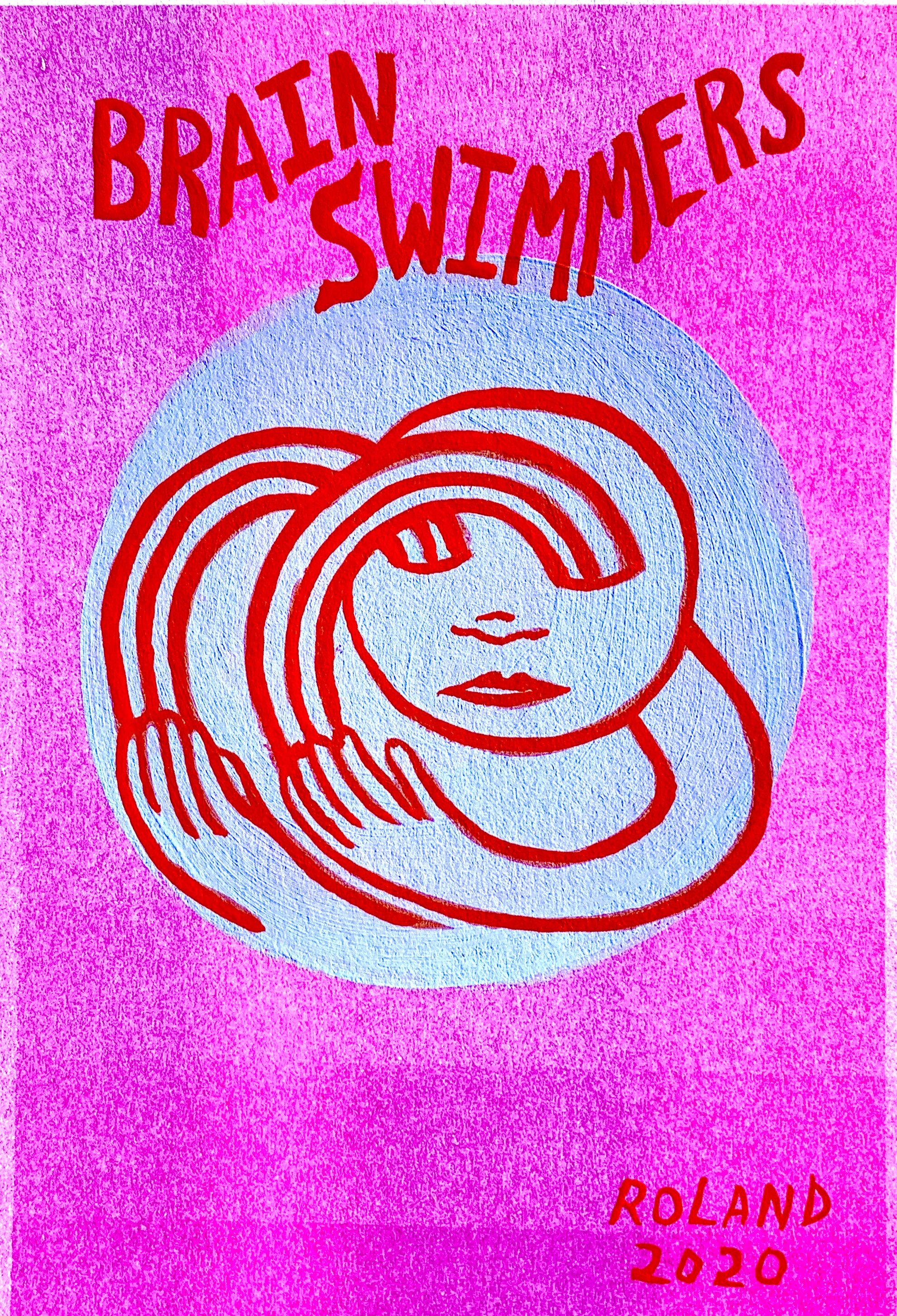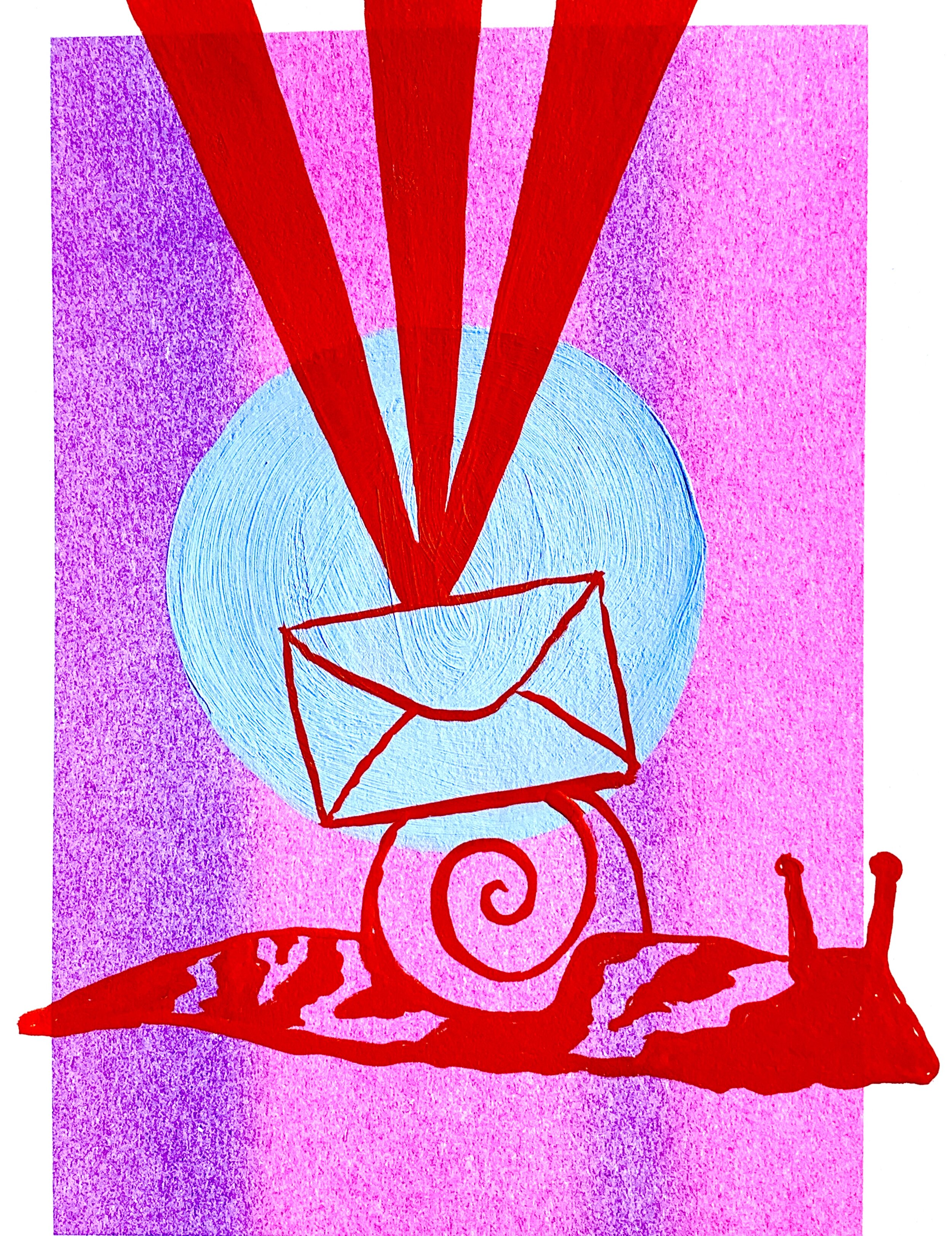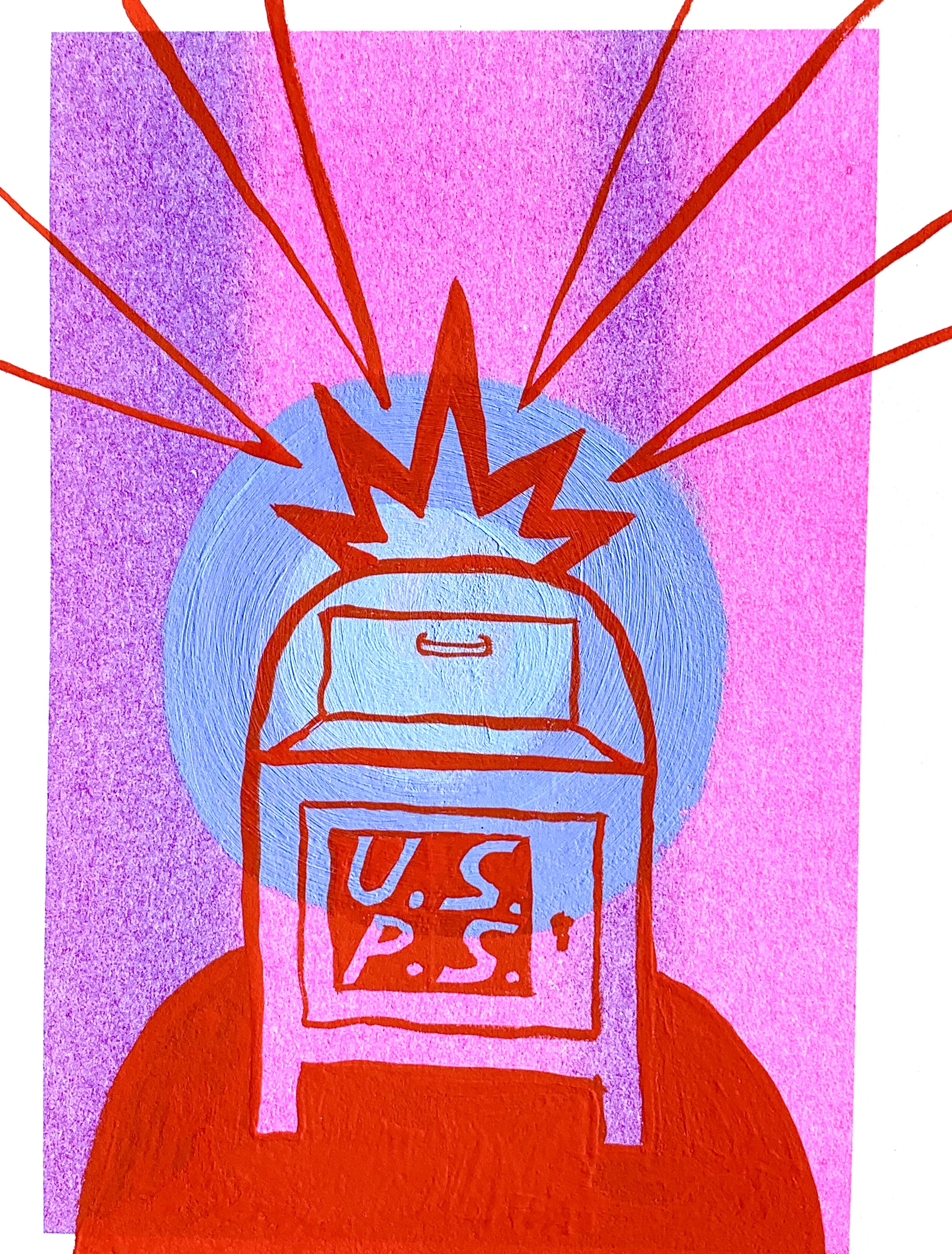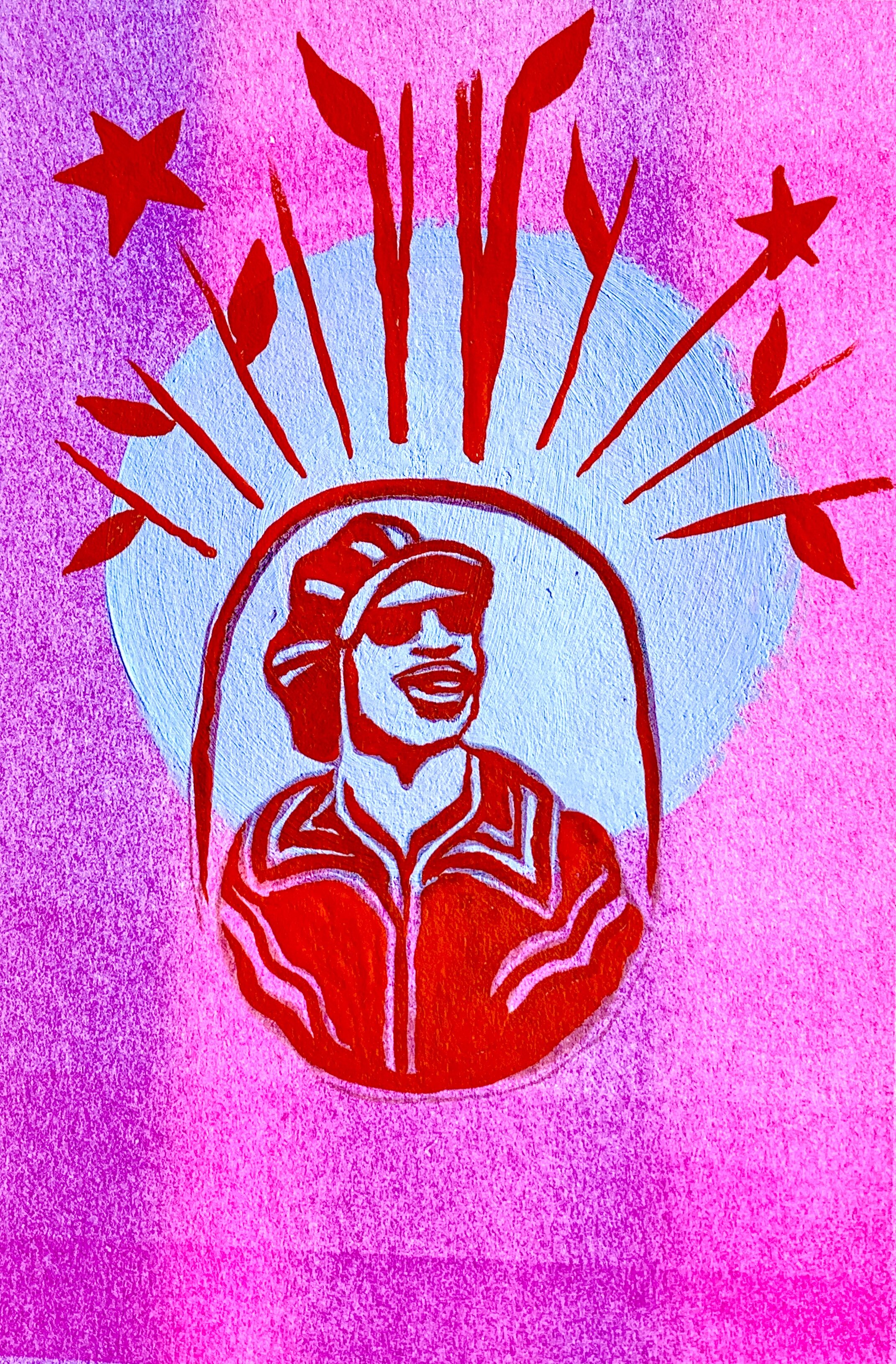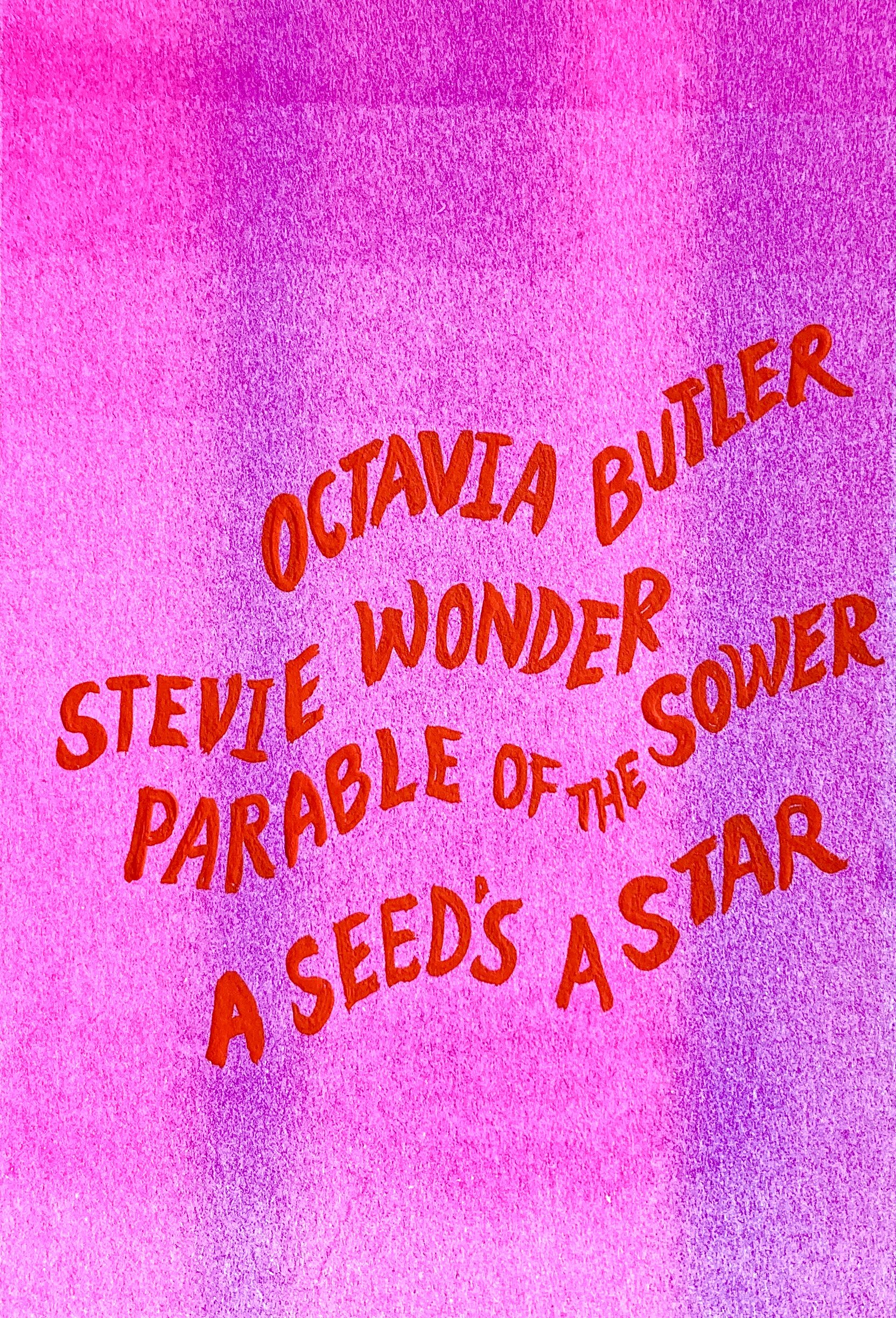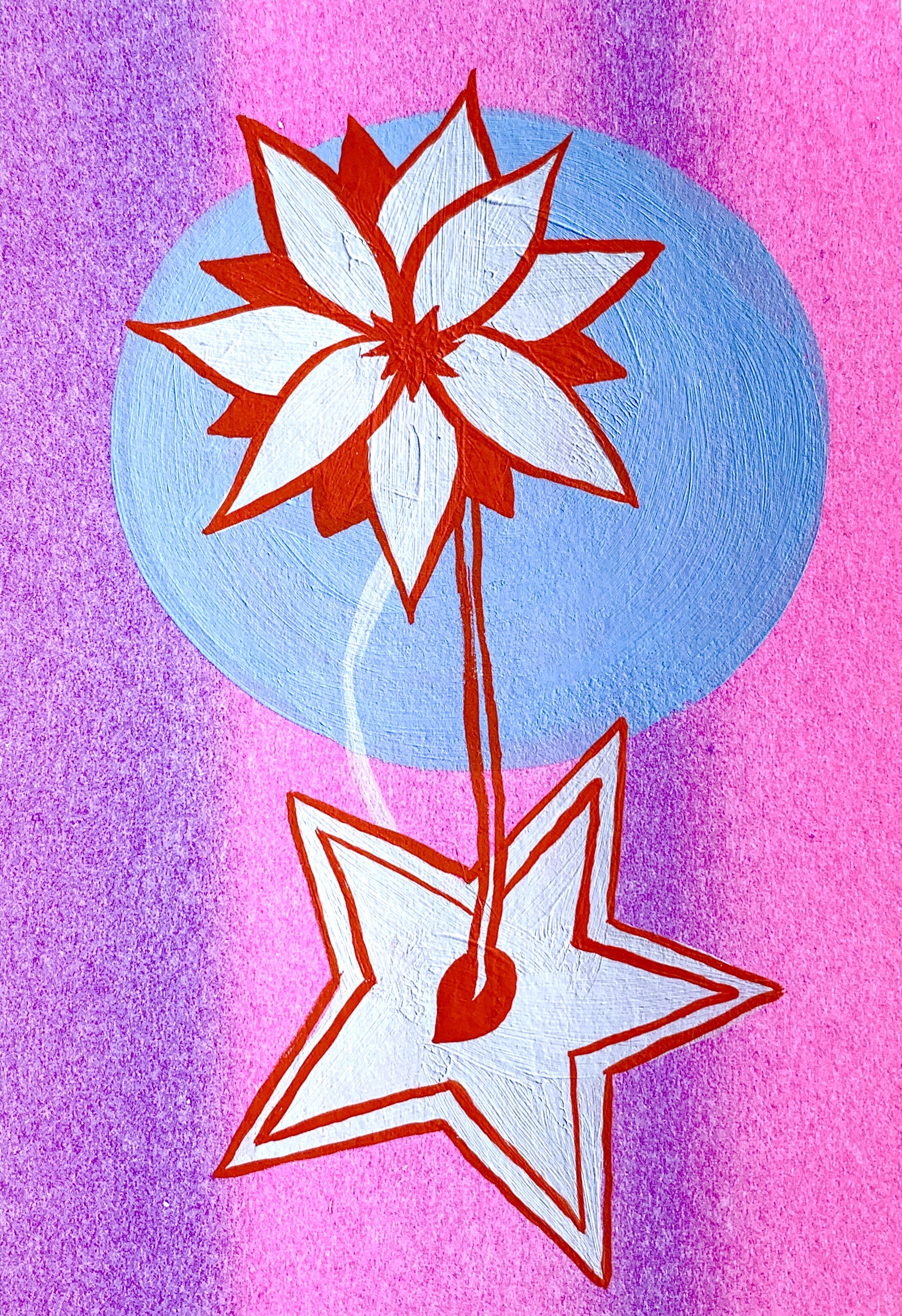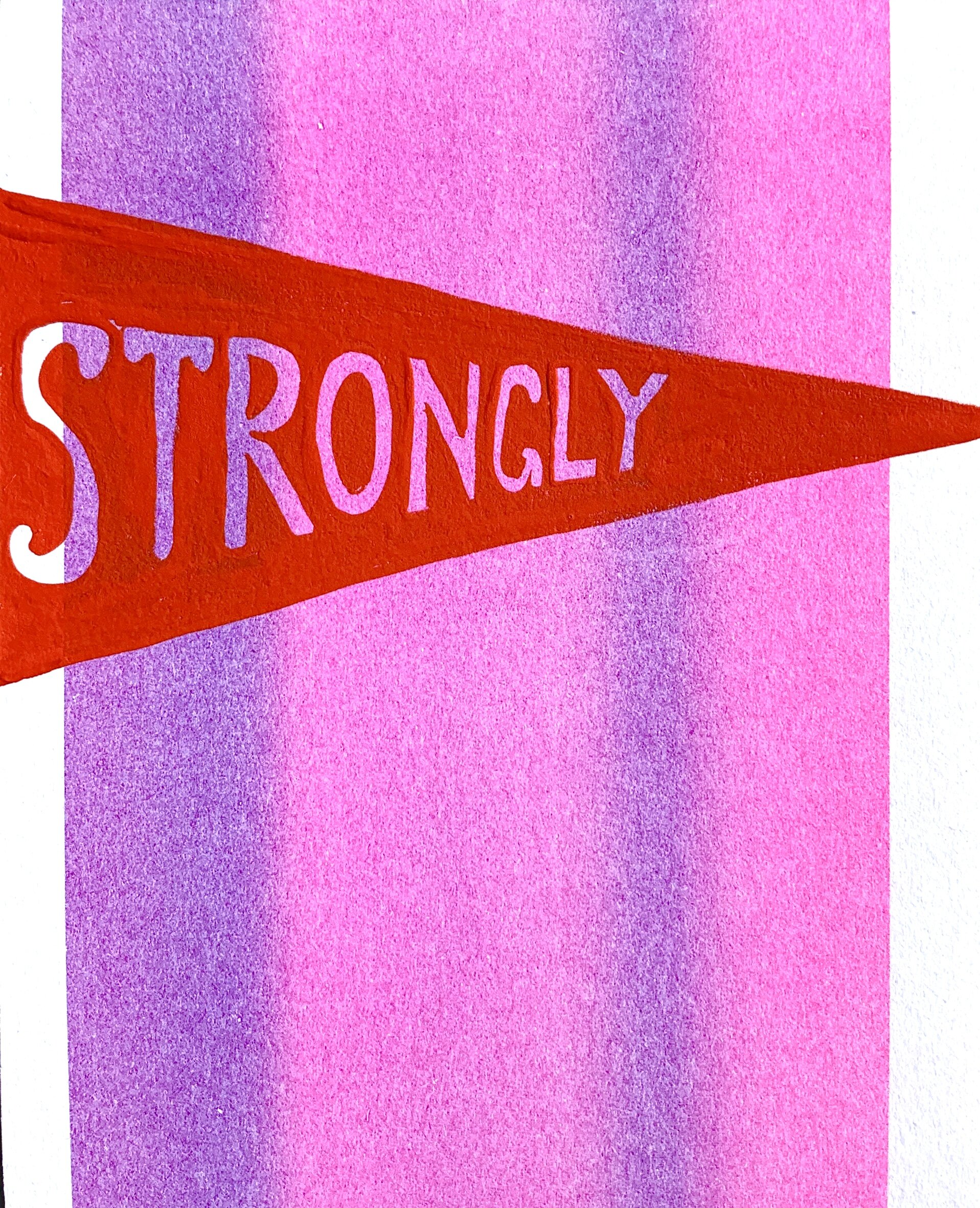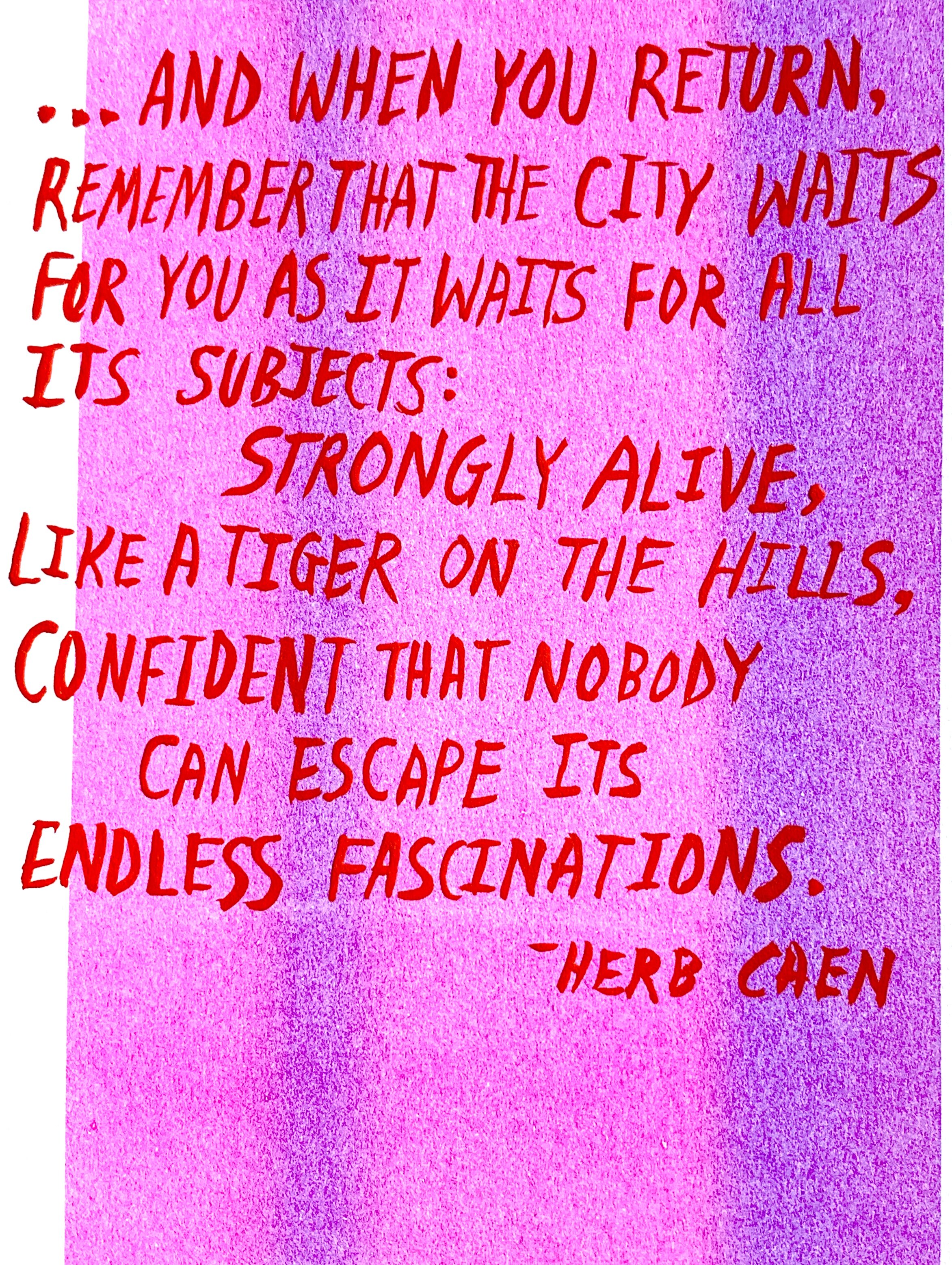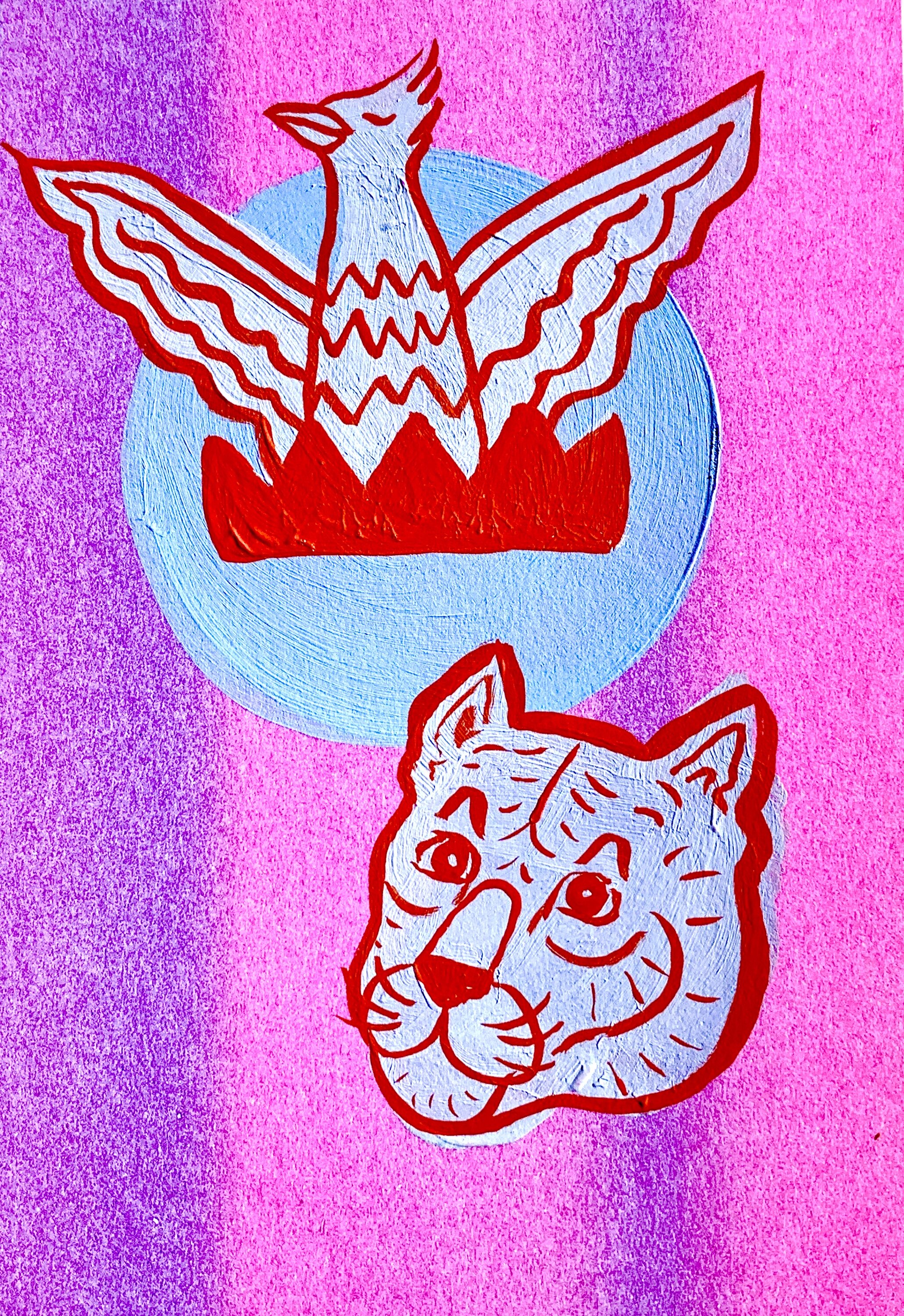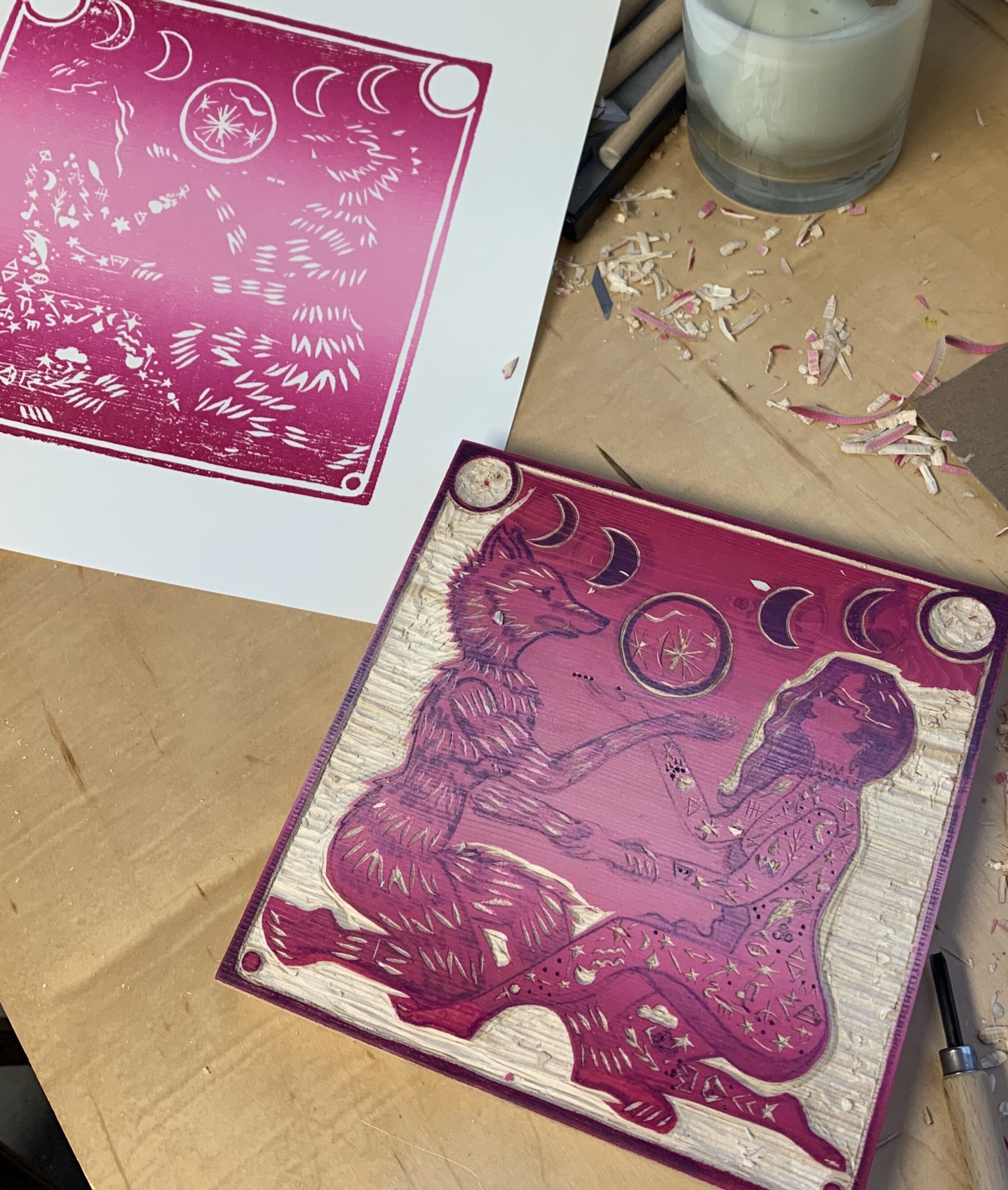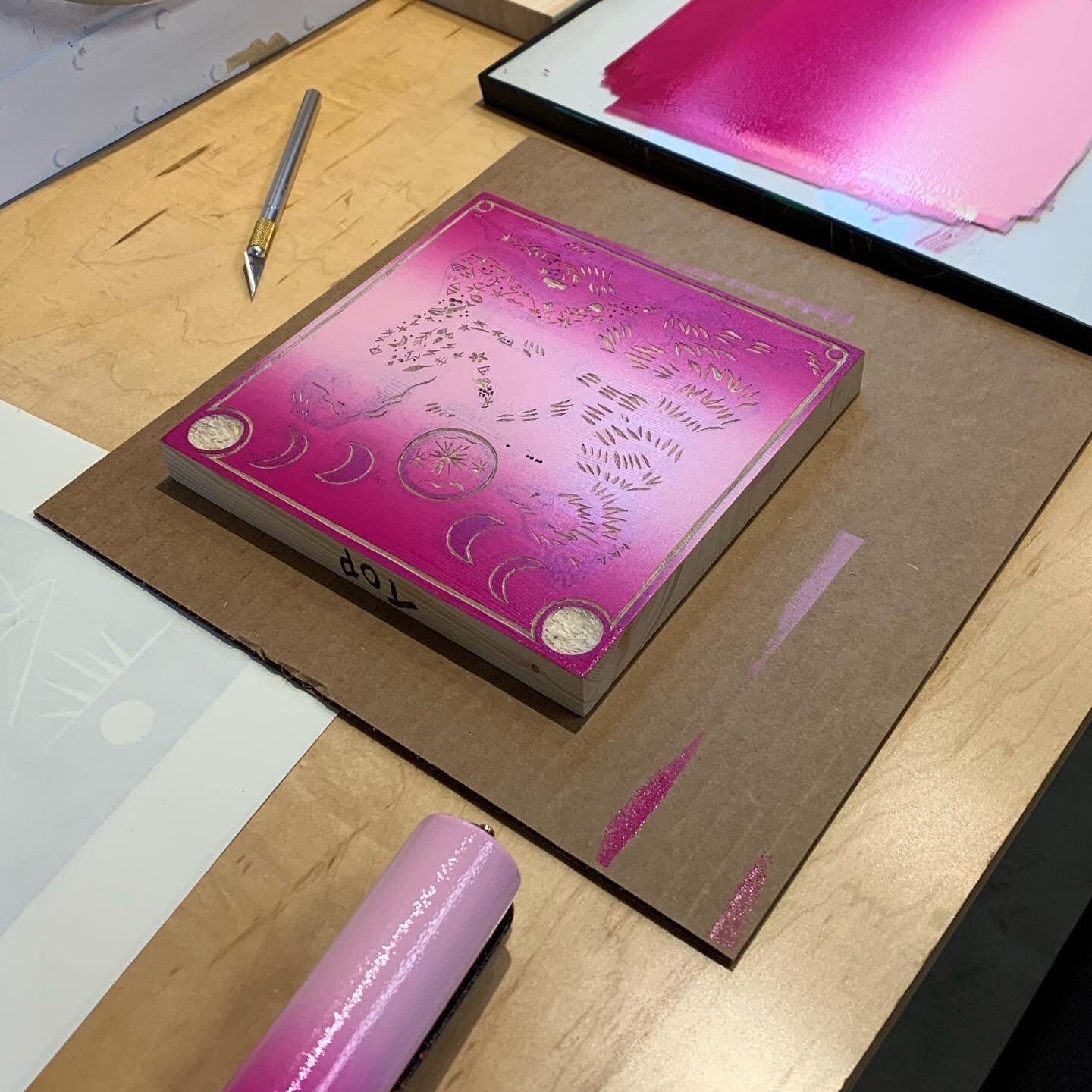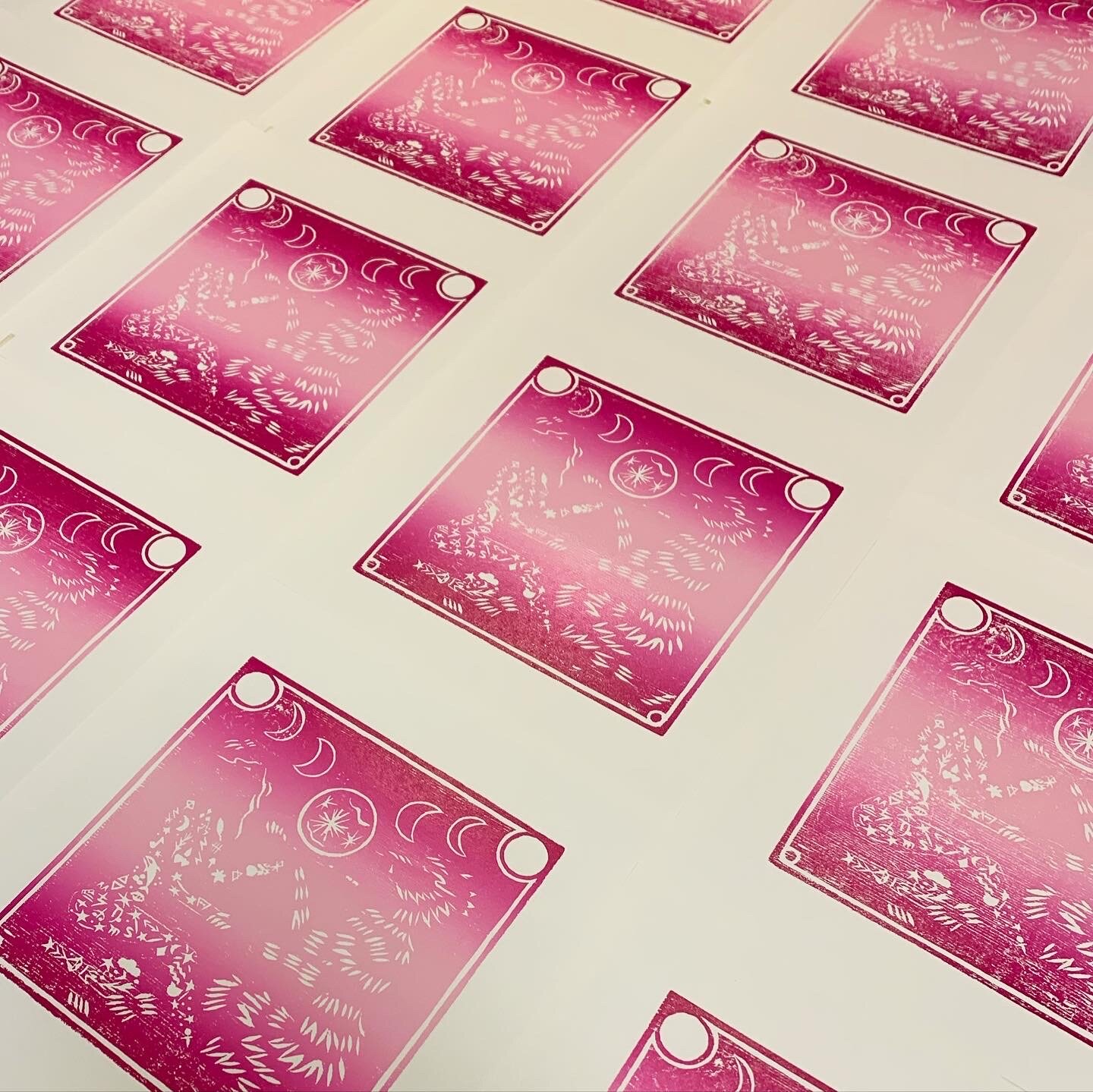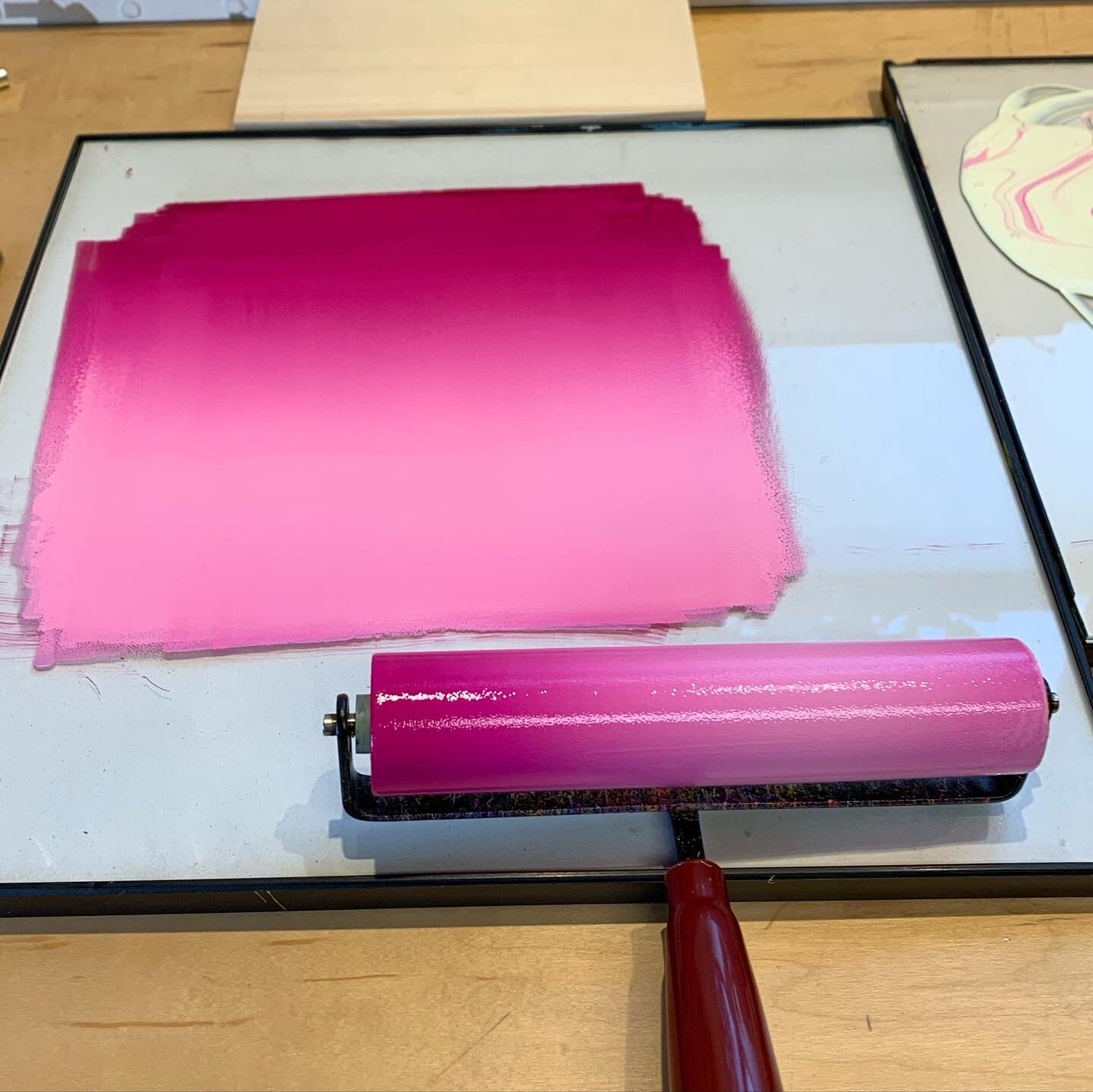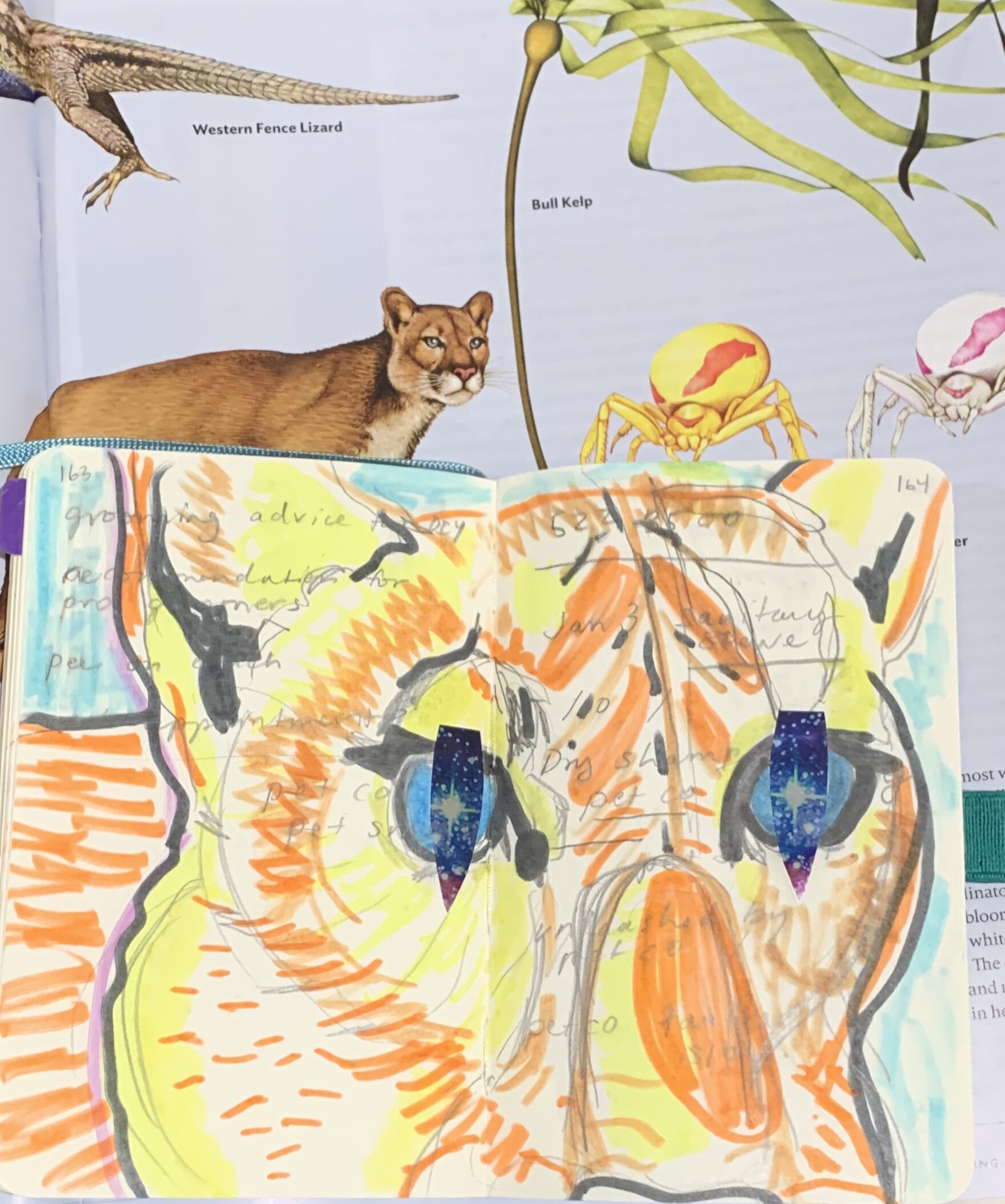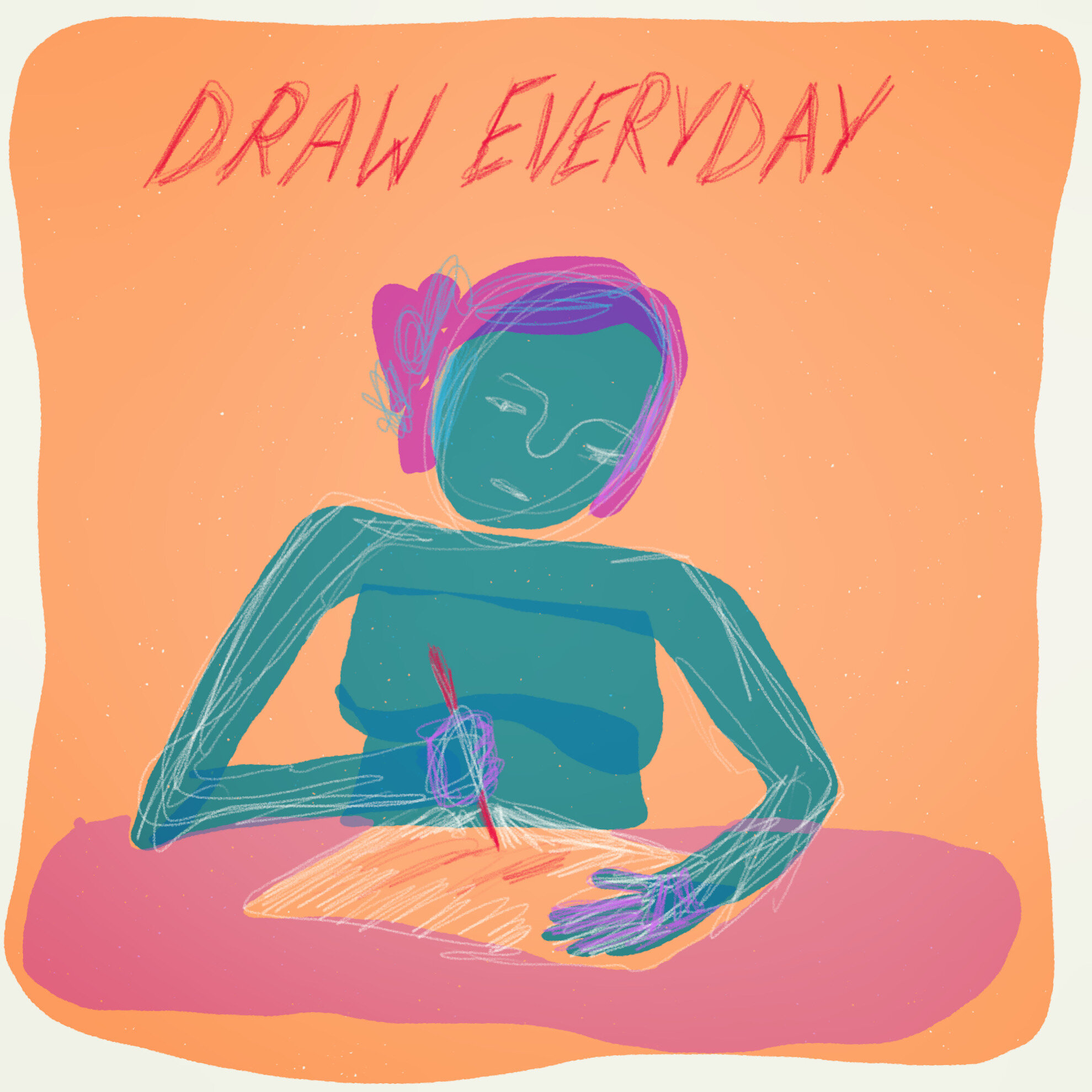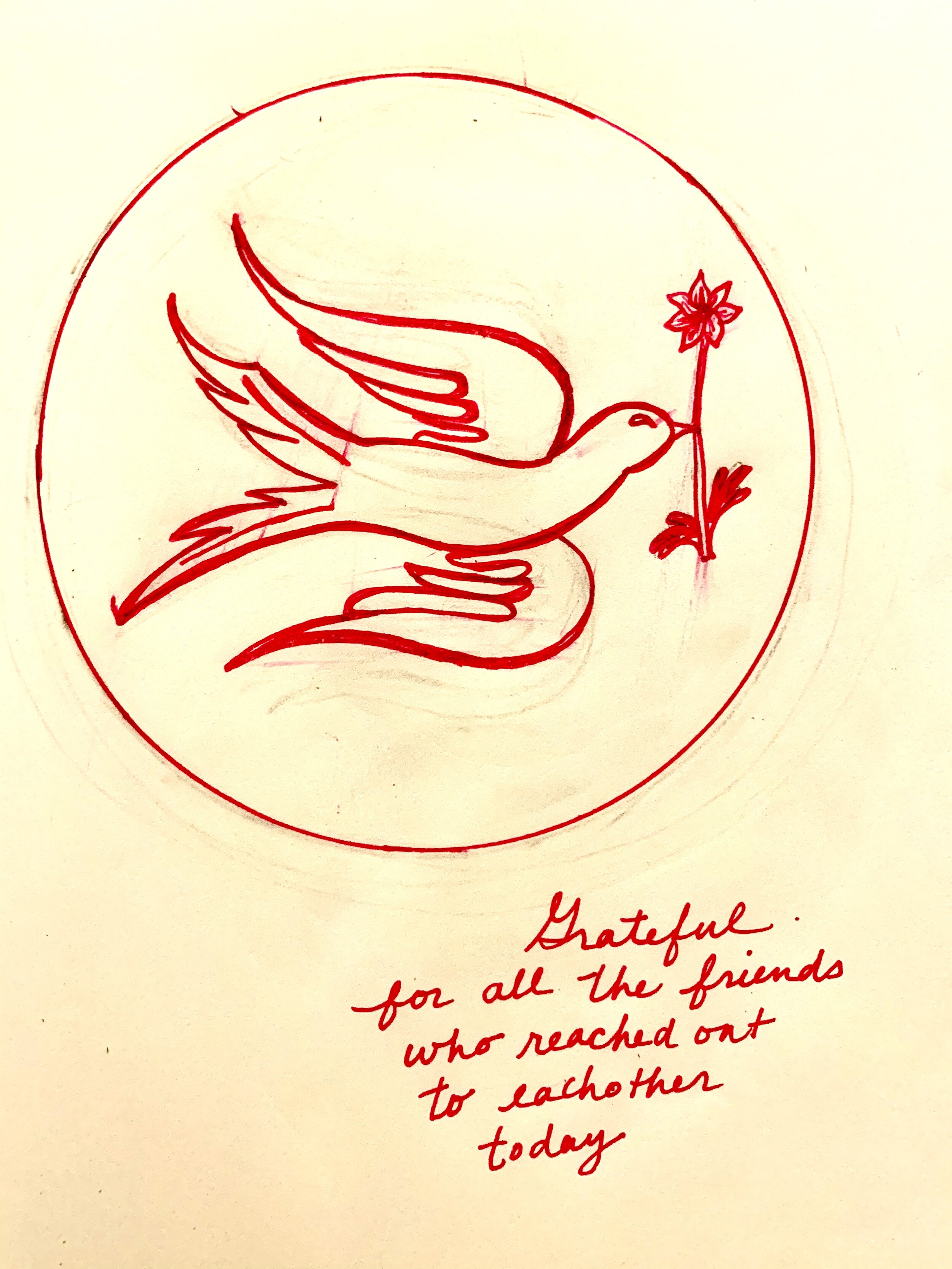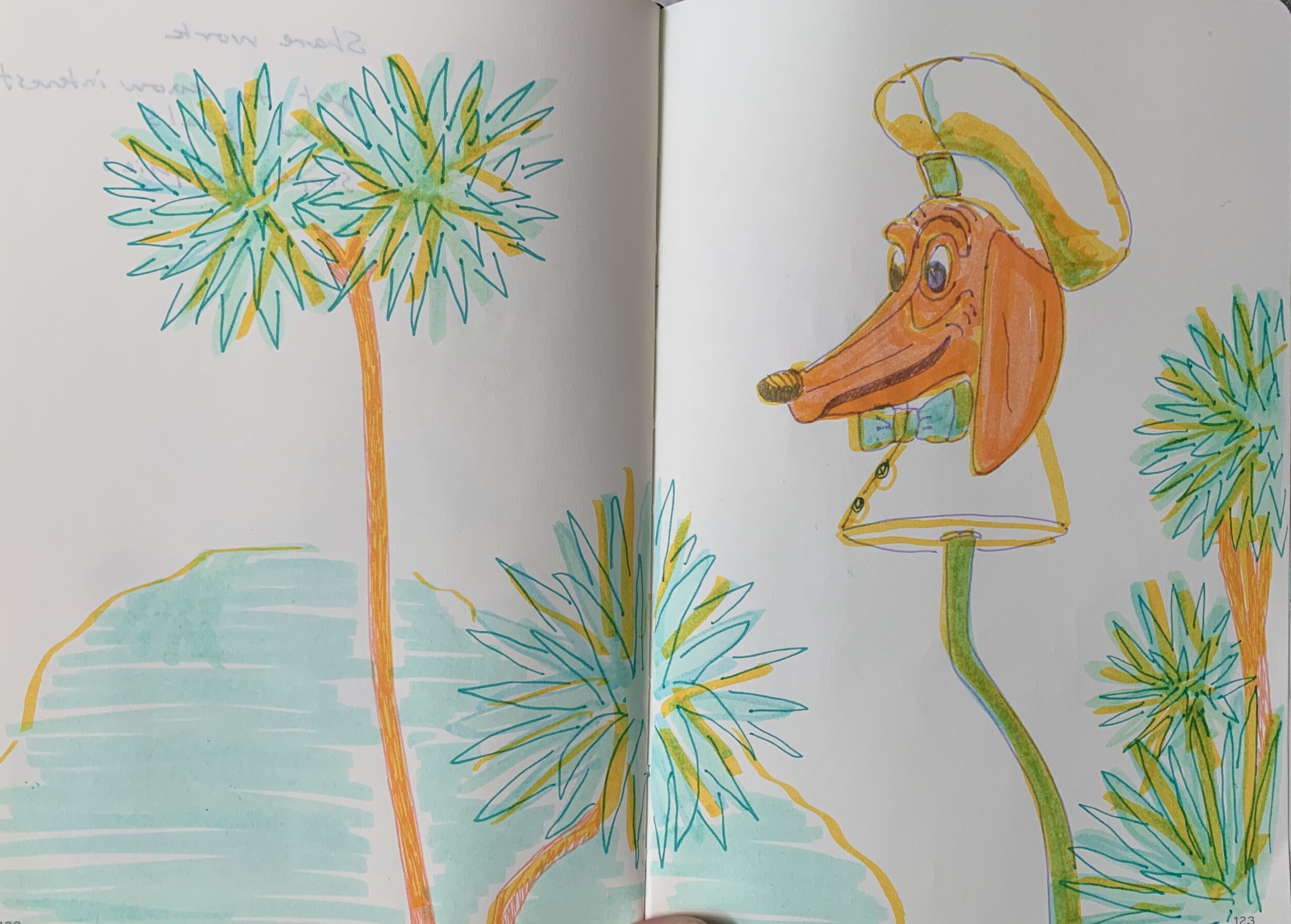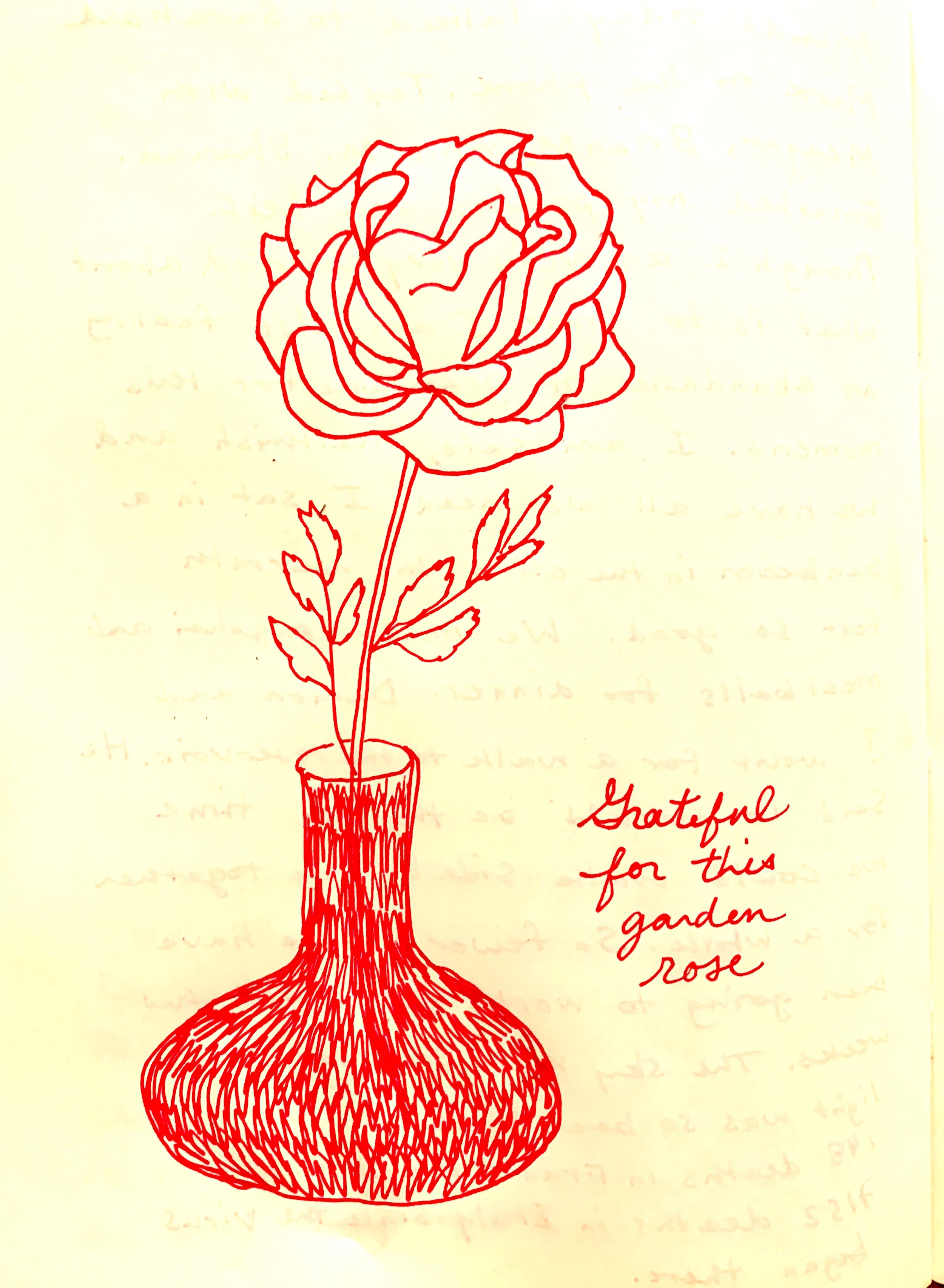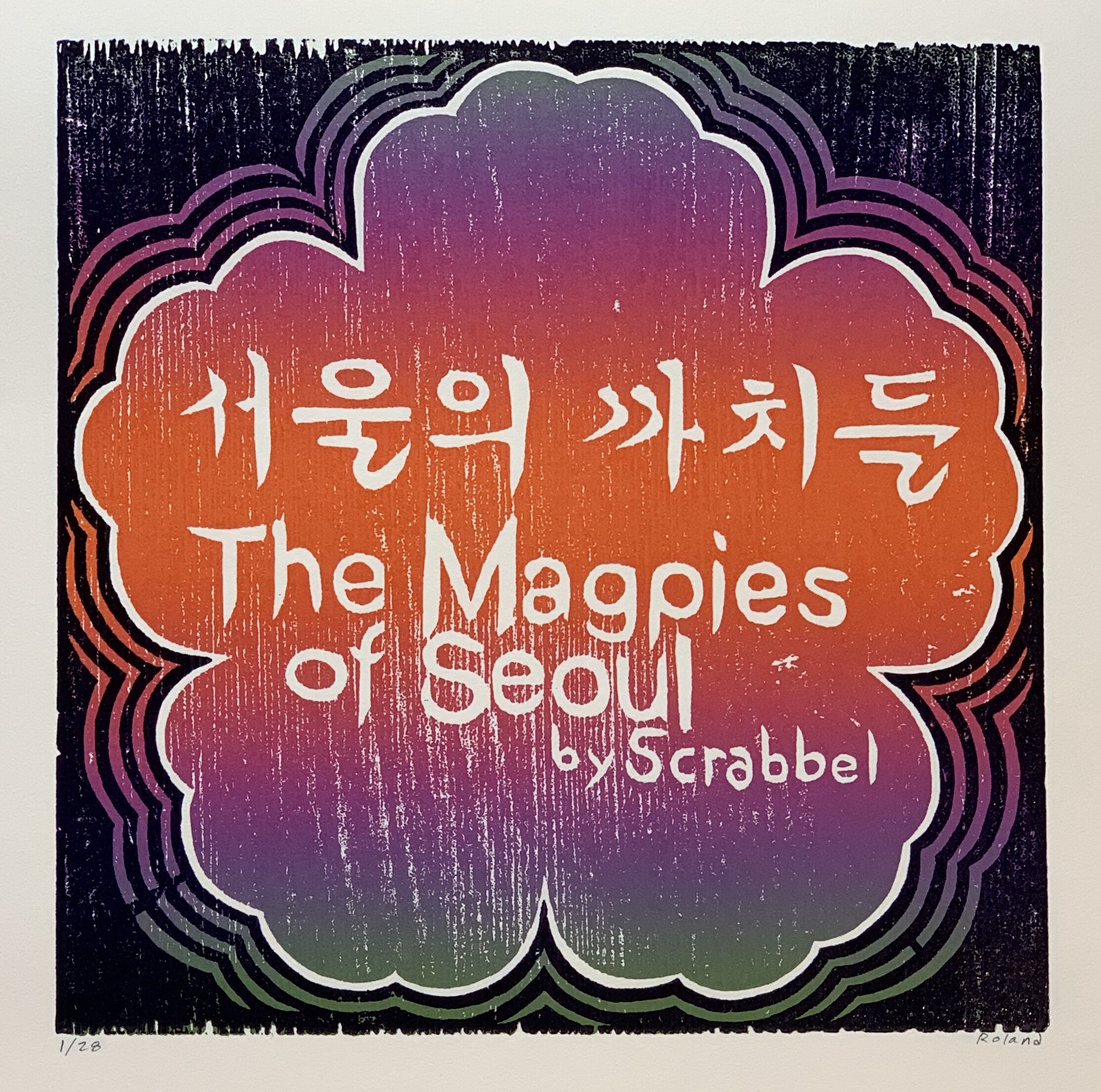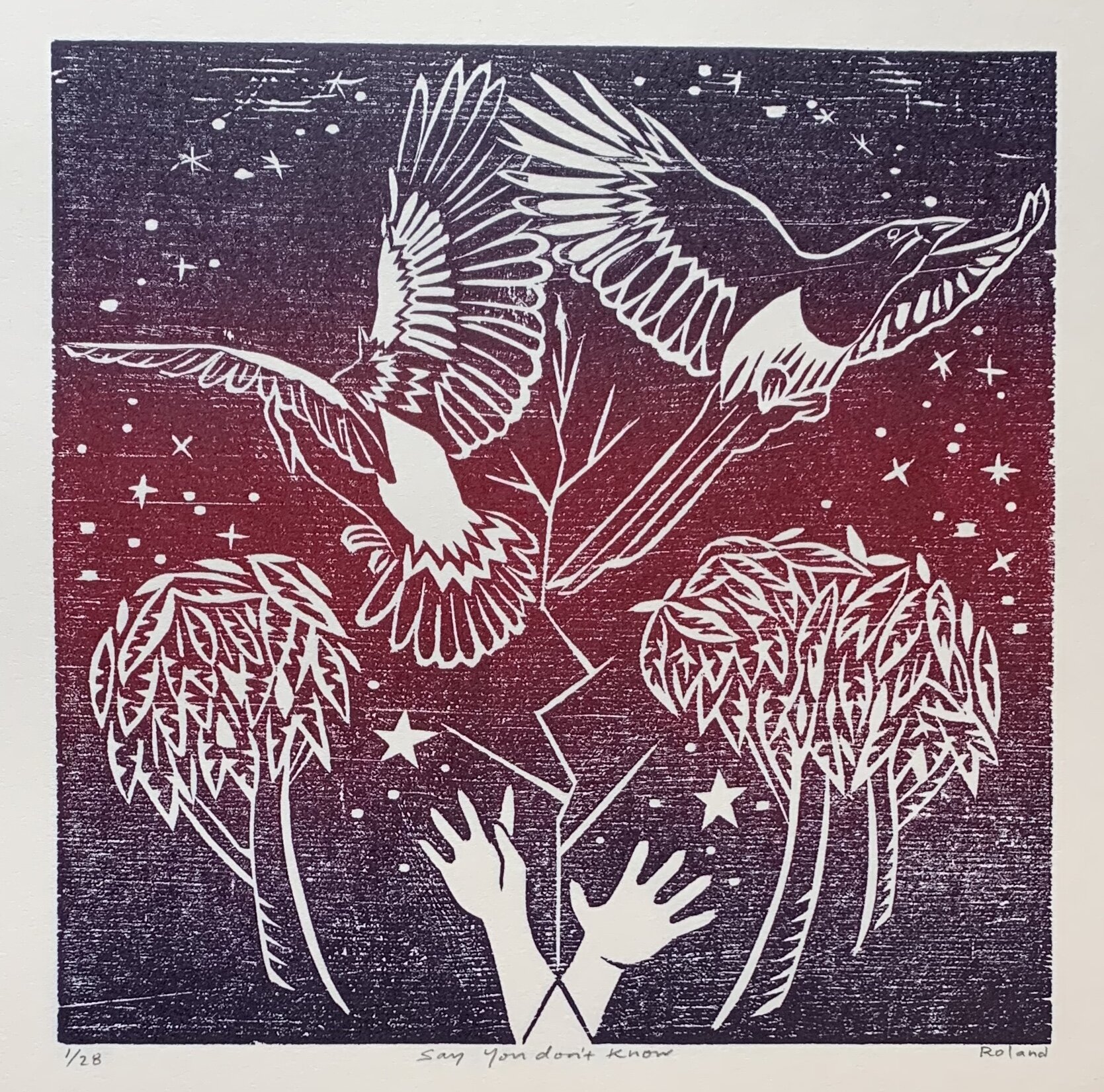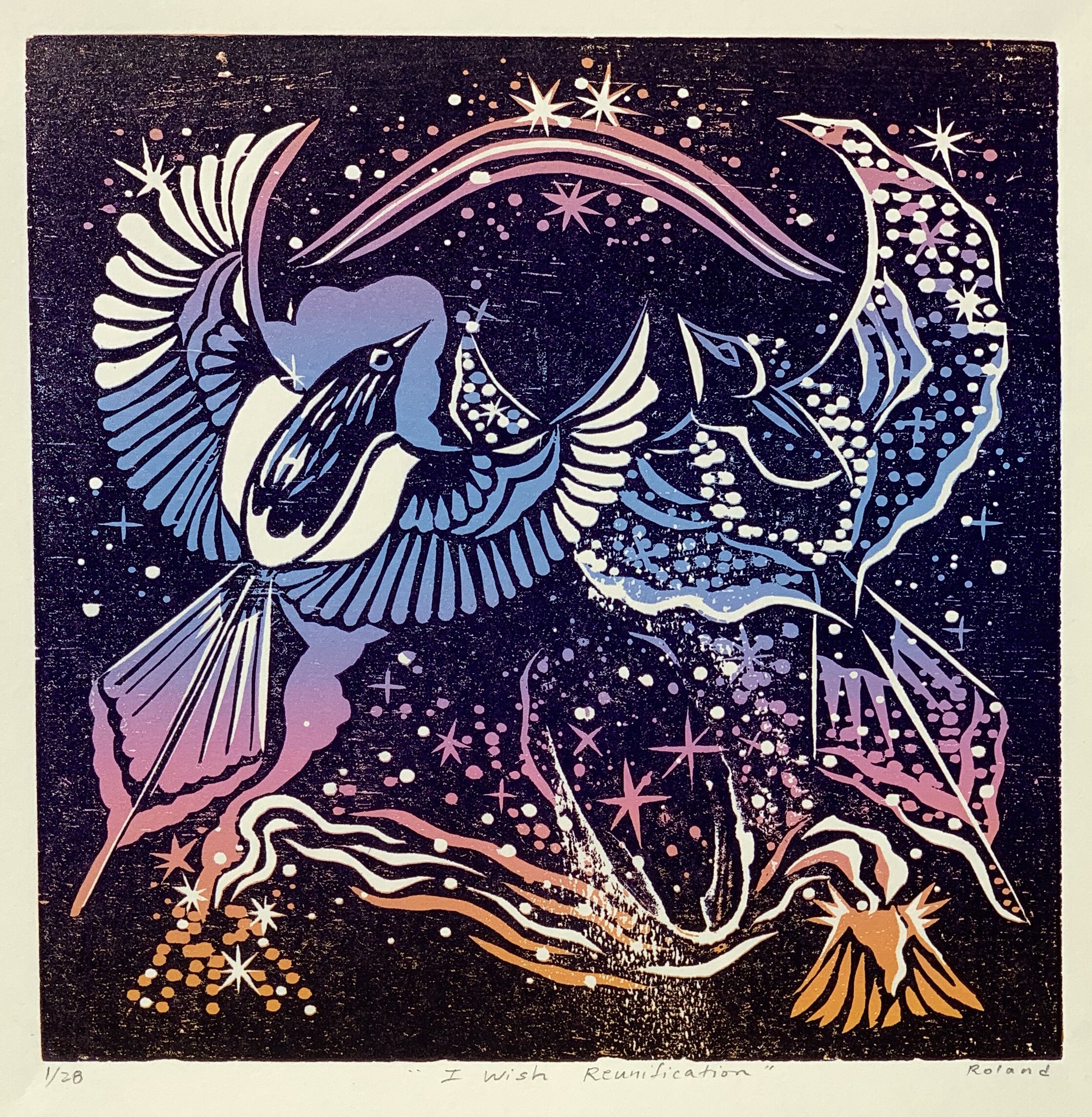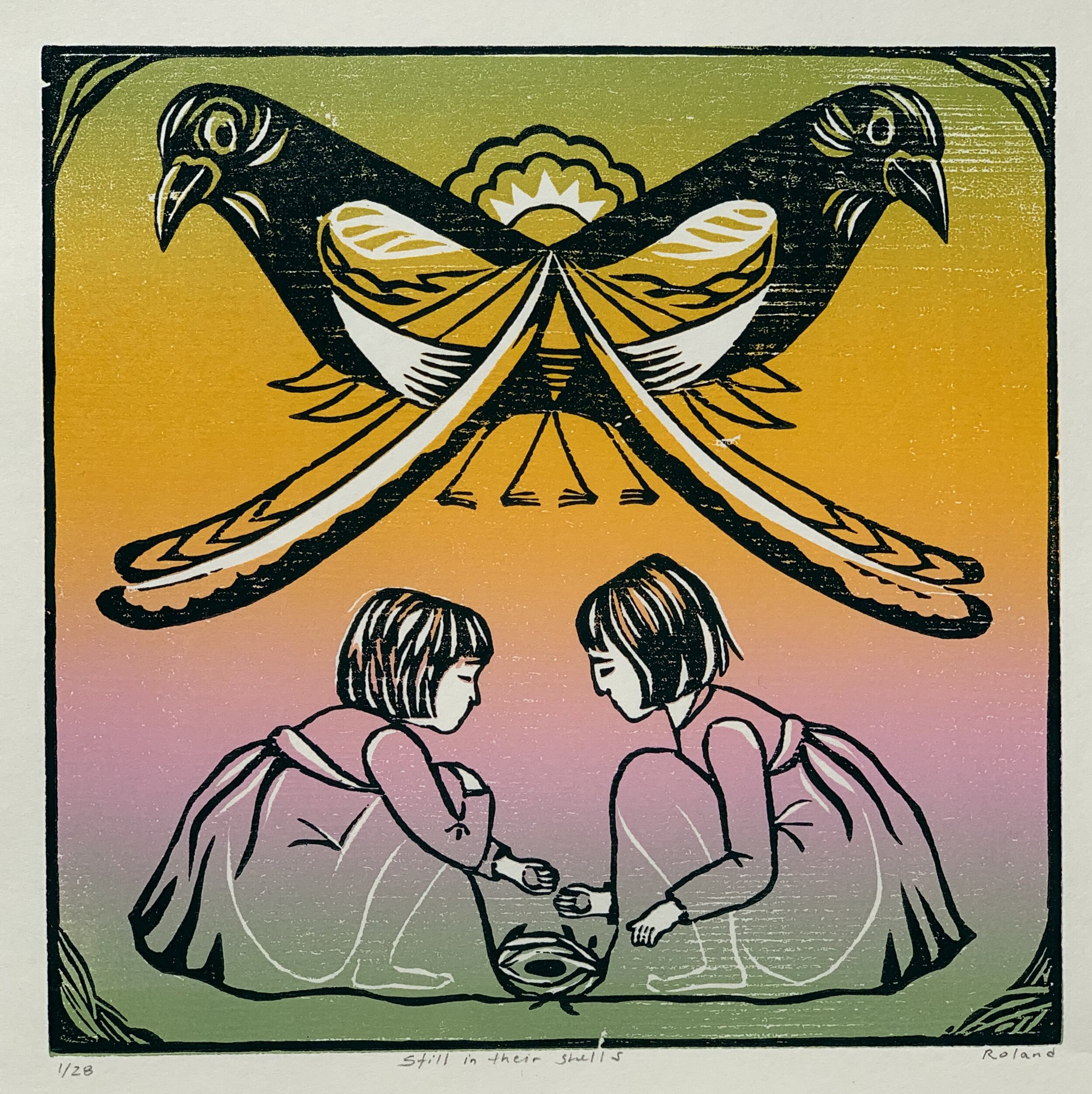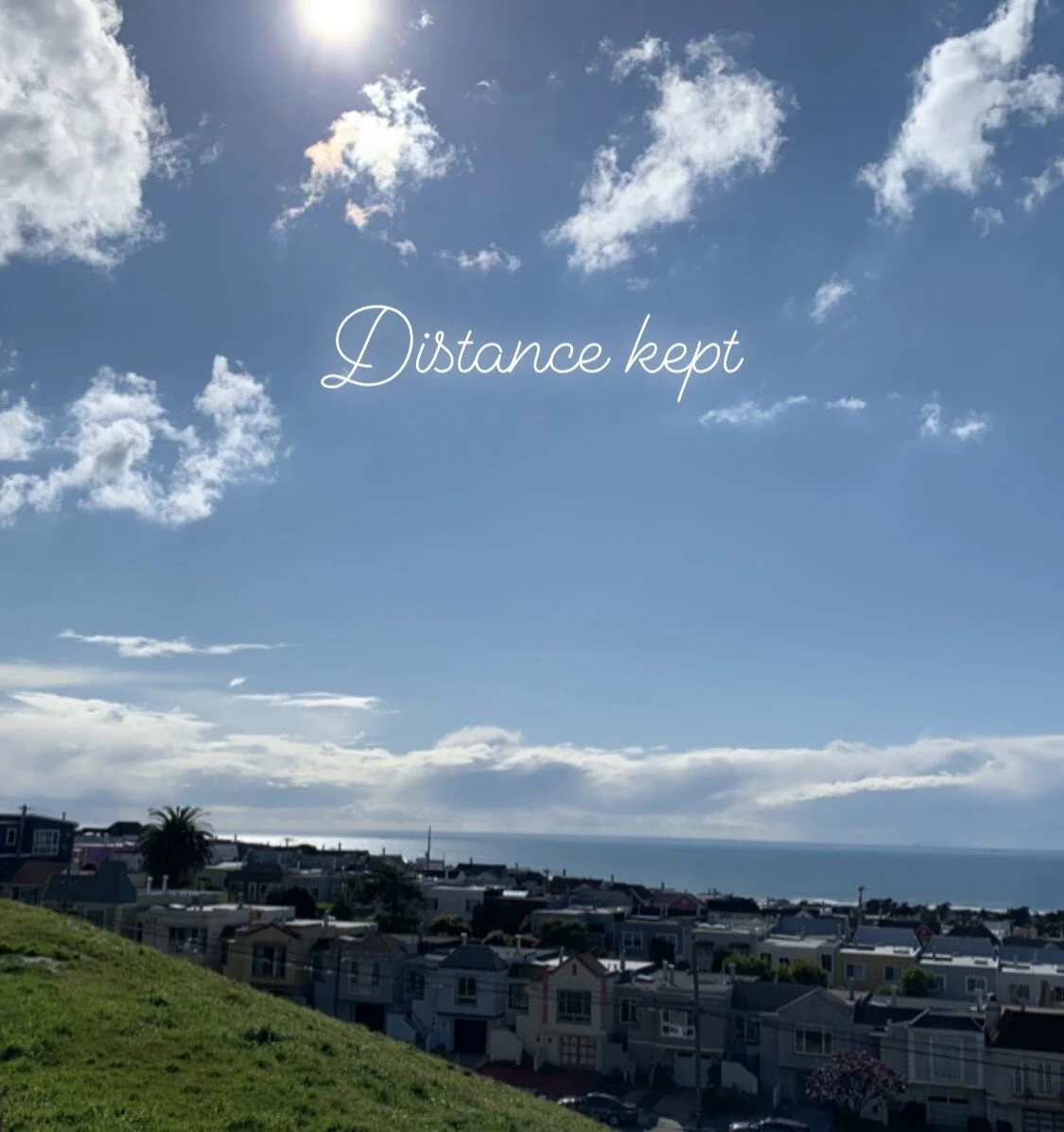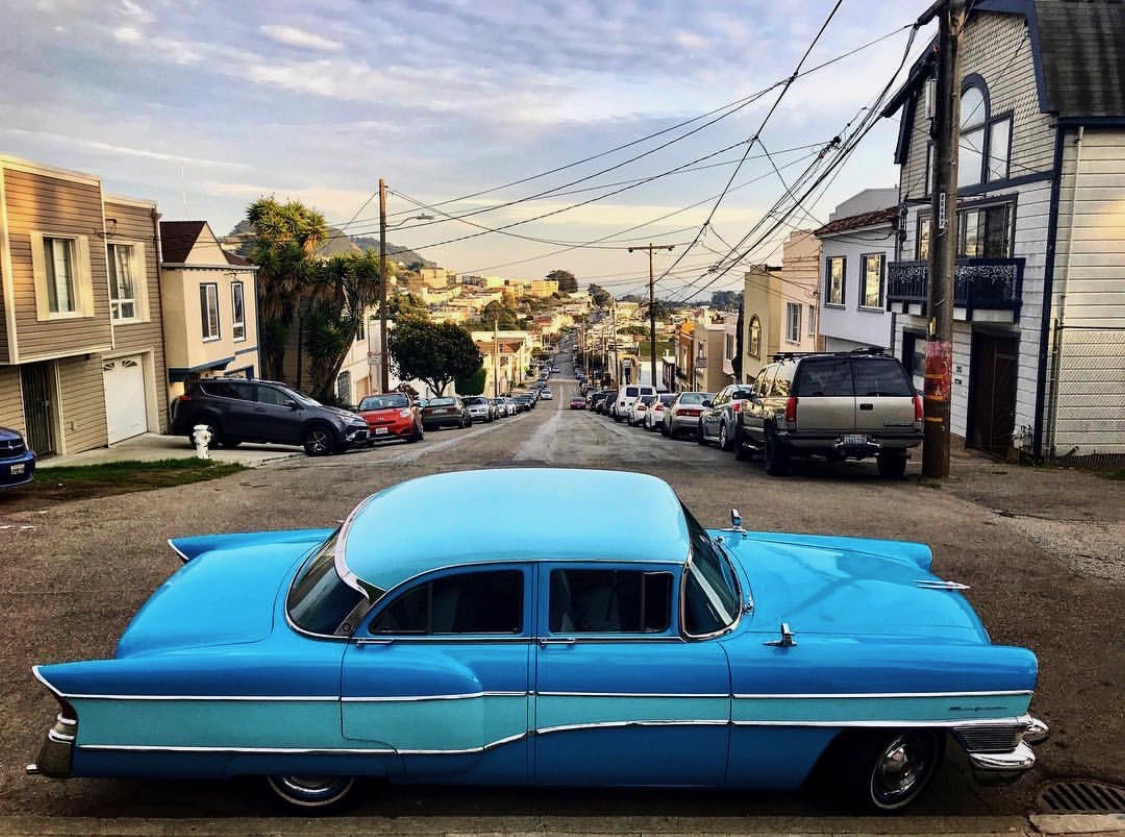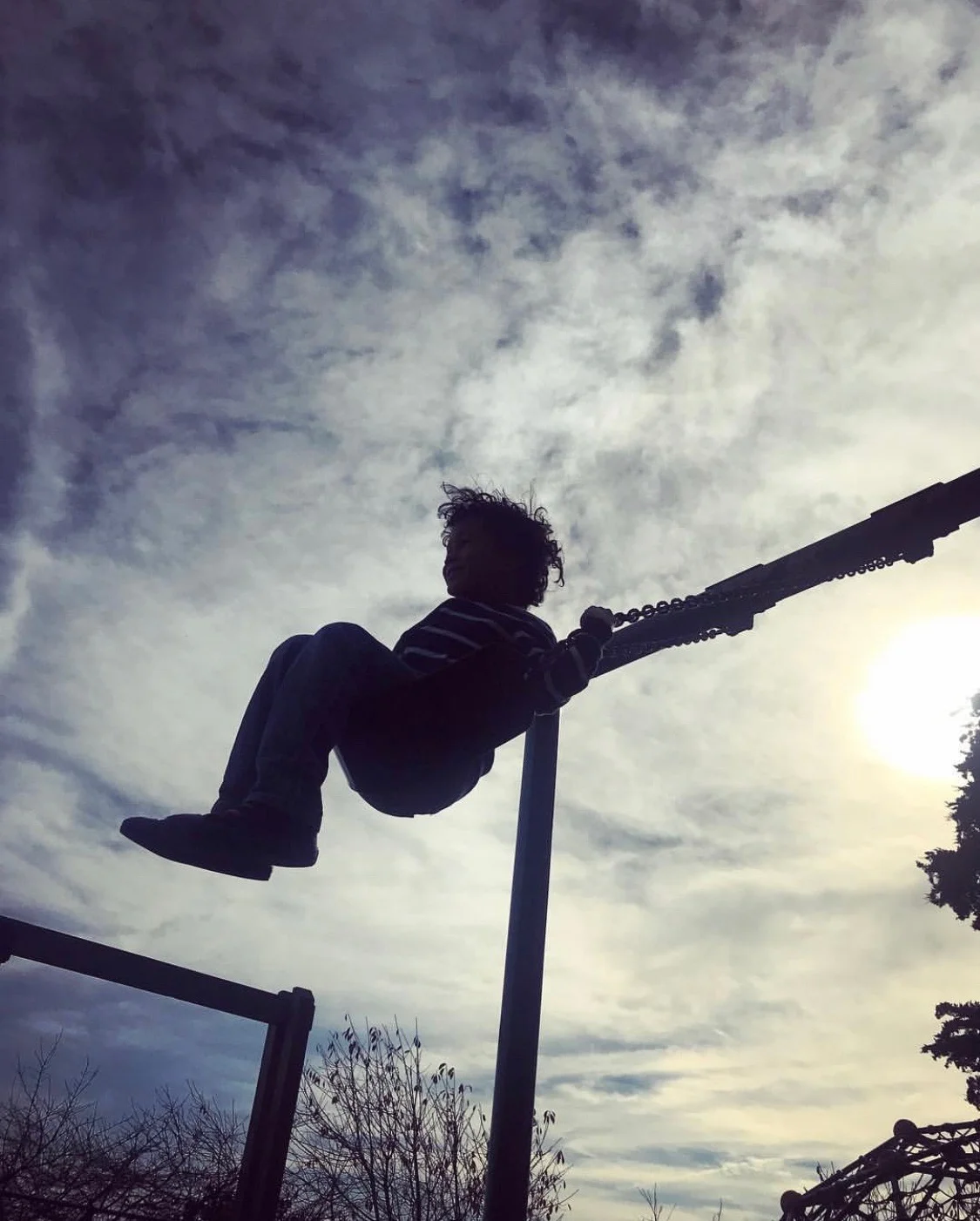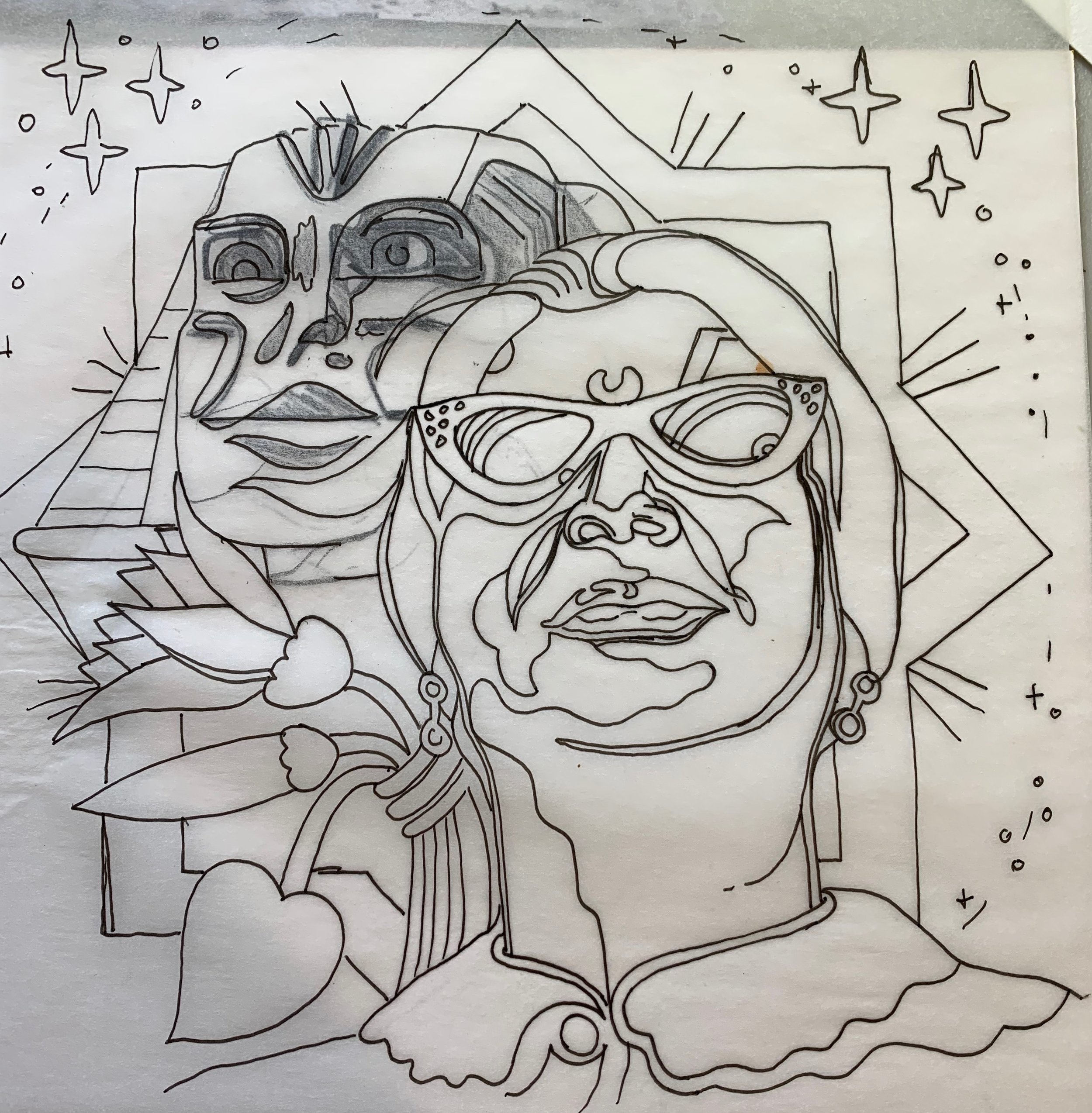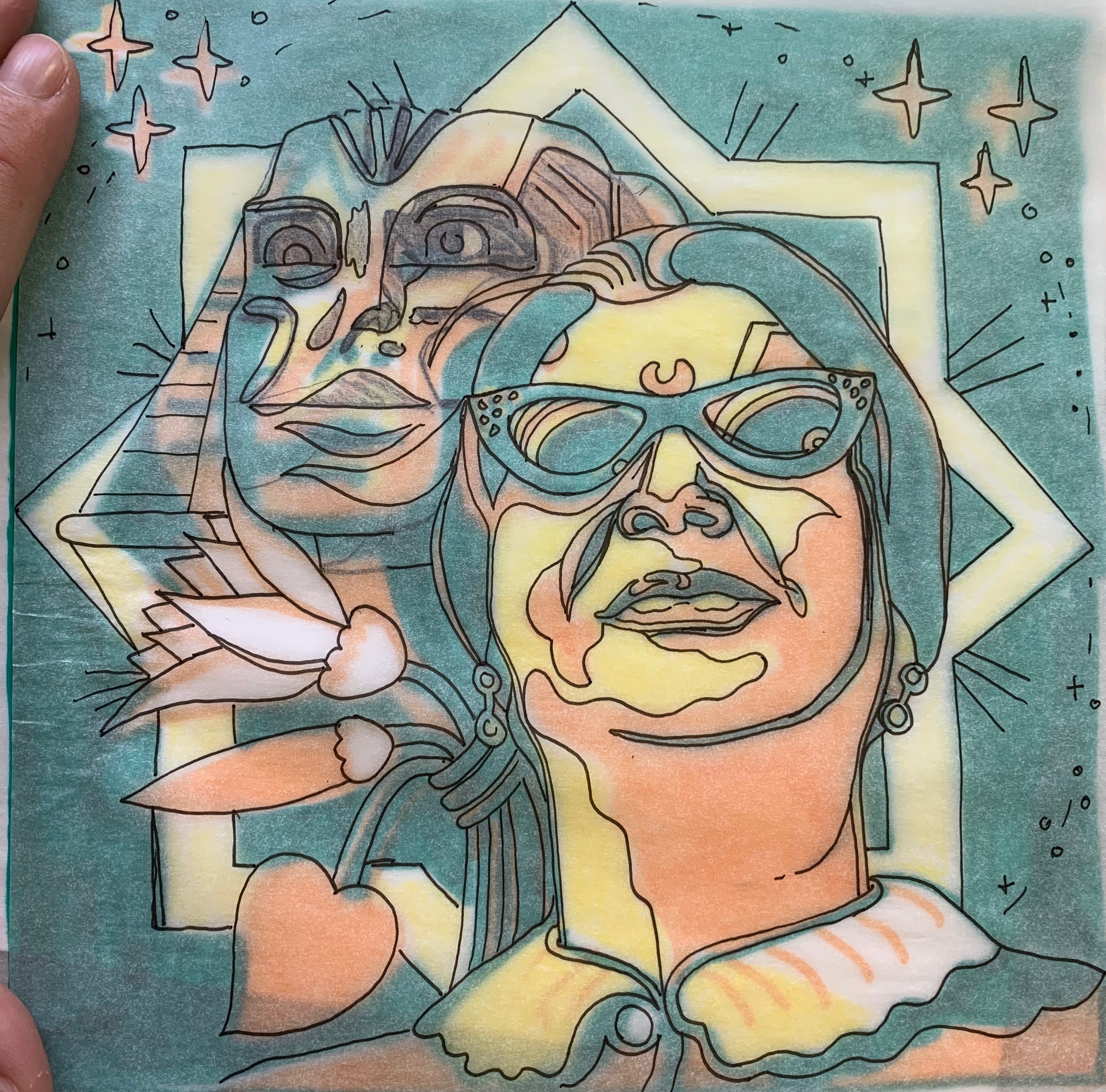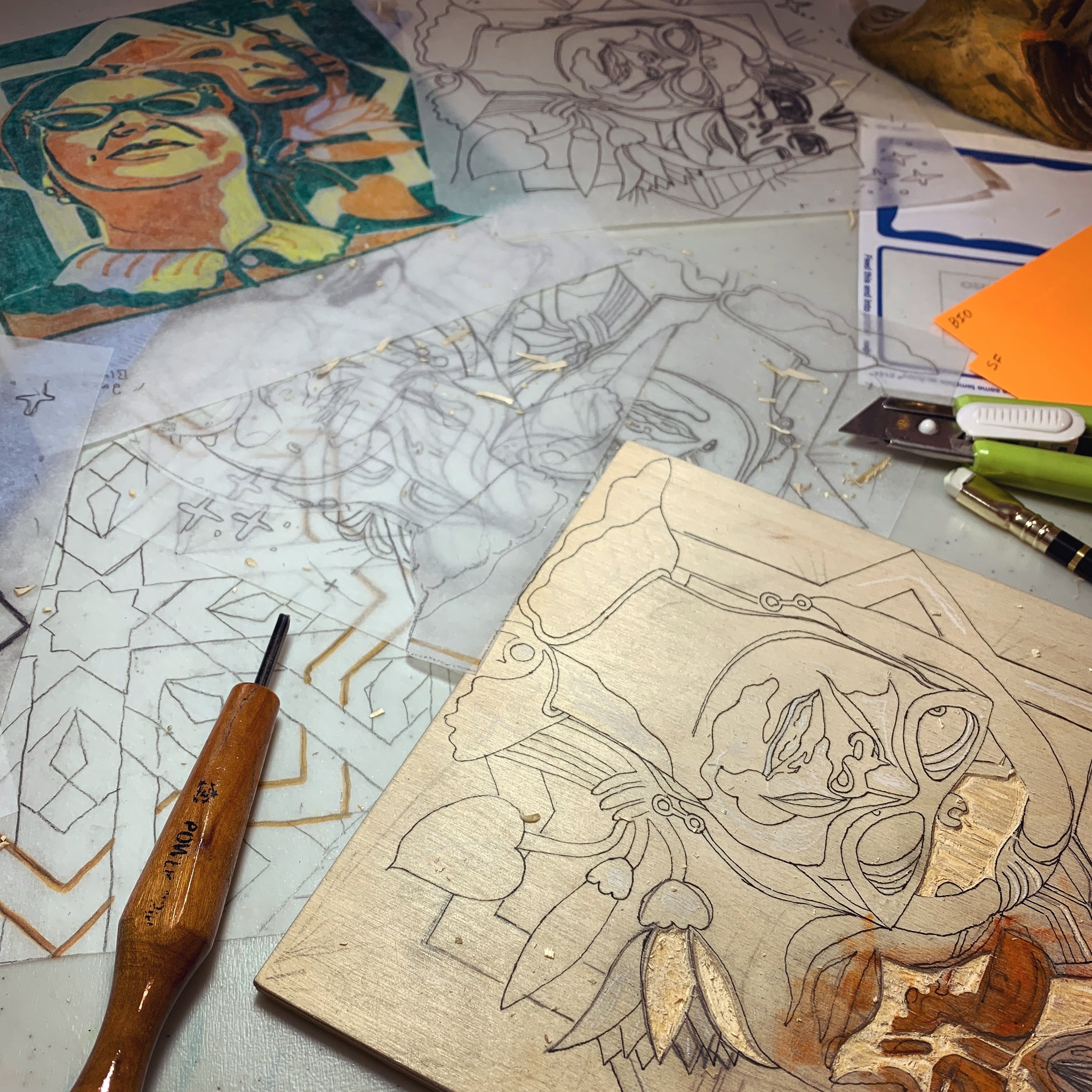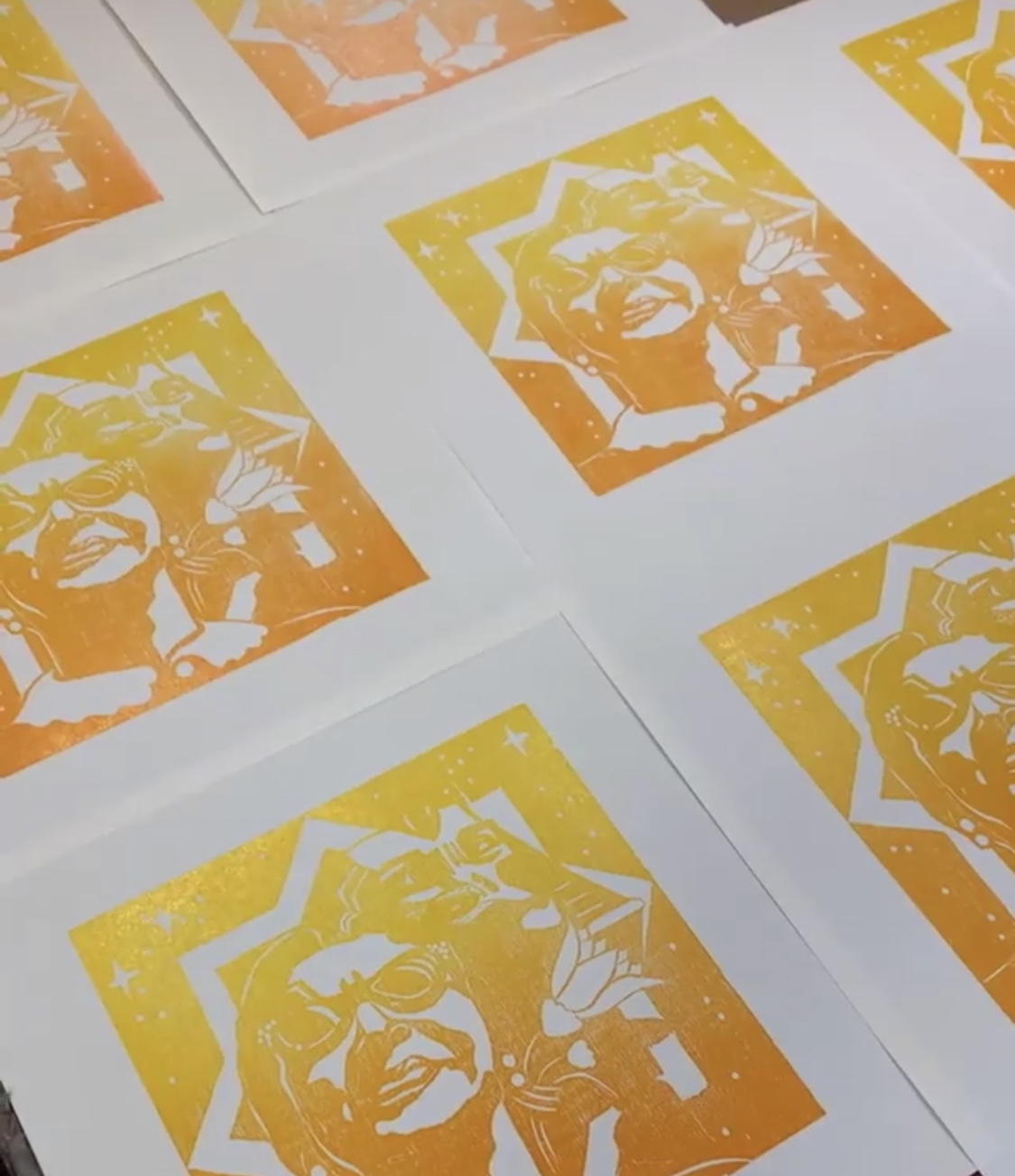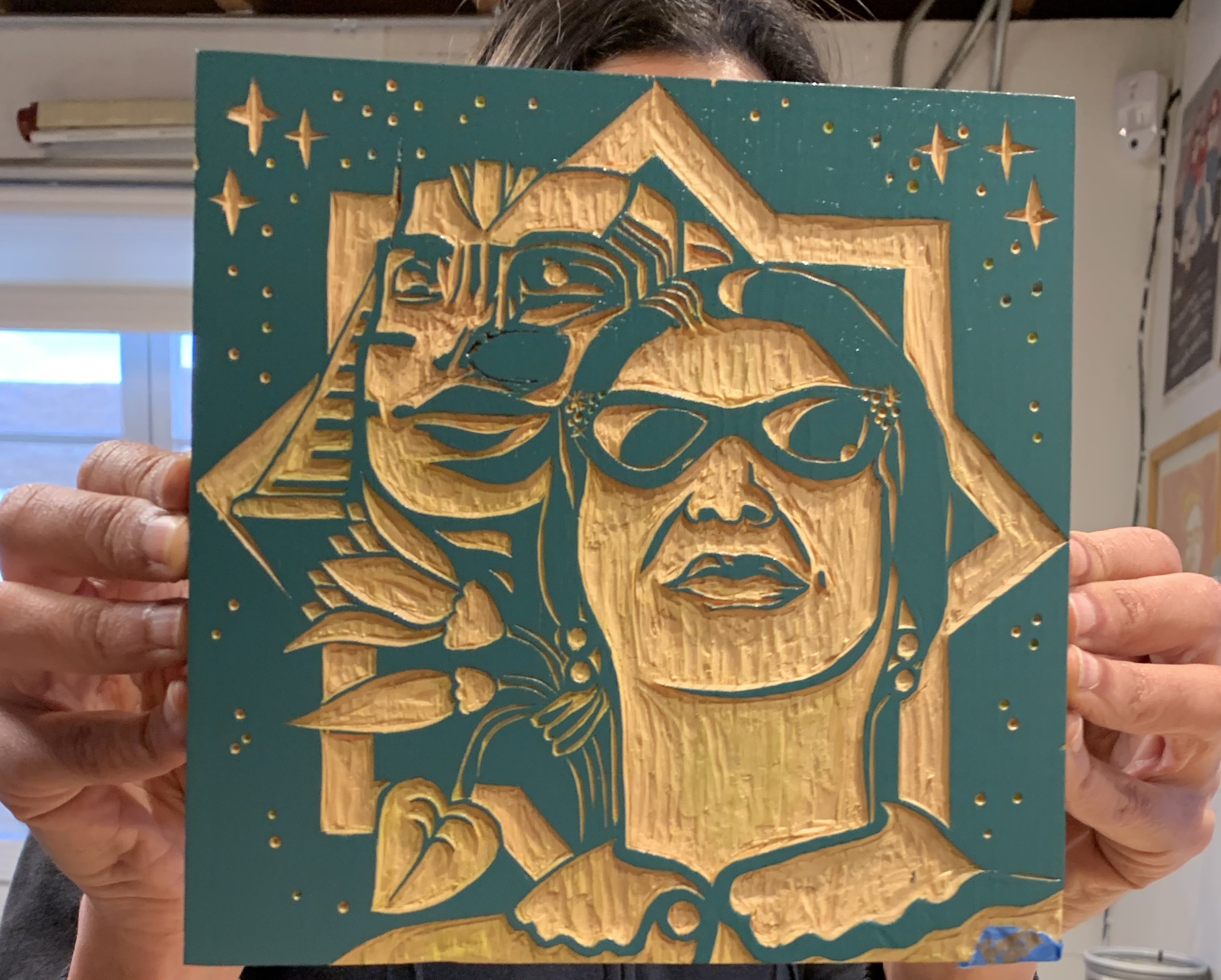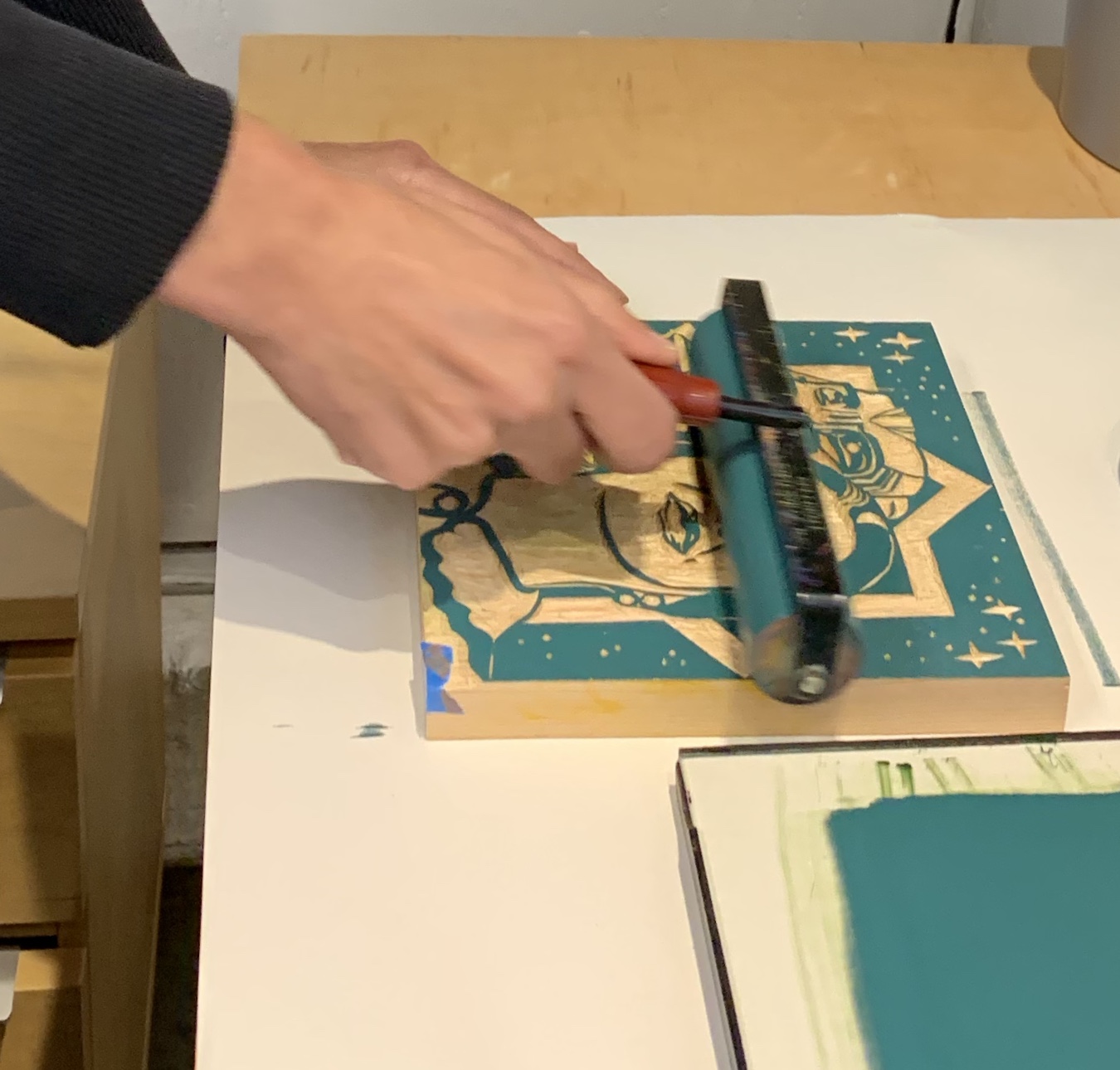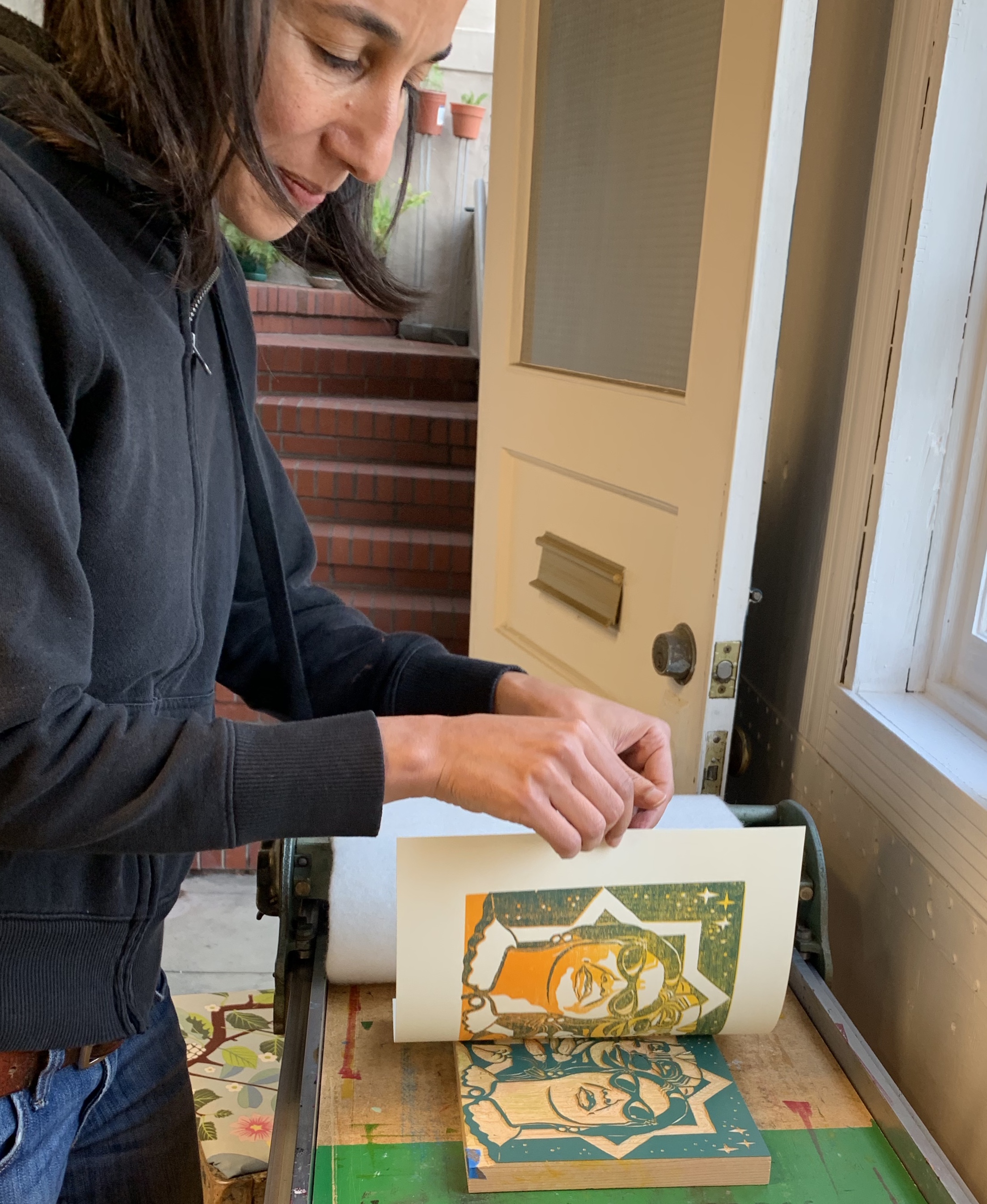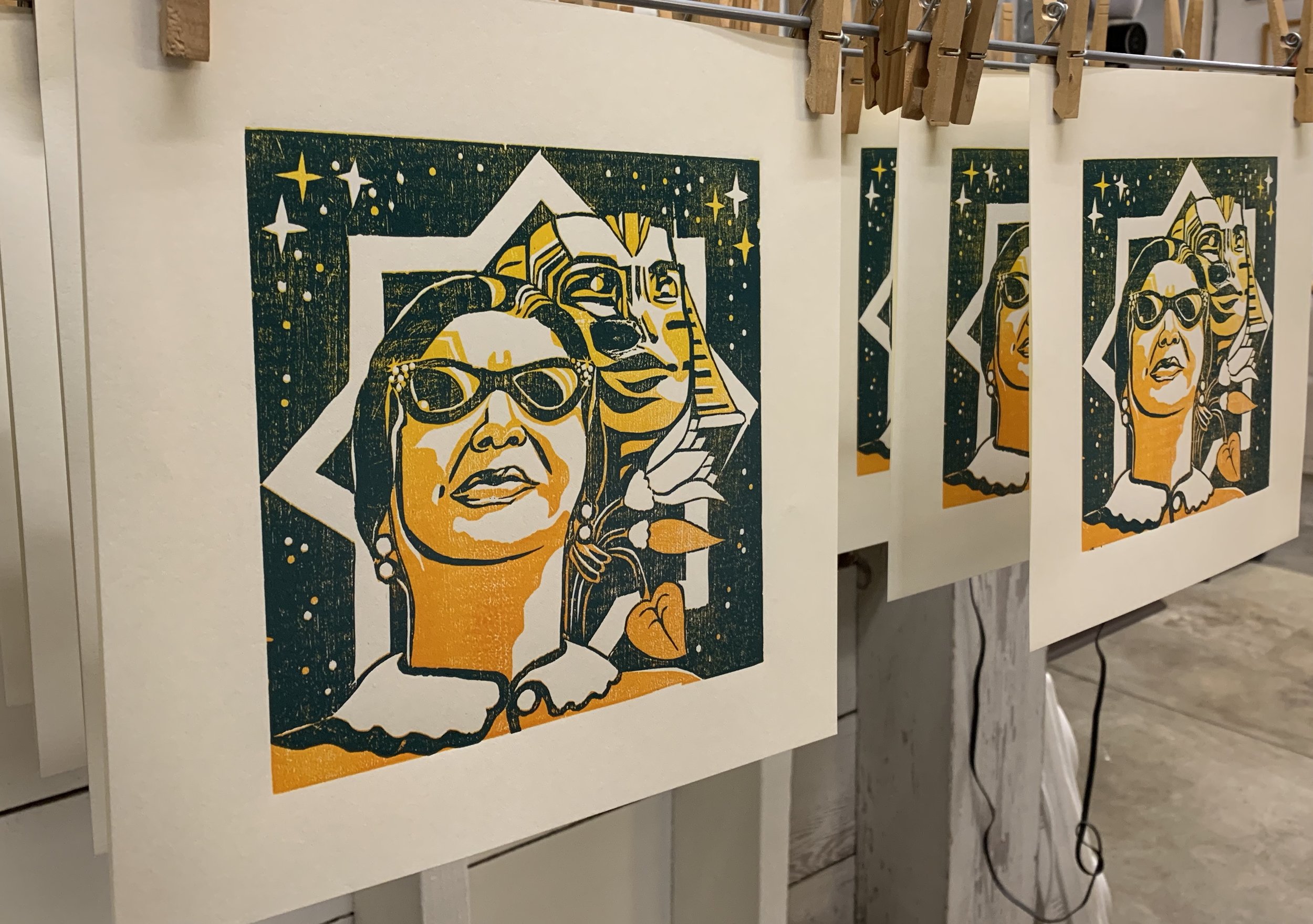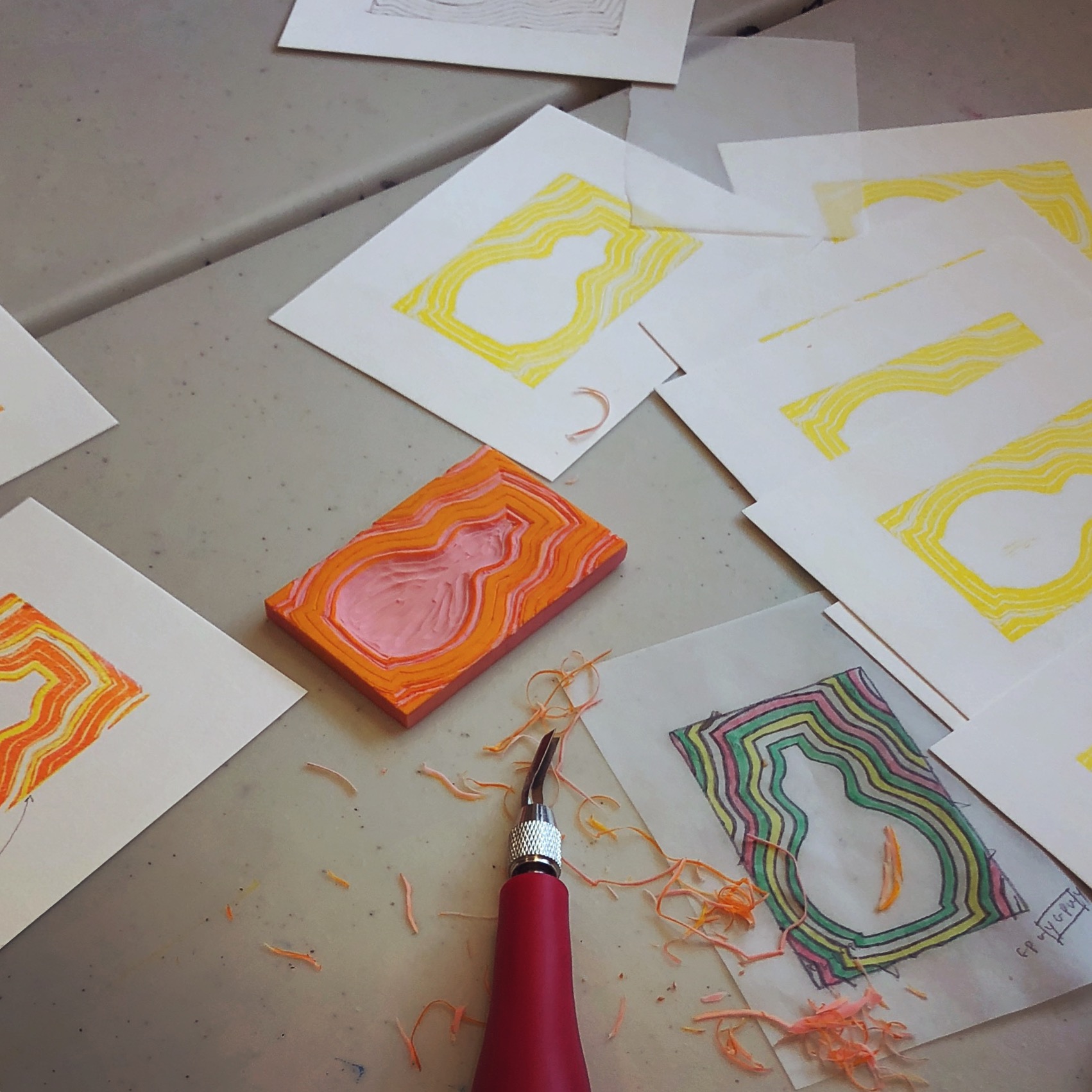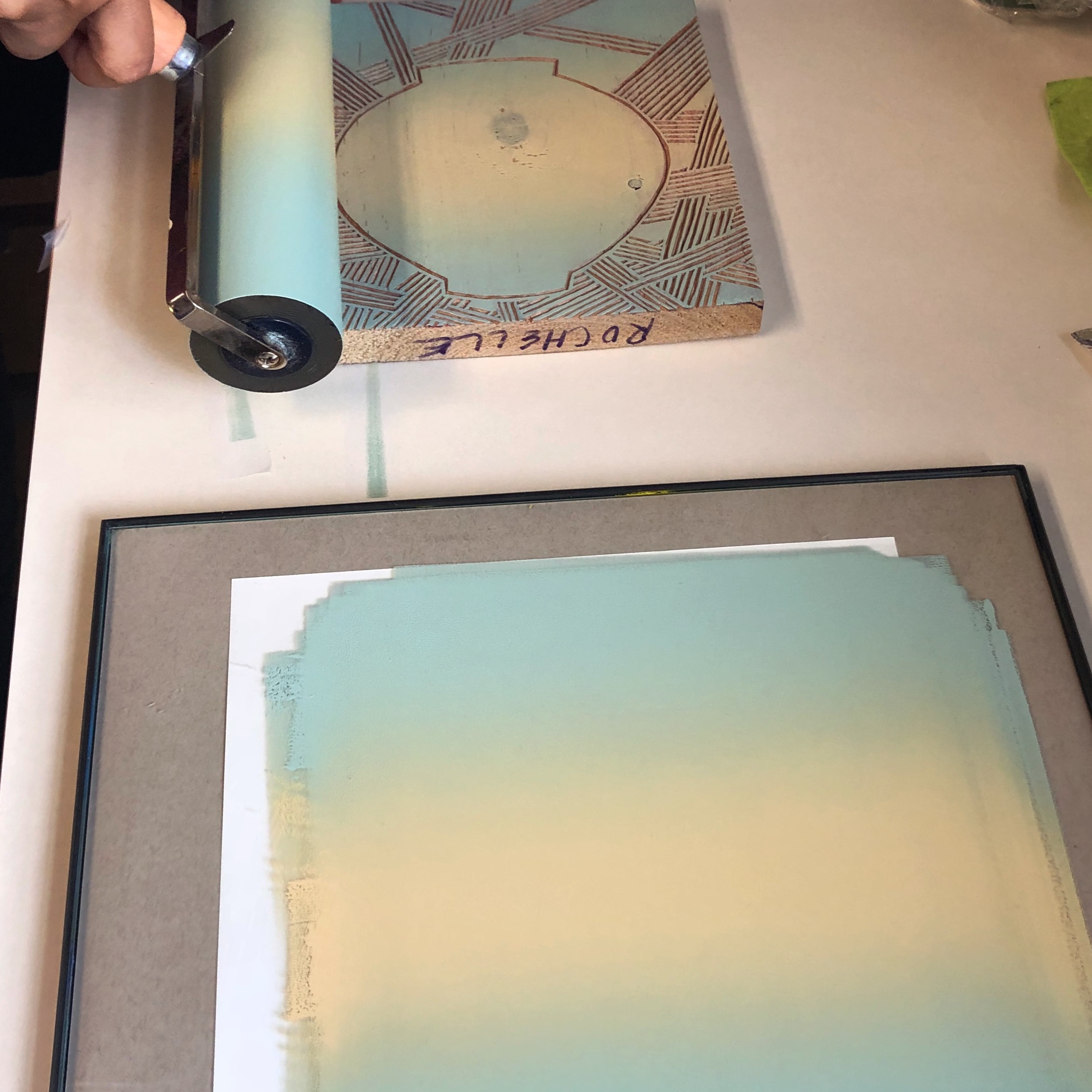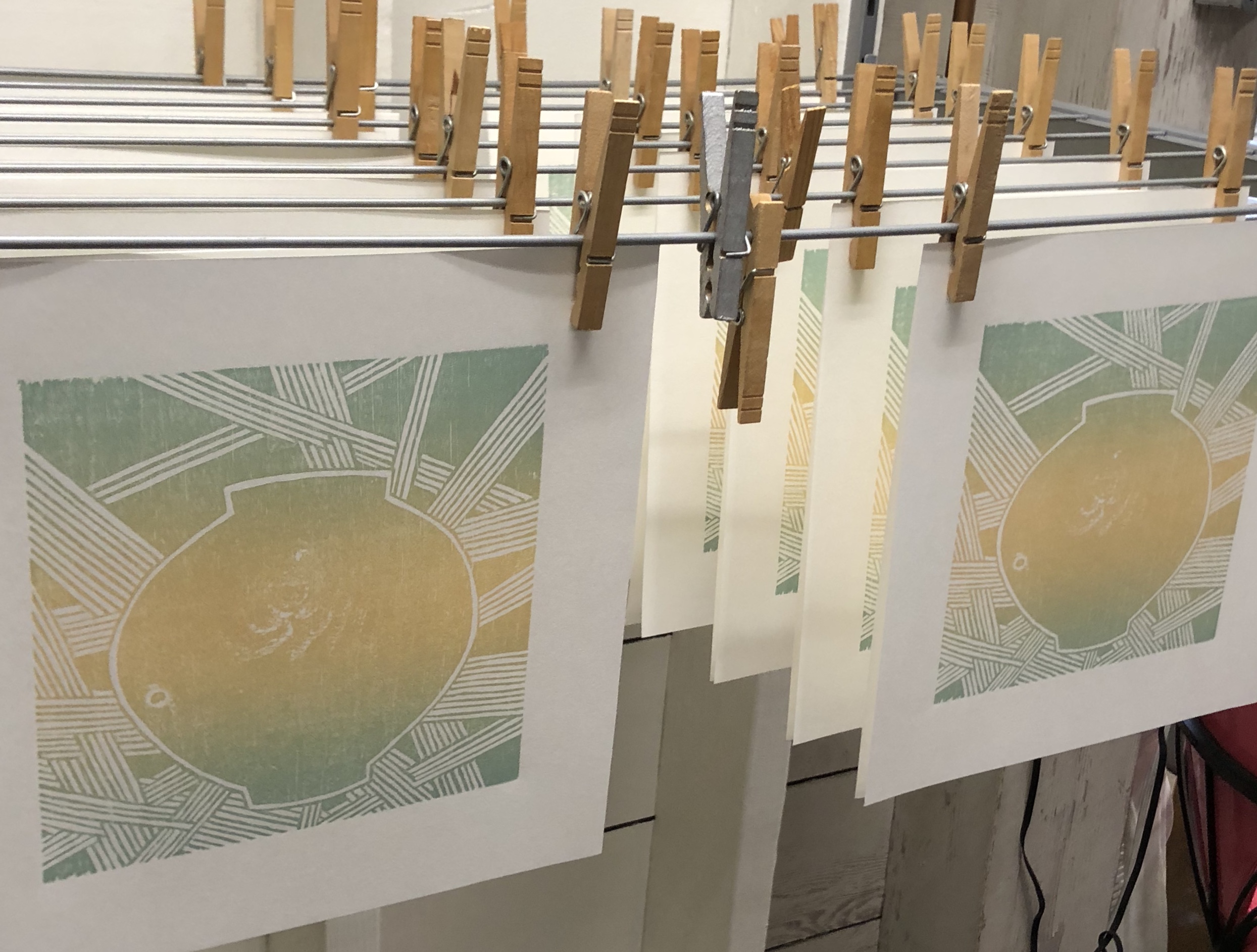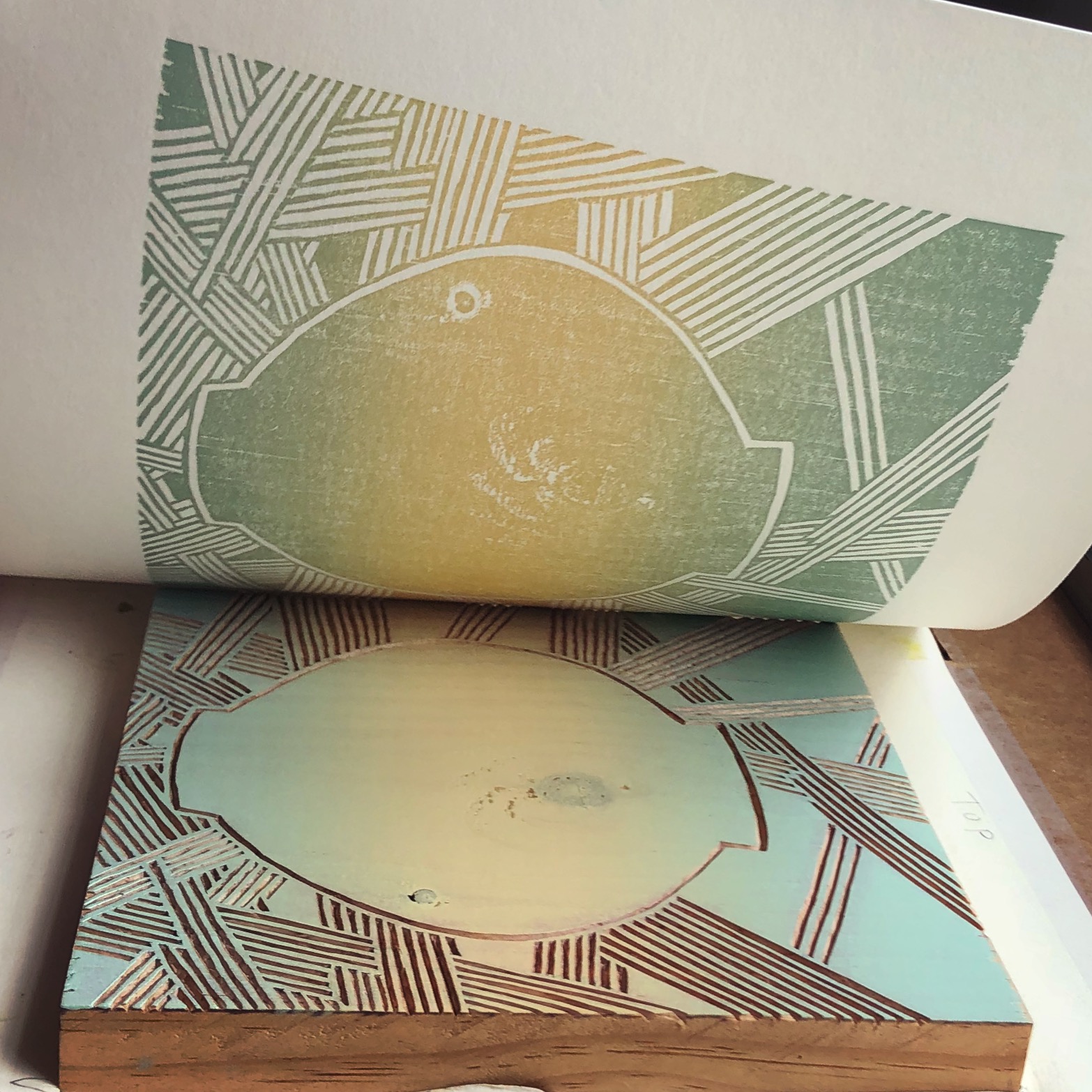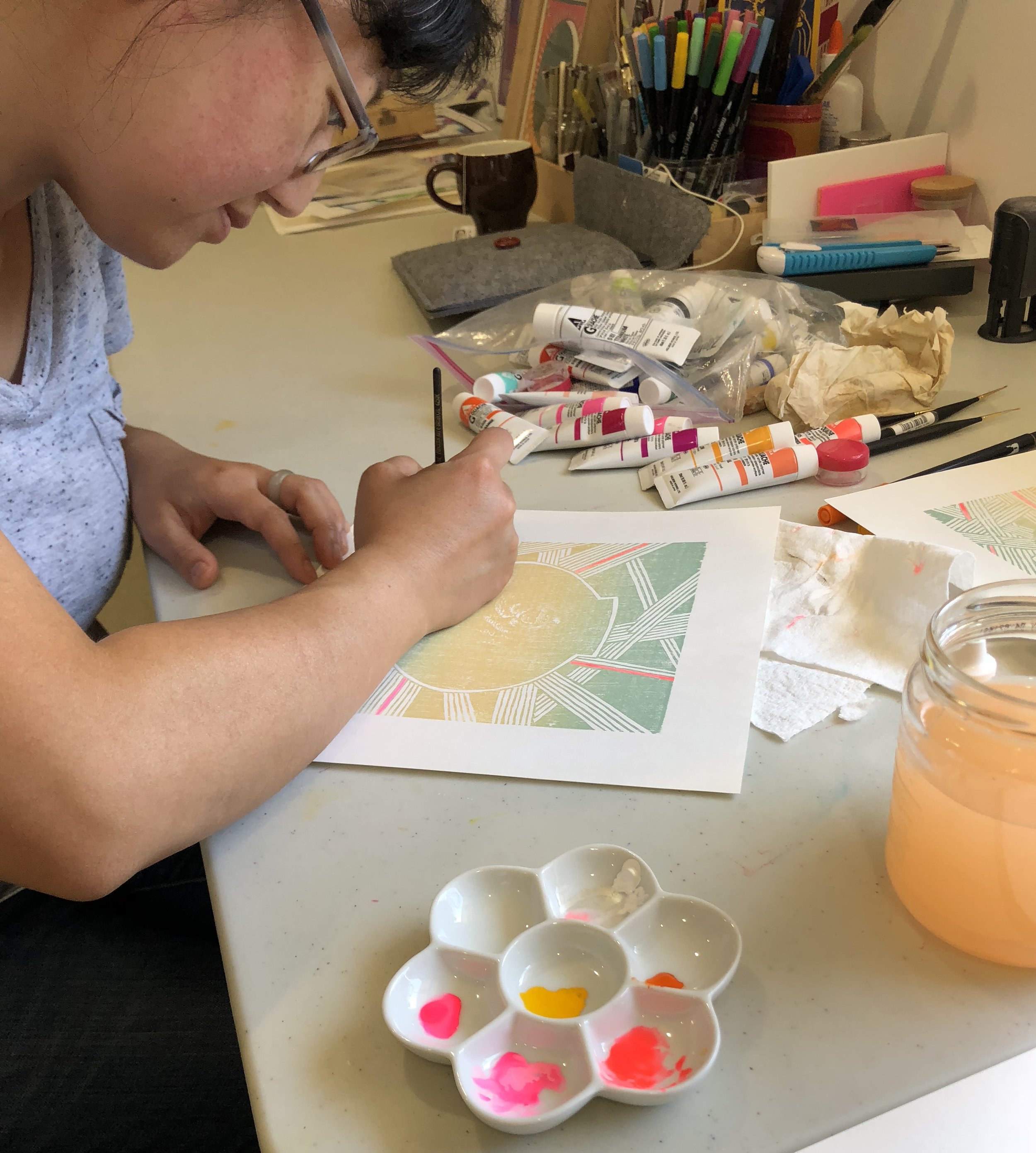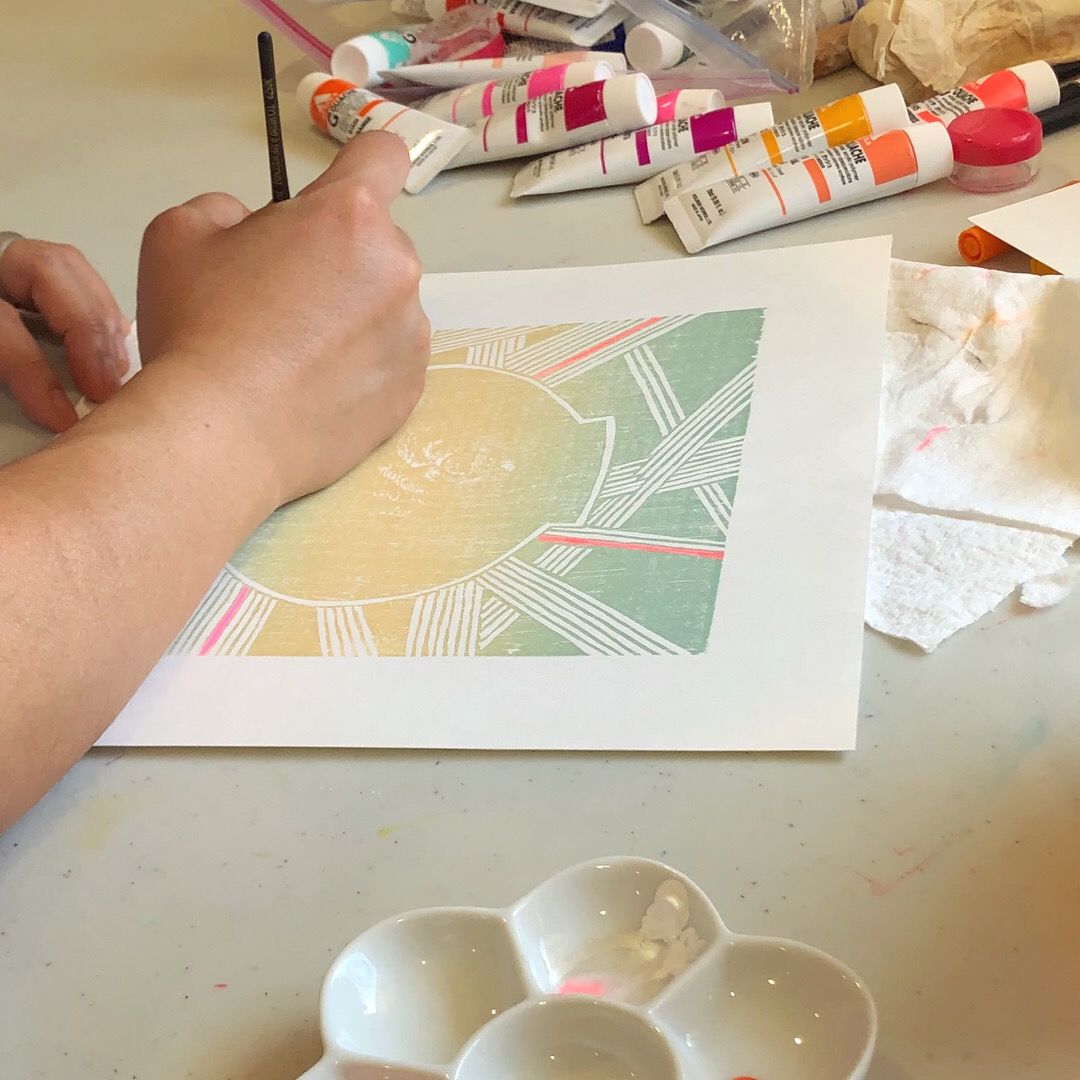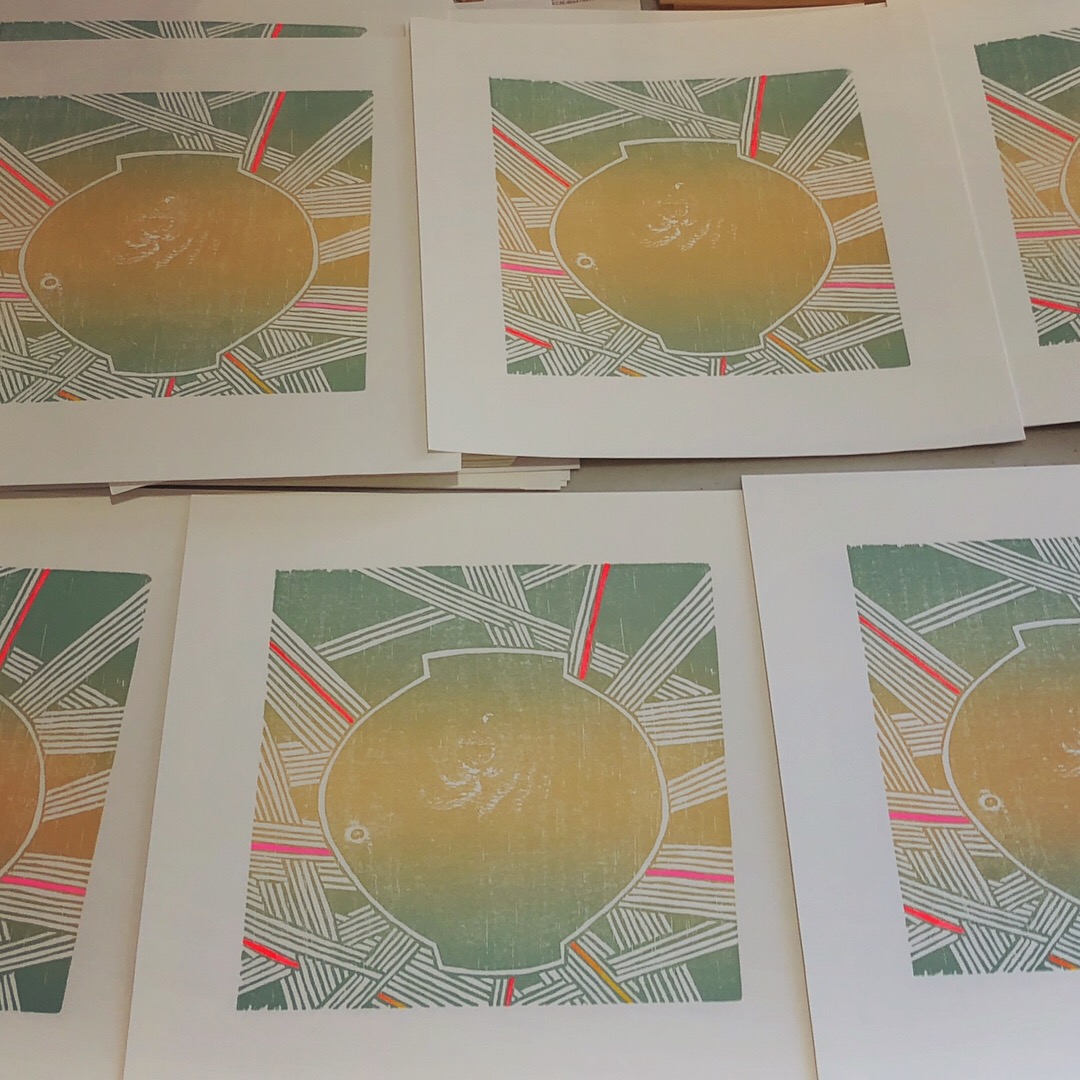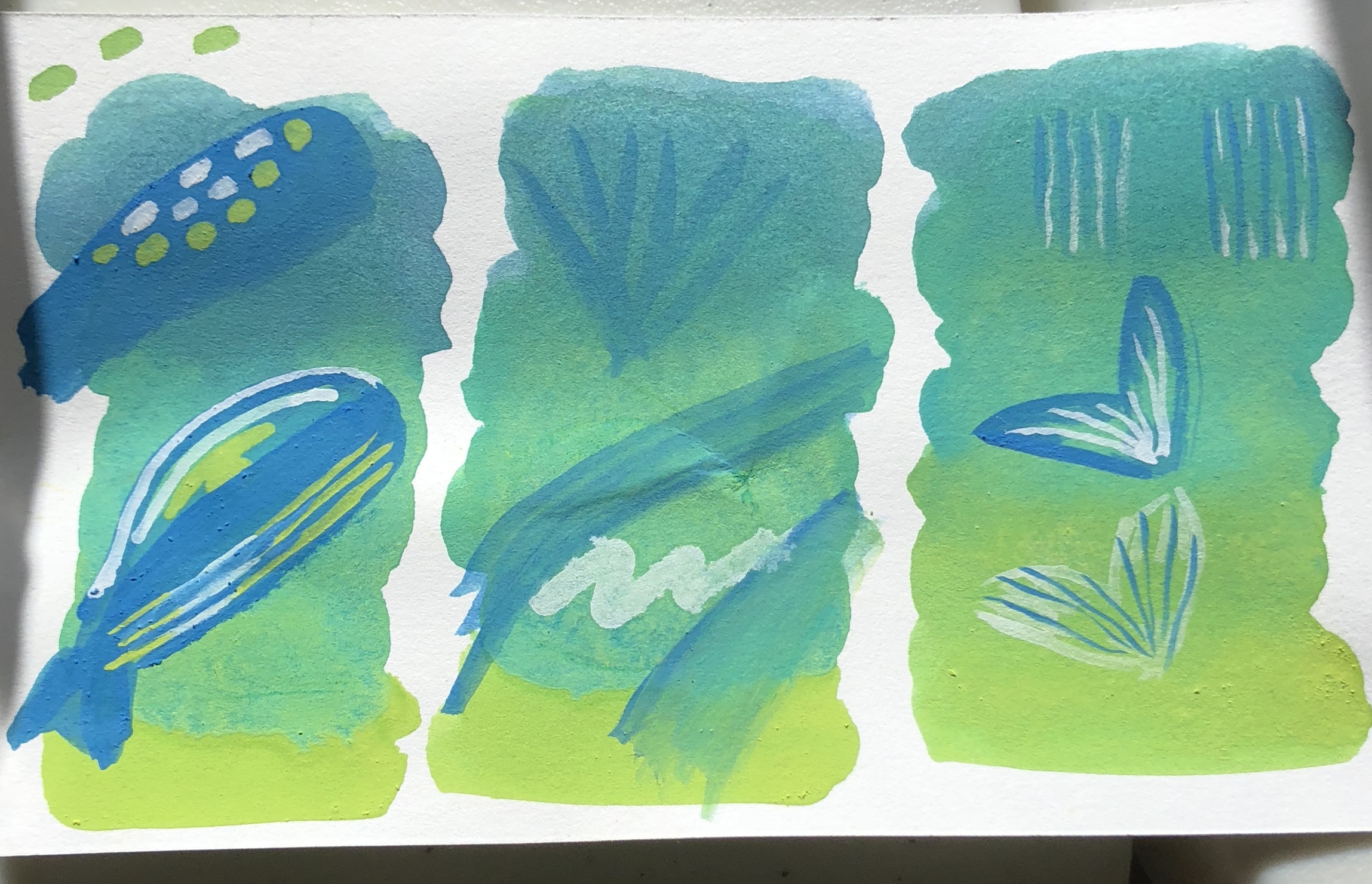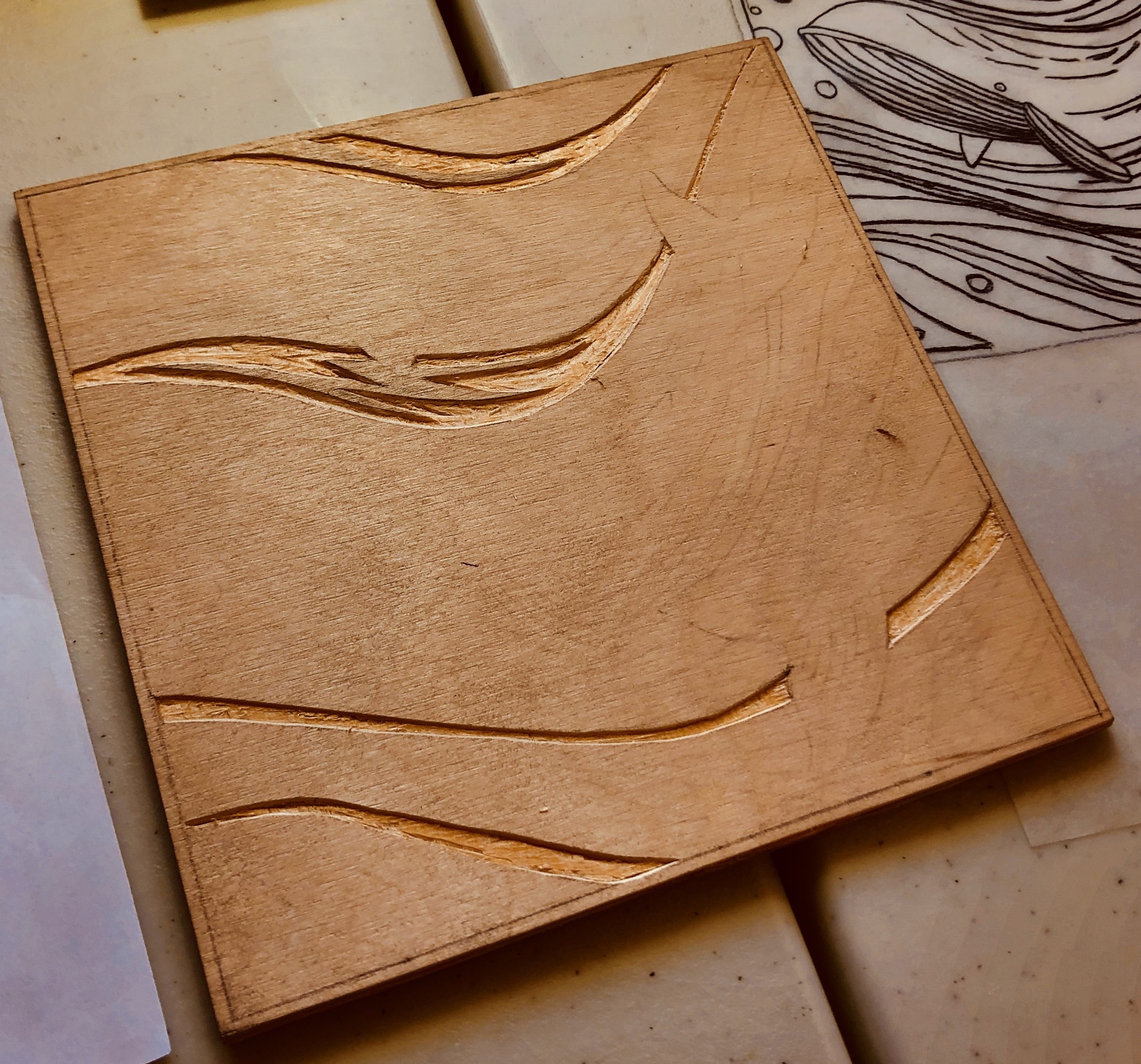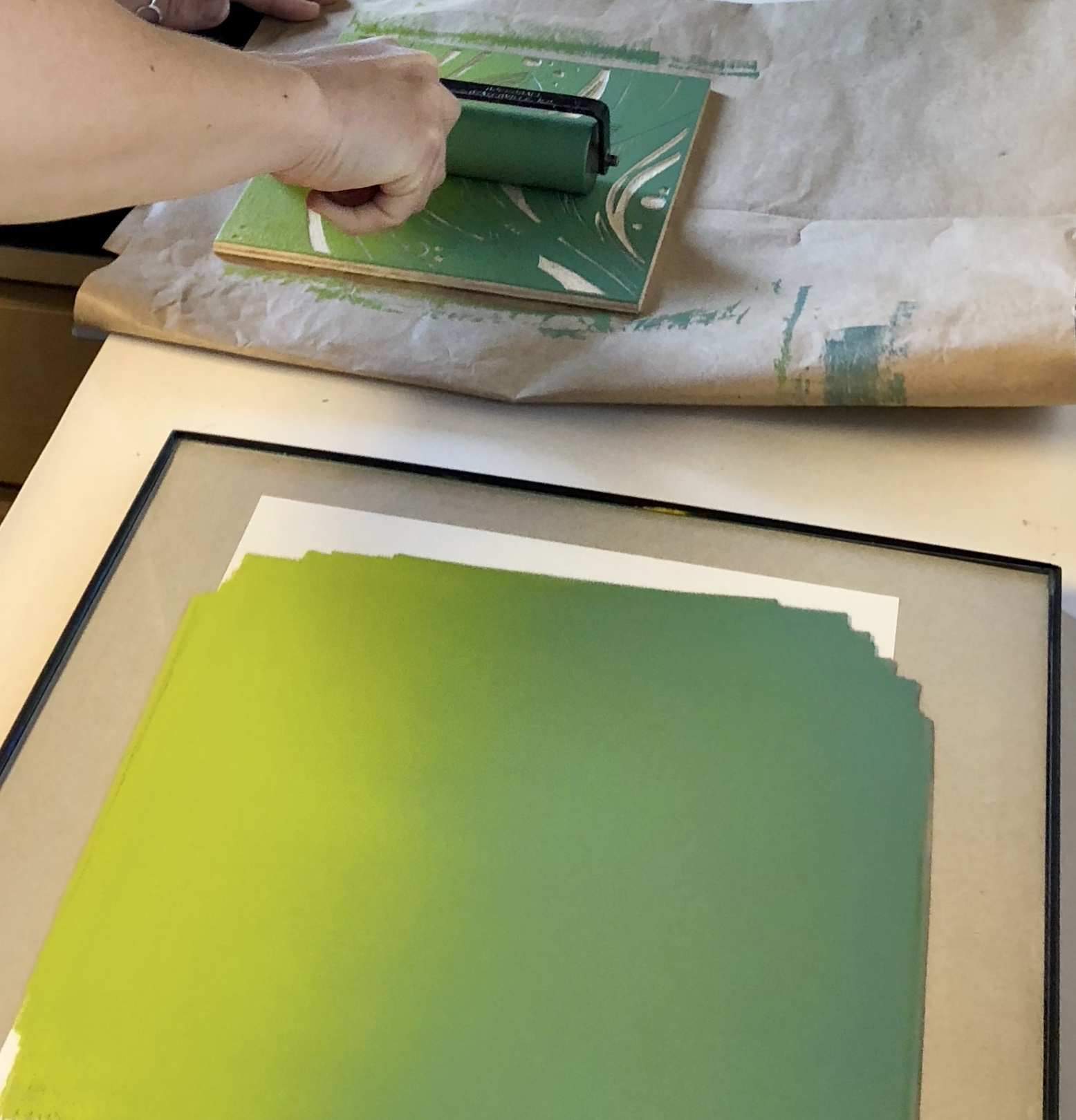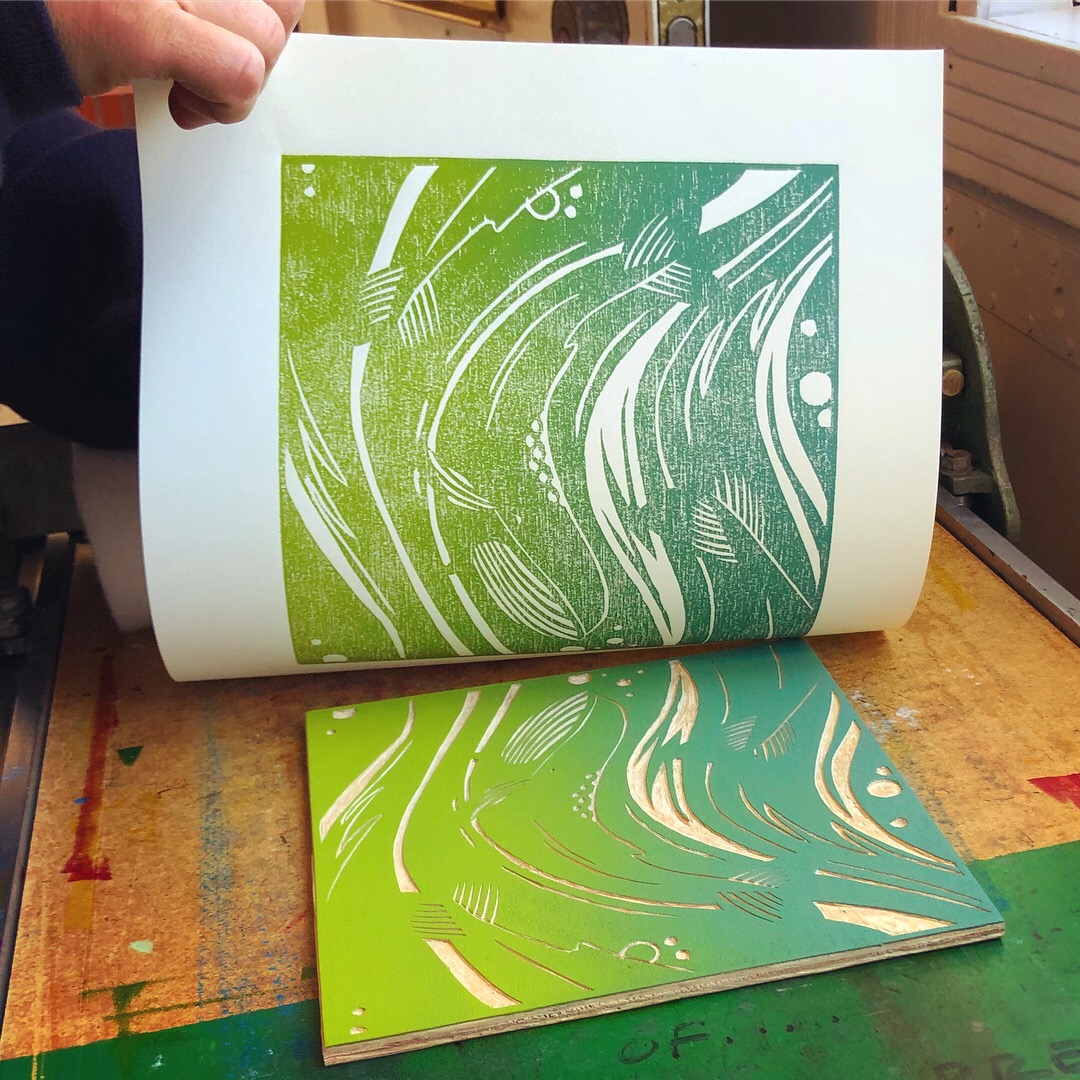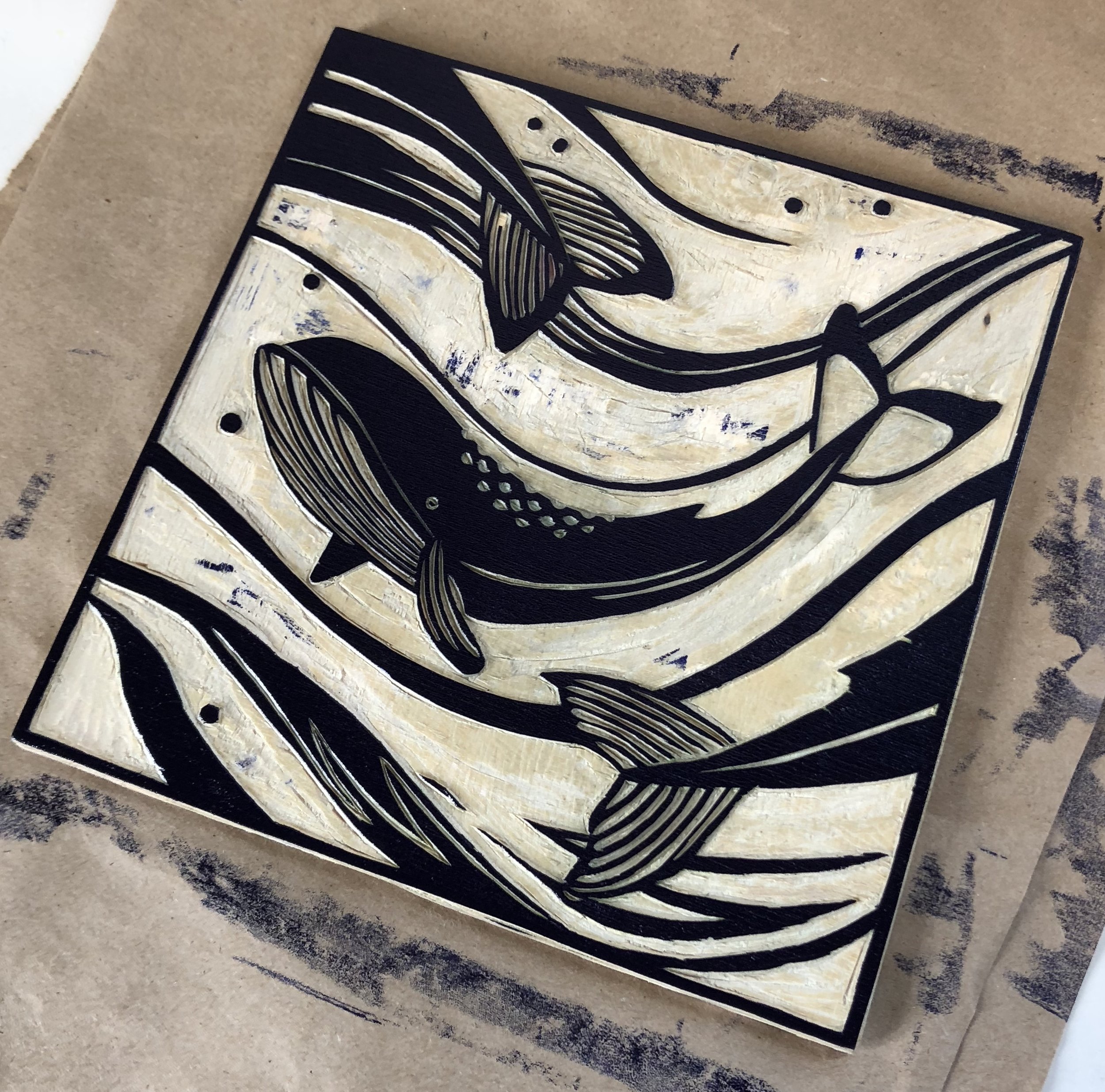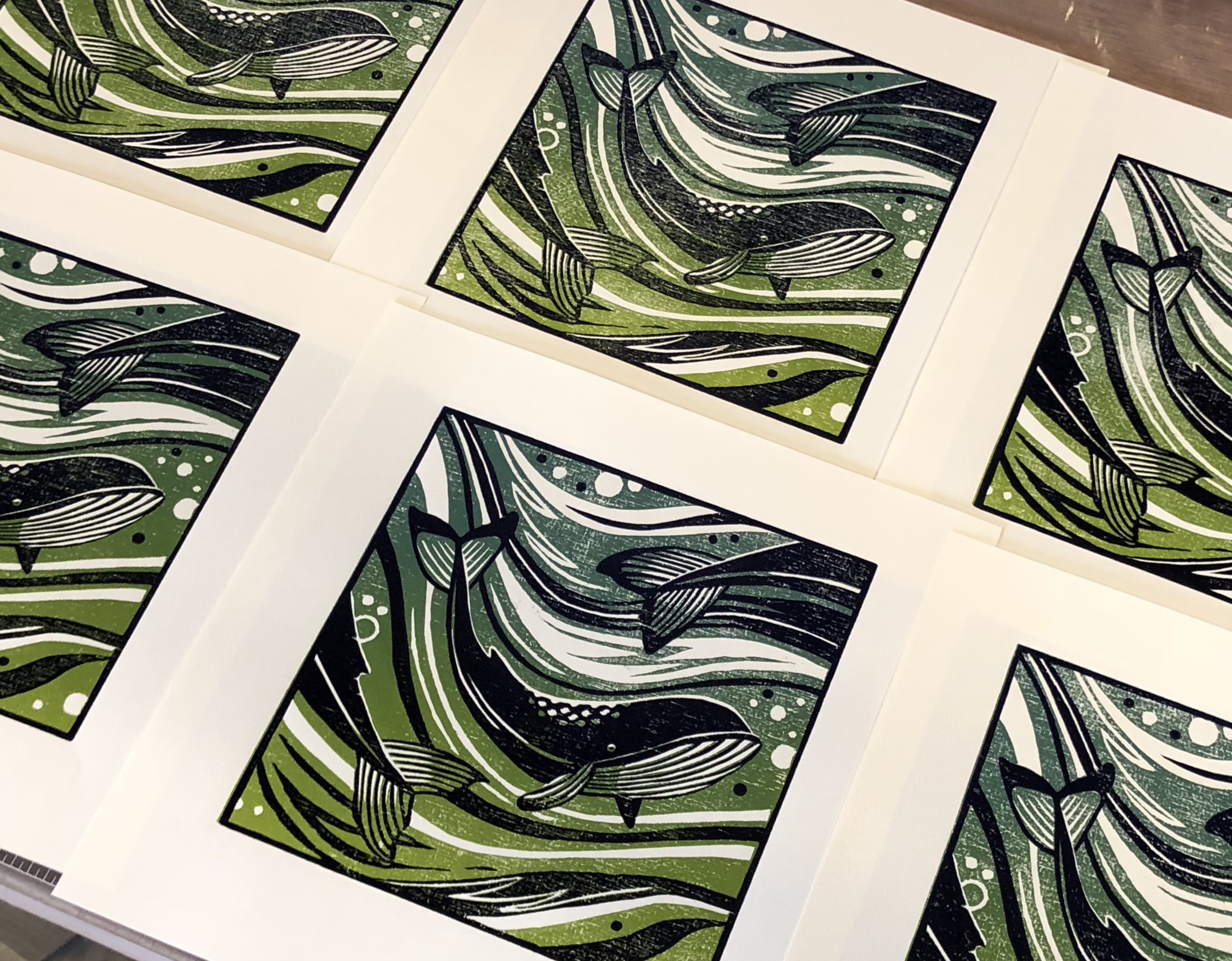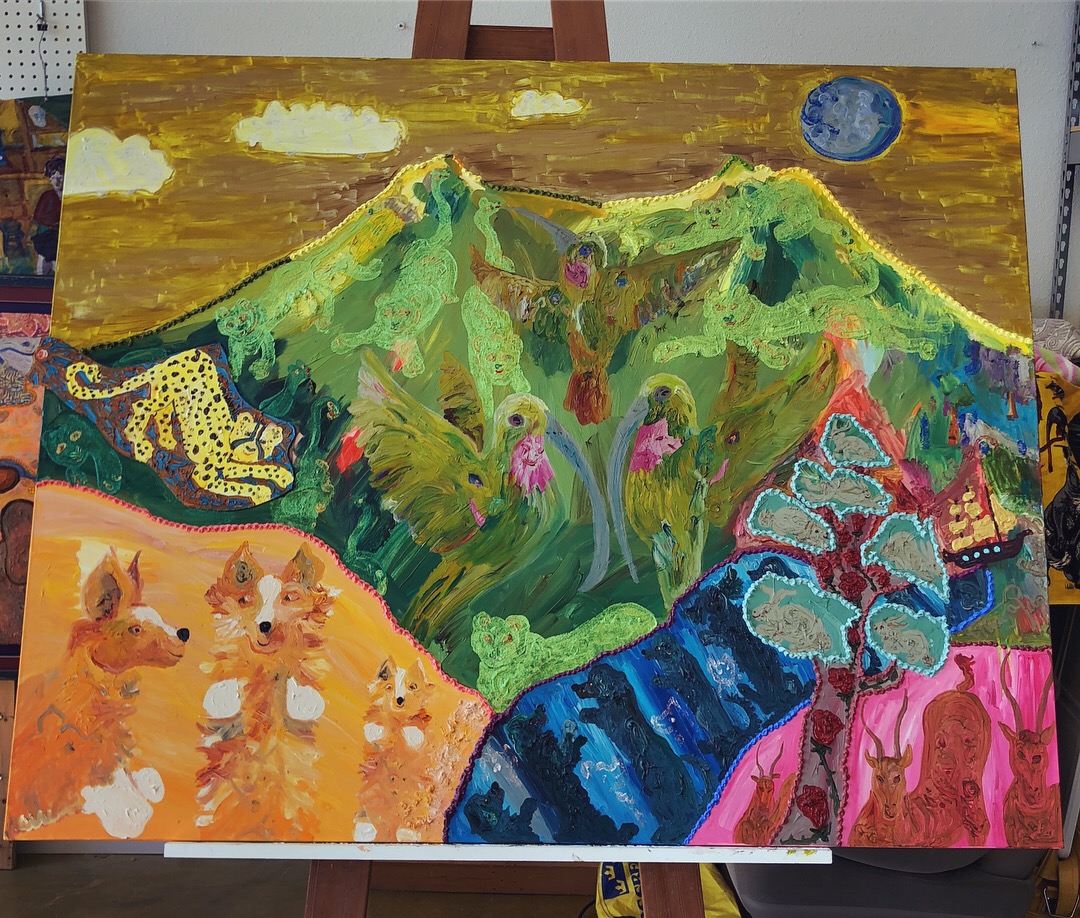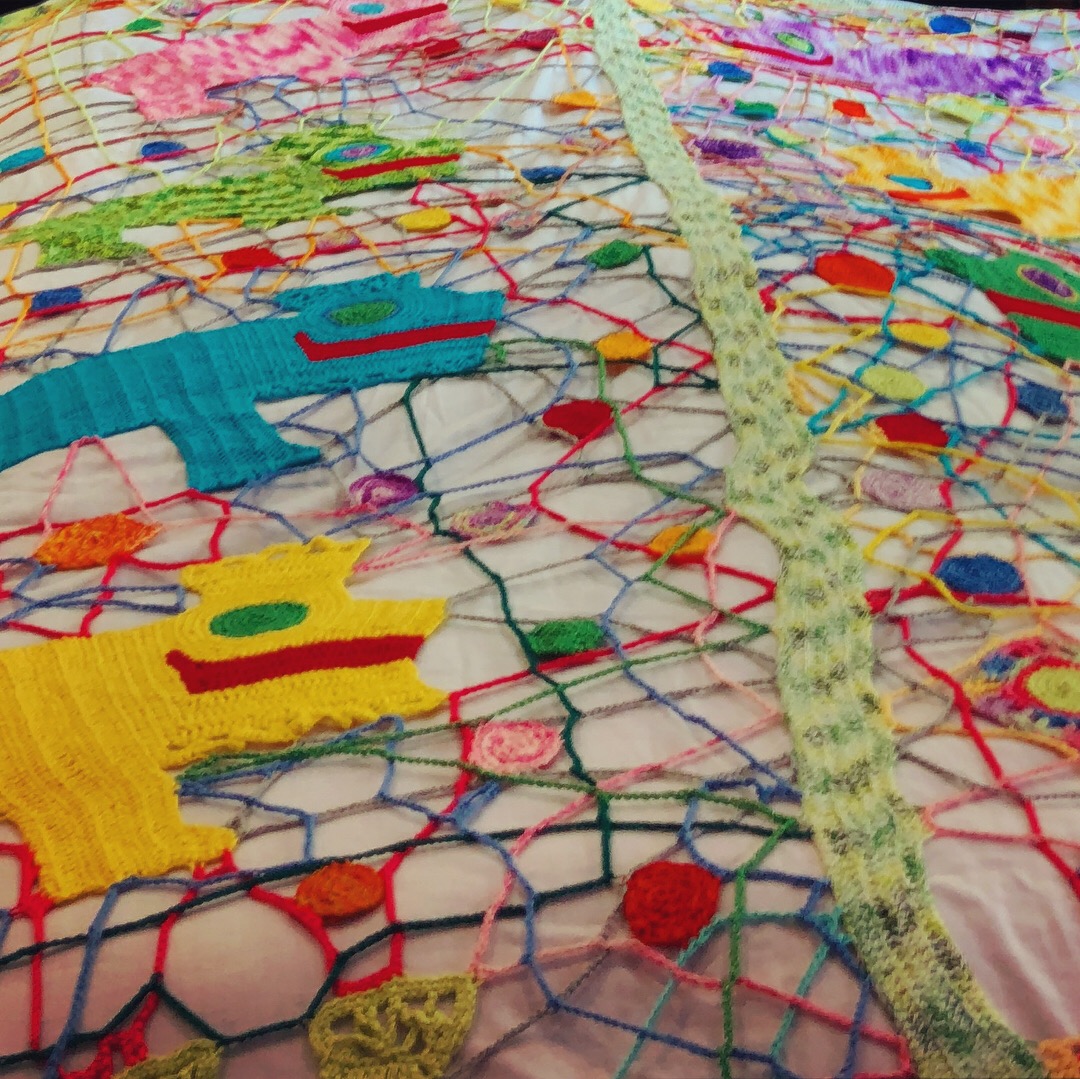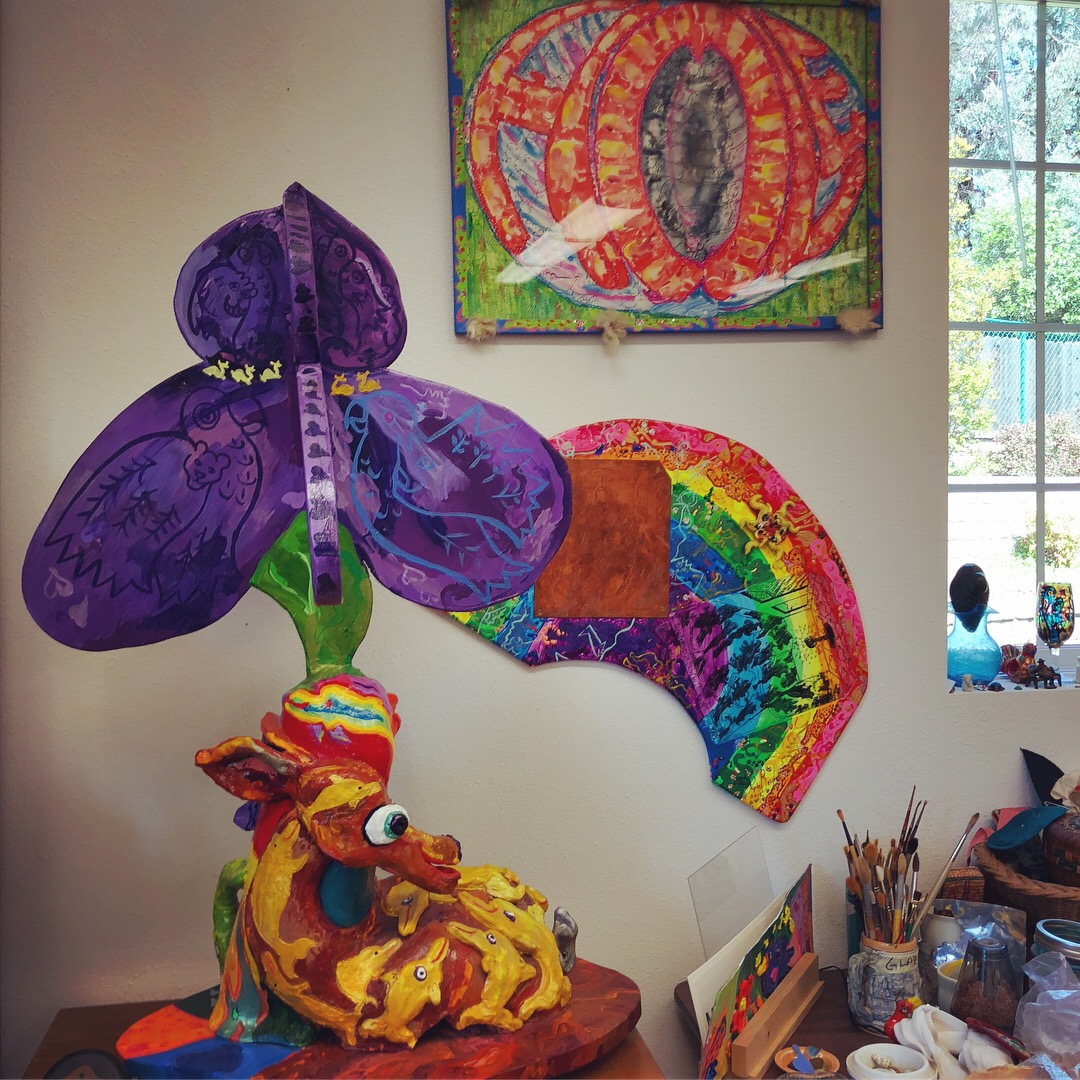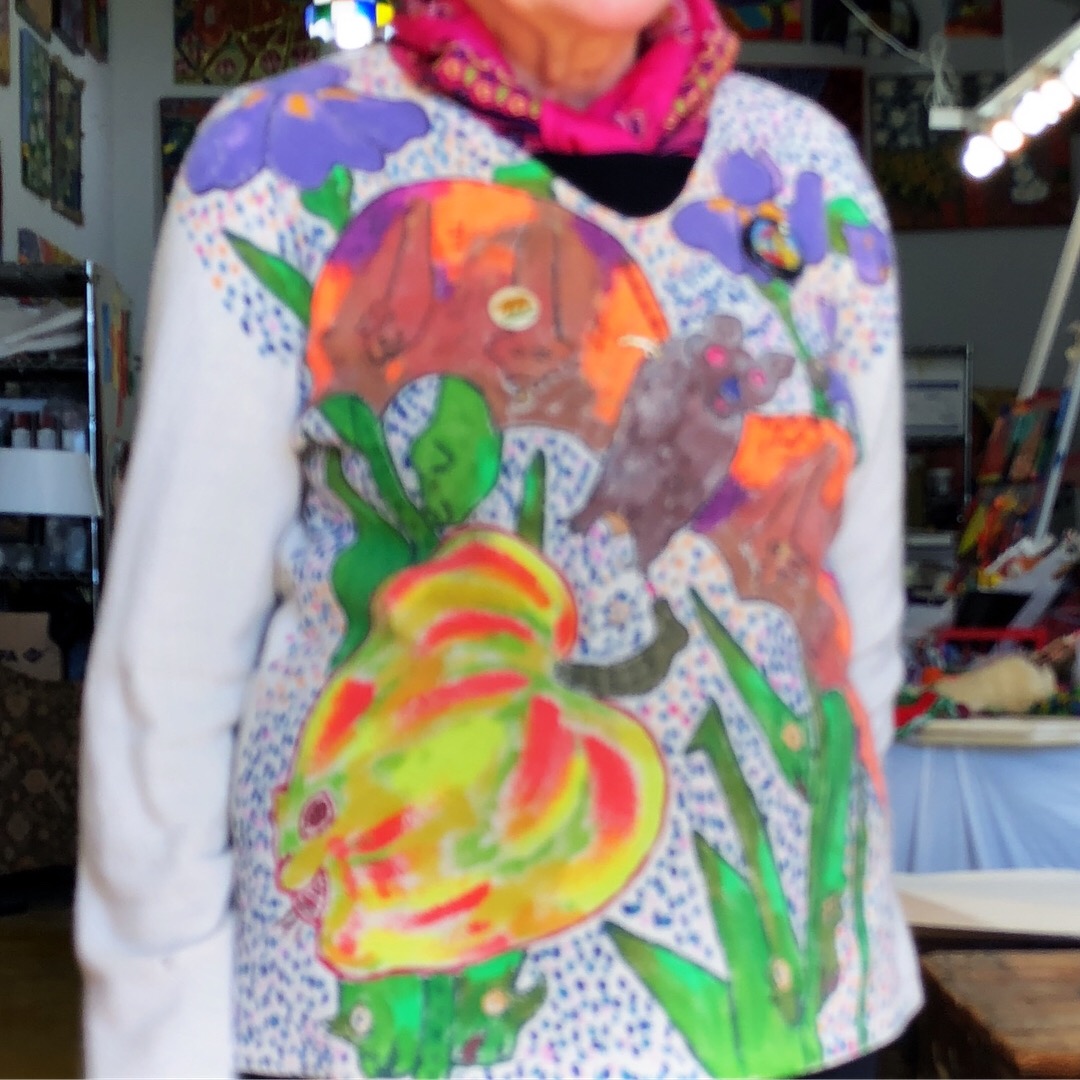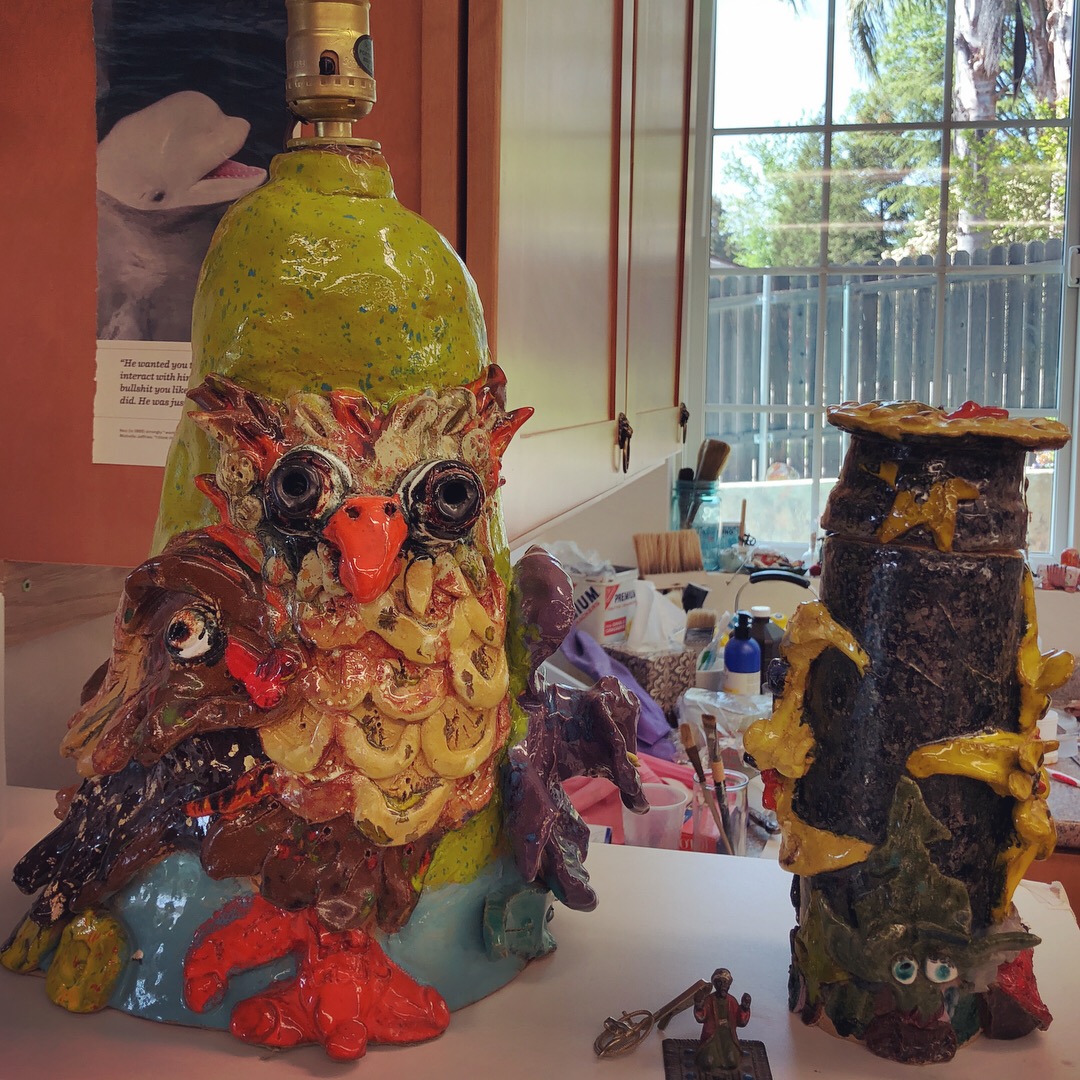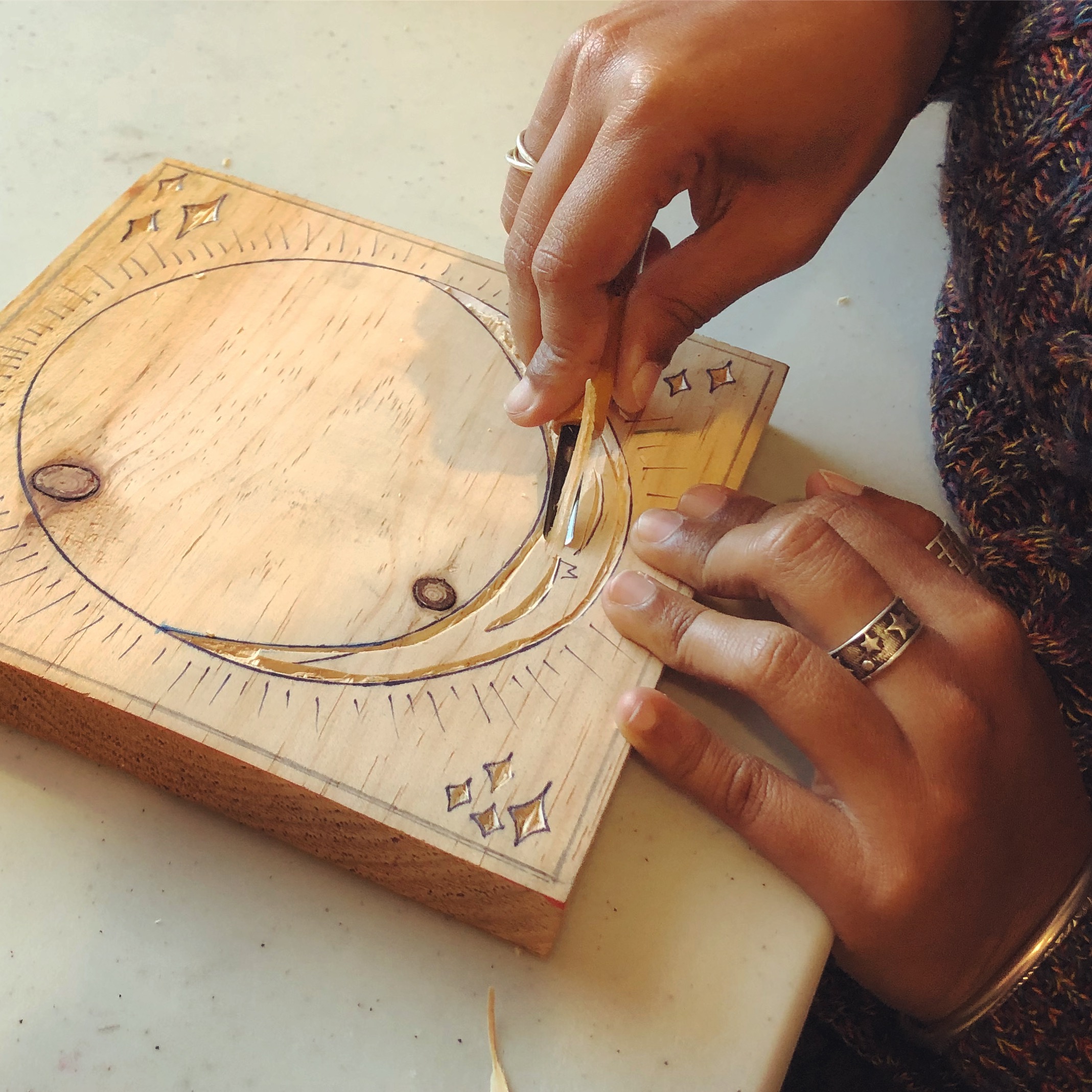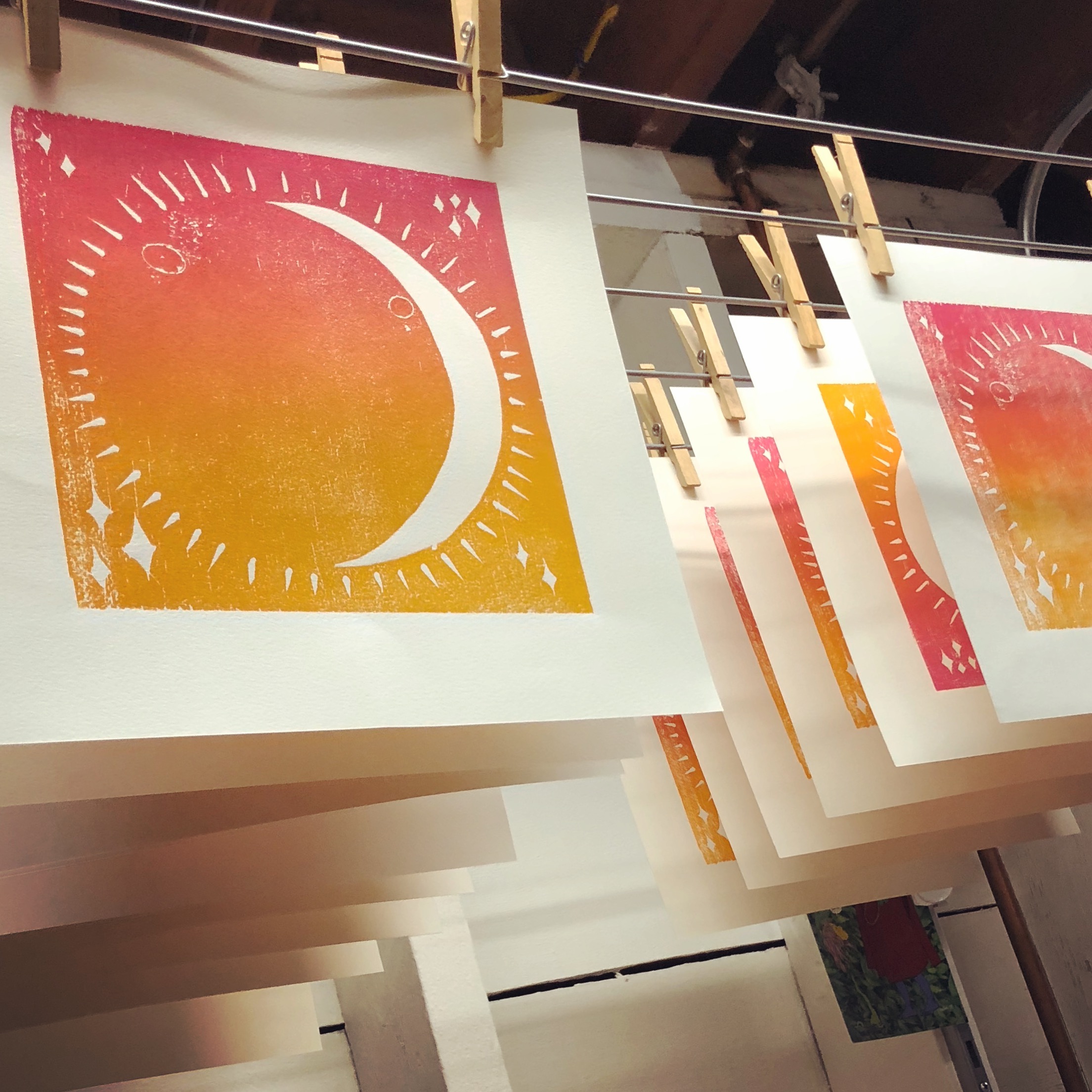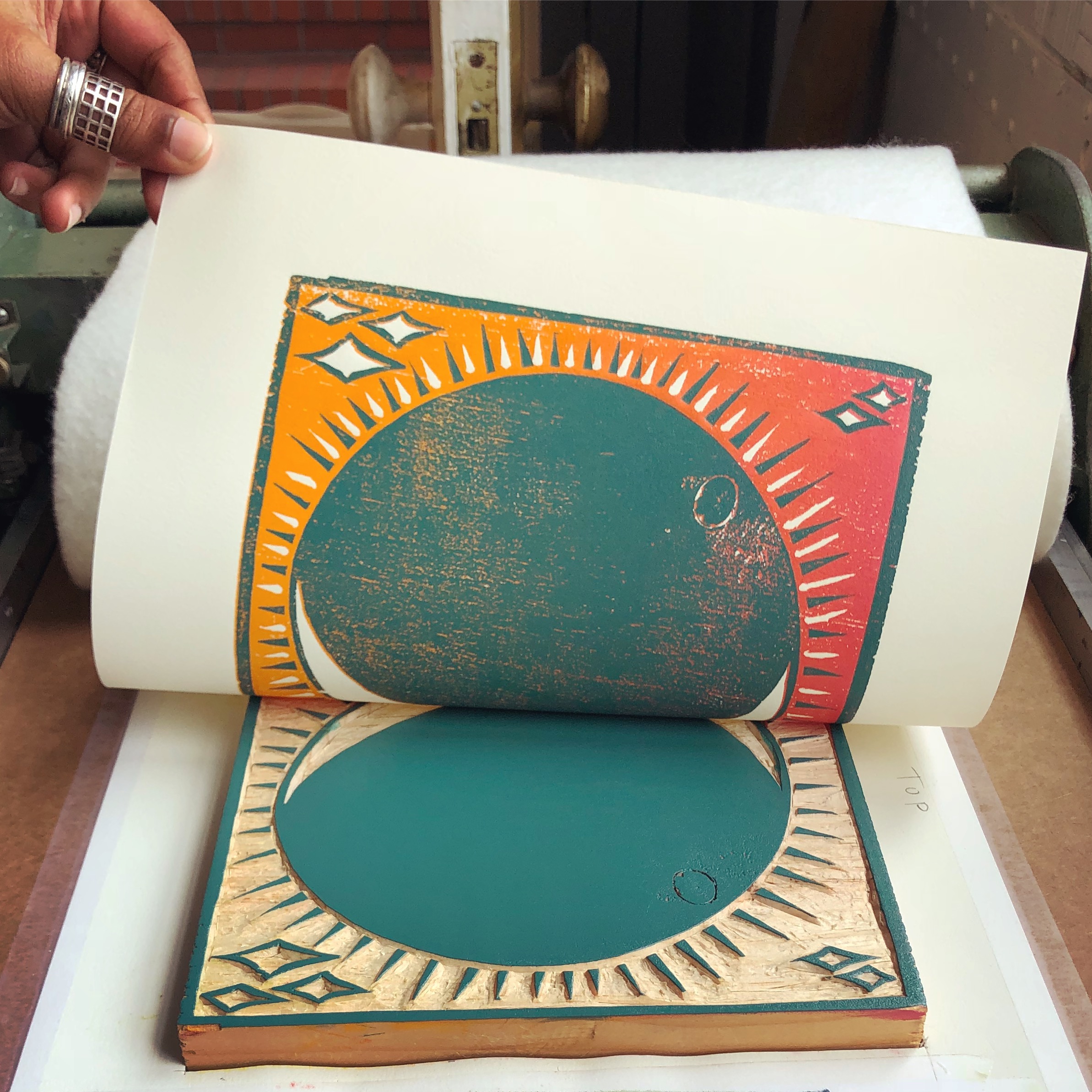Hello Dear Reader. It’s been some time since our last collaboration in our print experiment was posted. Cara LP and I began this print pre-pandemic. Sadly, we didn’t get to finish the project together in person. I finished the print on my own at Sunset Paperworks and went up to Petaluma to sign them with her. Thanks to everyone following along, and Thank you to Cara LP and all the collaborators so far for their contributions and great company.
Here’s the scoop on the latest print in our collaborative print experiment with Cara LP.
We began with a small stamp reduction print. We drew our images and transferred the images to safety cut stamp material. First we carved our what we wanted to be paper white. Then we printed our first color, Pink. After printing about 20 papers with stamp ink. We went back to the same safety cut stamp block and carved out what we wished to remain pink, leaving in tact what we wished to print Green. We eye balled the registration and printed the second color Green over the pink.
Can you tell us a little about your experience creating the “Lupine-Aligned, Reverse the Curse” woodcut reduction print at Sunset Paperworks? What is it about to you? How did you come to this visual? What were some things happening that influenced this print? We started working on the print pre-pandemic, so it felt like daytime vacations for workshopping art and seeing friends. I was in the midst of writing song lyrics more or less about accepting the shadow self through the experience of werewolf transformation. So naturally, with loving to explore a theme through different mediums, that’s the subject that was on my mind. But we also narrowed it down so quickly because you already had your own longtime thoughts about female werewolves. It was so effortless for us to riff on that concept, and visually I was excited to tie some thread to your world of past creatures and female figures that appear in your work. I had first started the song lyrics to work through some negative feelings, and the print, to me, represents the end of the story segment: it turns into something positive and beautiful. There’s some duality going on in my head when I look at the finished image. I see it as two sides to one being internally at peace, but also externally in harmony with nature and the animal world.
Once we completed our small stamp reduction print, we began collaborating on the image for our woodcut reduction print. We talked, drew, ate, drew, and drew until an image fully formed based on our ideas which we continued to discuss as we went along.
What are your thoughts on collaboration? Are there things that came out of the collaborative process that would not have happened working alone? Collaboration can be really expansive by exploring new perspectives and utilizing skills outside your own range. That definitely rang true with this print. To start, I had zero exposure working in the woodcut reduction medium, so how lucky to utilize all your years of experience. I wasn’t limited to my carving skills, and composition ideas were vetted in real time by all your hands-on knowledge. Then design-wise, it was really fun to see the artwork take shape through a melding of our interpretations and styles. There were lots of texture ideas I wouldn’t have thought of. And it would have taken me longer to give our werewolf face the right grit… my first sketches kept coming out so cuddly haha.
How do you benefit from collaborating with others? Aside from hopefully arriving at a better place together and getting to expand my skill set, collaborating tends to provide a sense of safety-in-numbers. The validation of ideas builds confidence in what I’m working on. And then the finished project has built-in buy-in, which helps alleviate natural moments of self-doubt. It’s also fun to widen my world and associate with someone or something I really believe in.
When we had our image finalized, we transferred the graphite drawing on tracing paper to the wood block and began carving out when we wanted to be paper white, leaving in tack the wood parts that would take ink to print our first color, a pink red gradient or rainbow roll.
What is the significance of the pink color...what were you thinking about...or what does it signify to you? We got the inspiration for the pink color during our very first get-together to create the rubber stamp reduction test prints. We were exploring vintage magic imagery, and a 1925 poster in one of my magic books really jumped out at us. The poster features a red winged devil lifting a dangling ghostly figure above a pink starry sky. The red and pink are bold but muted, and it’s striking to see pink used in such a dark themed way. So we were interested in the color scheme first, and it stuck with us once we had our subject. Historically, pink wouldn’t have been considered feminine at the time of the magic poster. It was considered a strong color linked to red. I like thinking about it as a shade of red, always representing strength, but with associations from each end of the spectrum, from love to war. It seemed like the perfect color for our theme.
Can you tell us a little more .... Surprises? Highlights? Lowlights? Thoughts on the woodcut reduction process, printmaking or Sunset Paperworks? It’s fun to create in a workspace with amazing energy reflective of the artist, and that makes Sunset Paperworks a special place to be. Chill vibes at the bottom of a sunset stairway with a workbench perched under a sunny window. And we got to be under cat buddy Kiriko’s watch, which feels important when making art about transcendence into animal worlds.
The reduction process could be a bit of a brain puzzle rethinking positive and negative space, so it was fun to ease into it with the rubber stamp test prints first. Carving away the design in wood is an experienced job. Cutting into the rubber stamp felt similar to paper crafting and more familiar, but the density of wood actually felt more similar to cutting into metal with a hacksaw for jewelry making. Been a while since I’ve honed those skills. I think there’s a lot of nuances to learn with how the wood reacts to angles and pressure and specific tools.
The highlight was the excitement of collaborative creation that saw our ideas transpire with each session. Other highlights were great company, great food breaks, and walking around the coyote grounds of San Francisco. Lowlights were the pandemic & wildfires interfering with our workflow and momentum right as we were on a roll. Surprises were when I realized I left my bag on a SF street bench AFTER we returned back to the studio, but by some miracle it camouflaged itself and we were able to go back and retrieve it haha! THANK GOODNESS! What a relief that was.
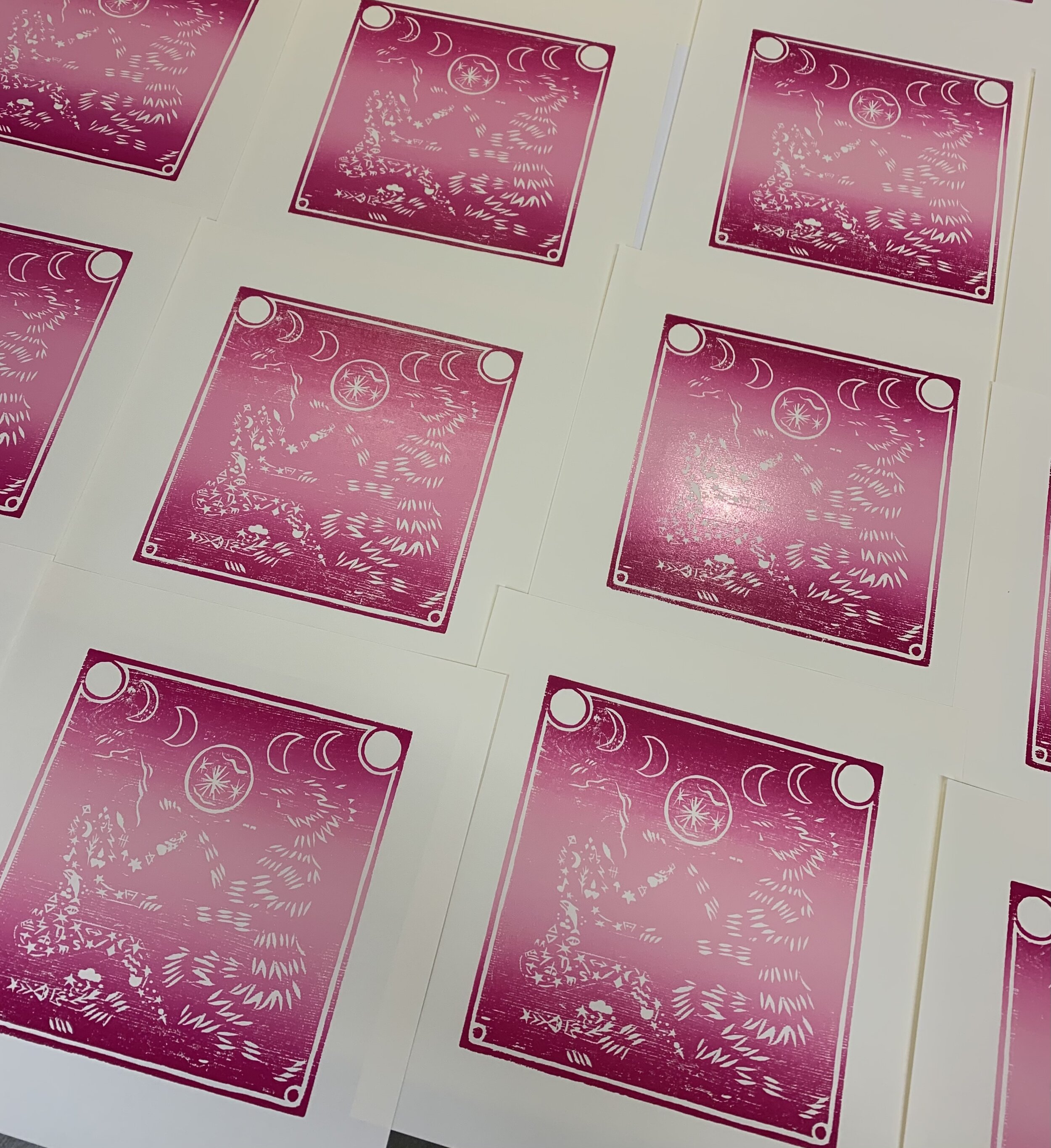
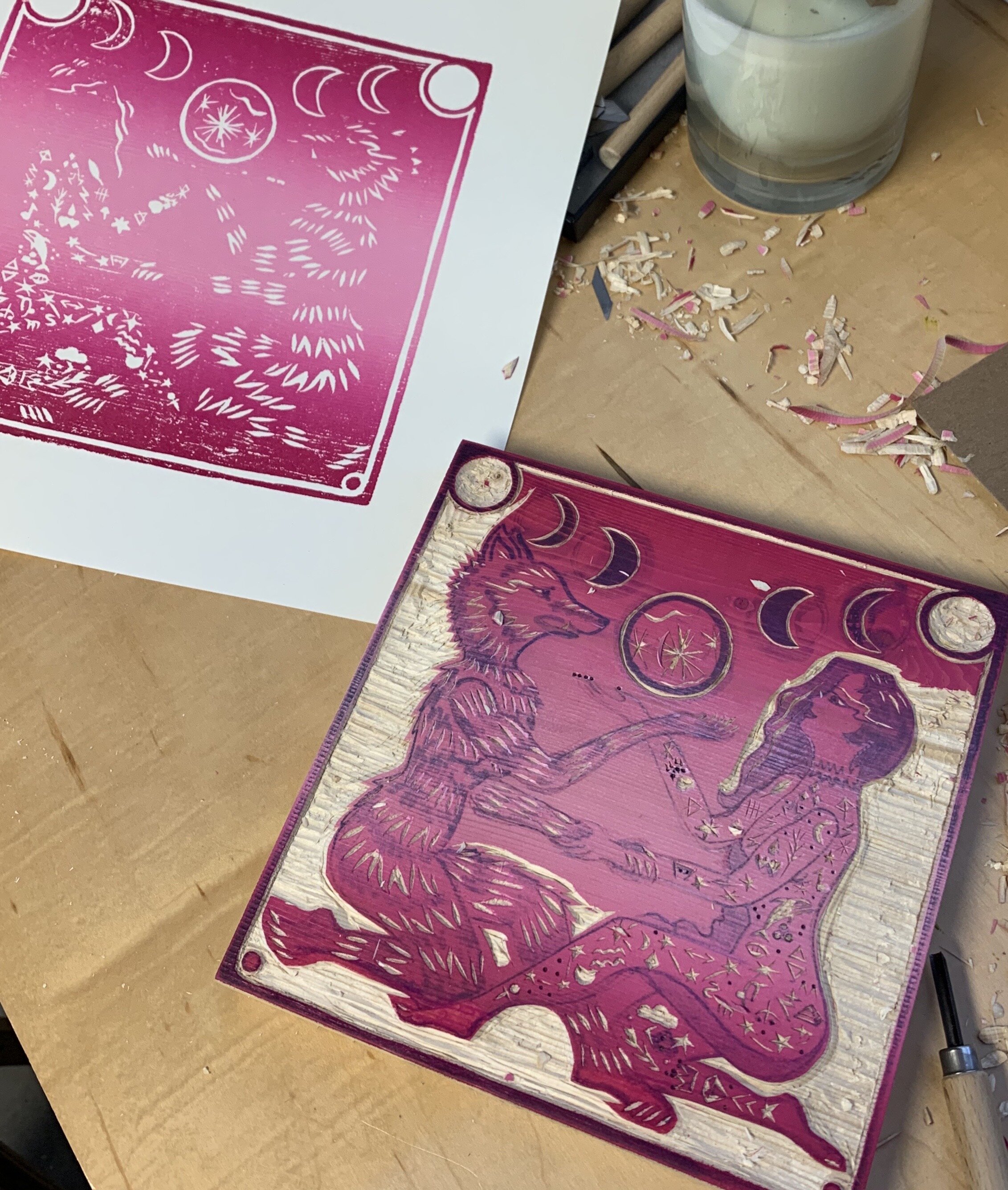
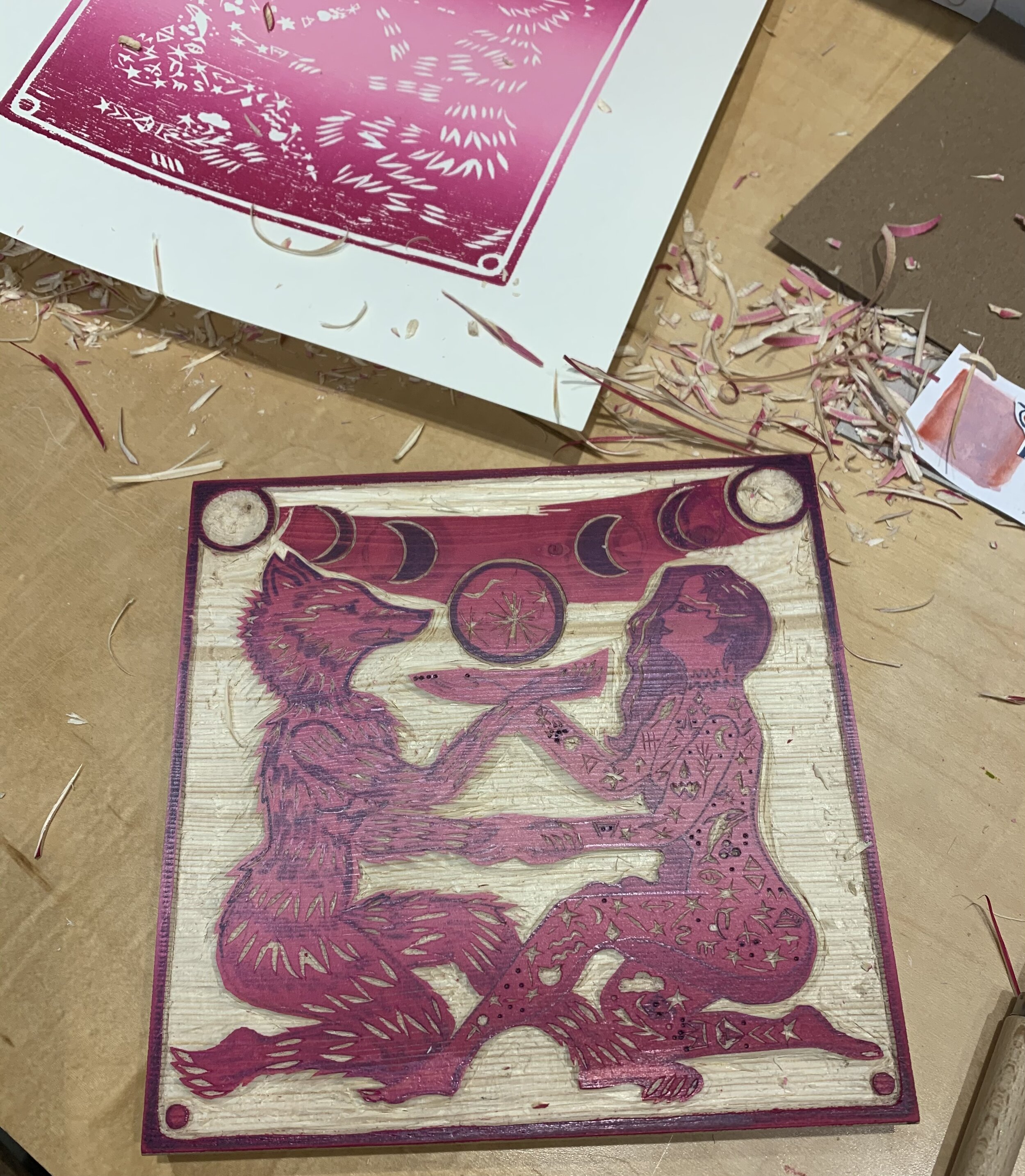
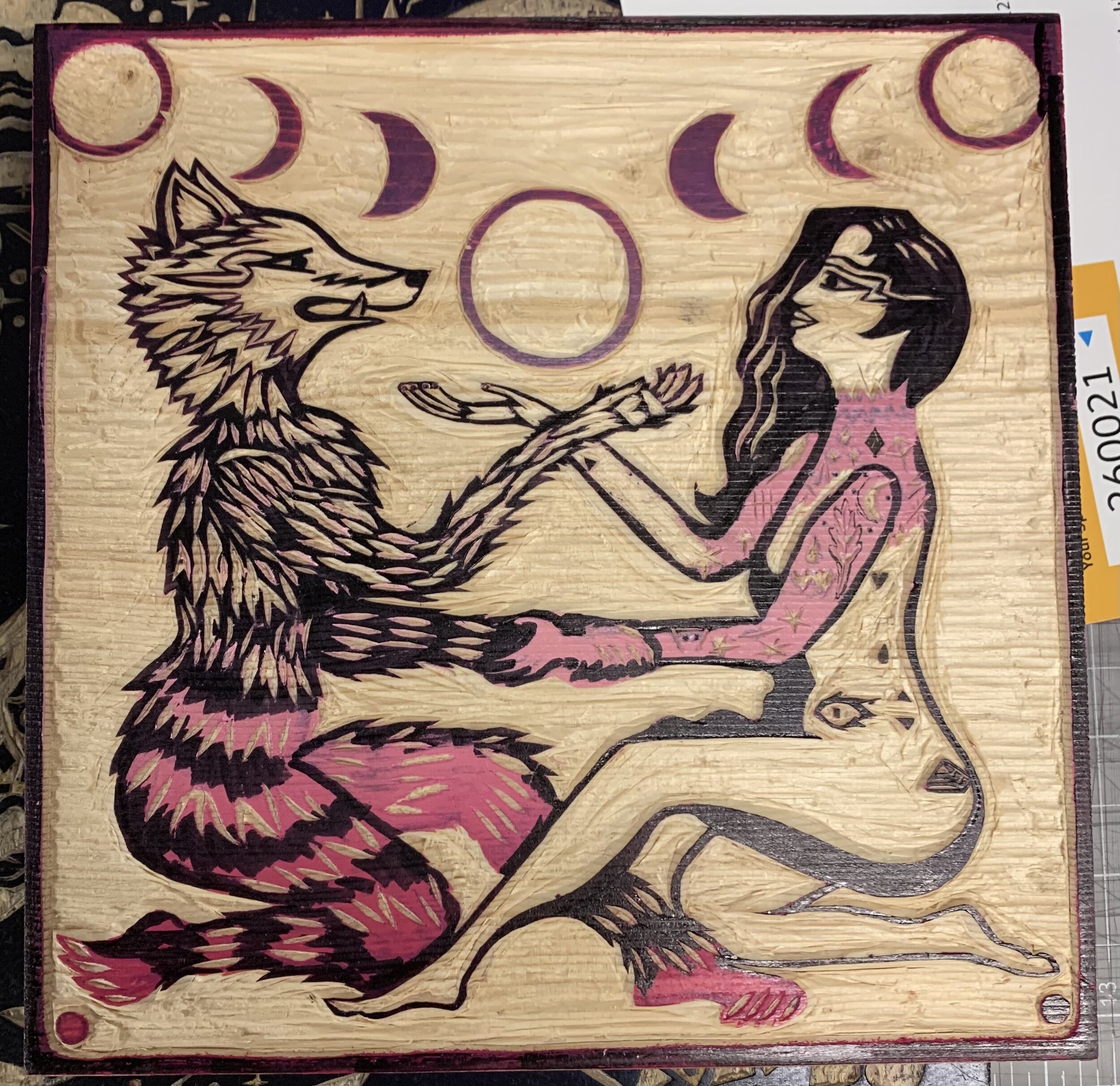
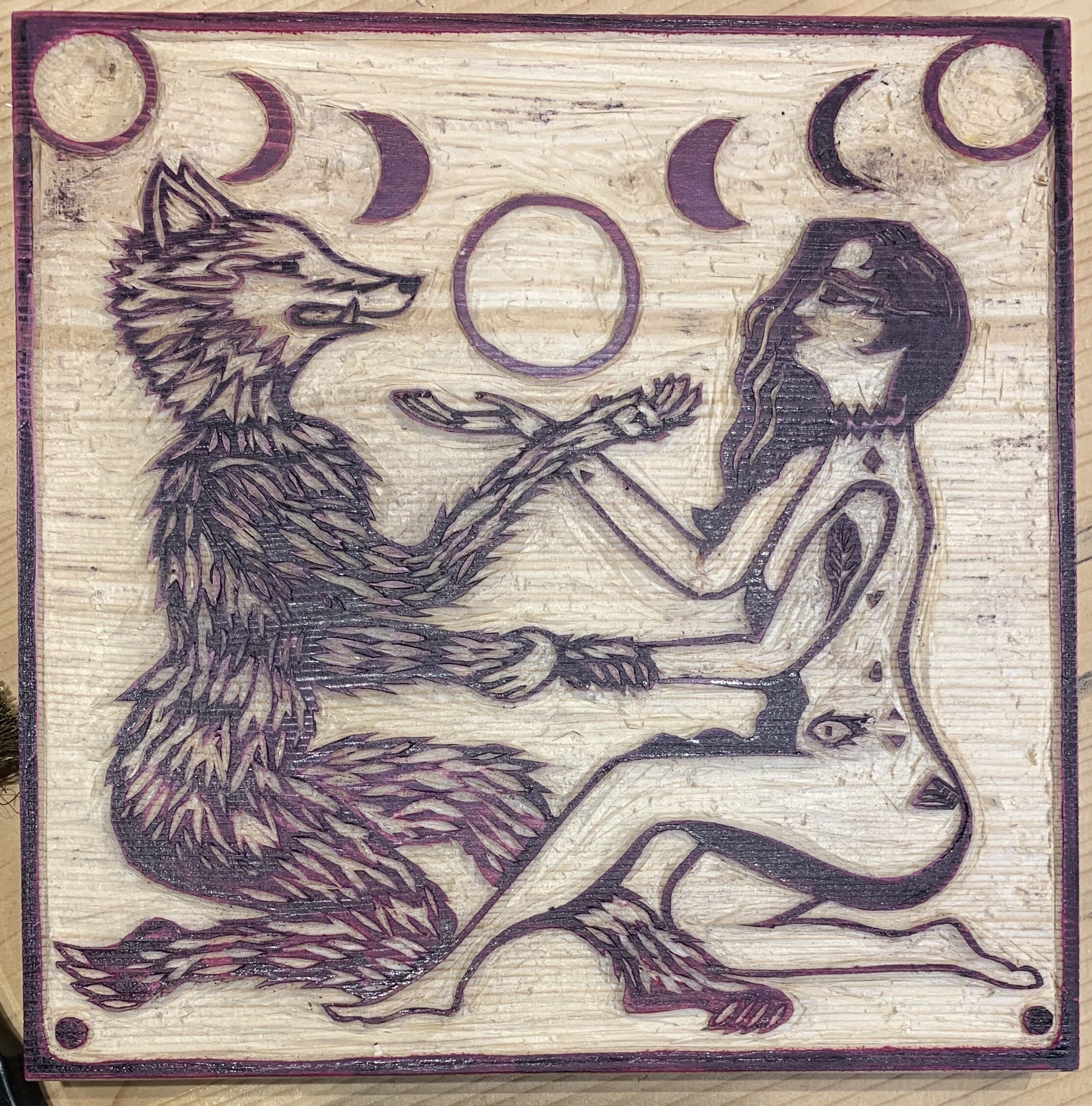
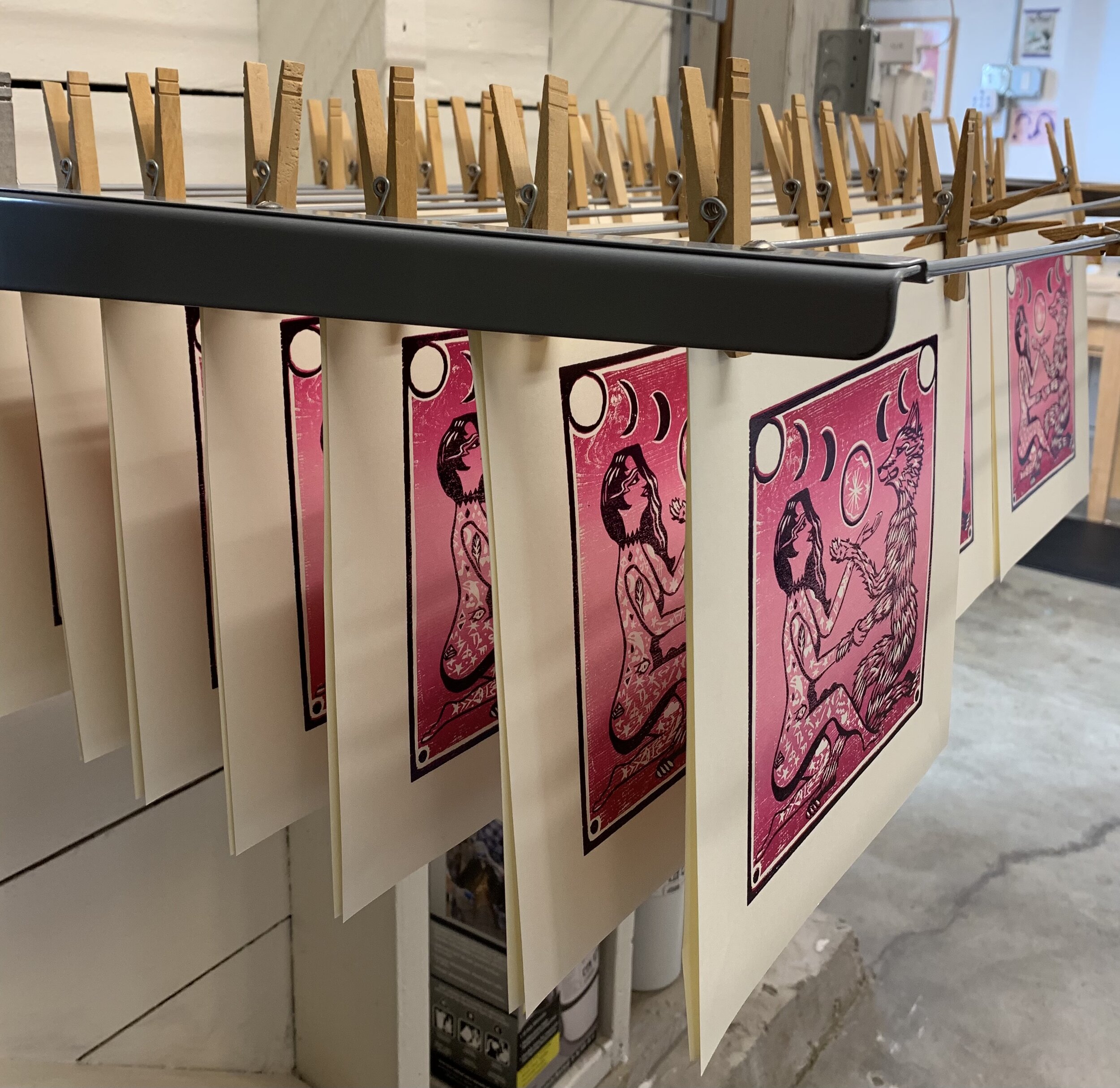

After printing more than our goal of 28 prints of the first pink color, I began carving into our block for the next color. I removed any part that I wished to remain pink and left in tact the wood to take the ink for our second and final color, a dark purple. Finally I printed that over the pink and our image was complete.
This print was unique, in that it was happening in tandem with multiple Northern California wildfires and a pandemic, so we didn’t get to work on the carving much or the printing at all together. Do you have any questions for me regarding what I did without you? Thankfully I have experience with other various printmaking techniques and have been to quite a few of your art shows hosted at your past studios, so the process wasn’t a complete mystery. But I definitely would love to see you do a print run and learn how you register the colors. I know you’ve worked with rolling color variants for a long time, so it’d been fun to see you working the ink roller again too. I really wish we could have carved more and printed these together. I hope we can do another print together post pandemic. Thank you again for participating in our Sunset Paperworks experiment …I miss you guys.🖤
"Lupine Aligned, Reverse the Curse" Woodcut reduction print. Image 7" X 7". Paper 10" x 10". Edition of 28. Carved and printed by Cara LP and Nathalie Roland in San Francisco, CA. Available for purchase here. Read more about Cara LP here.

